- Skip to primary navigation
- Skip to main content
- Skip to primary sidebar
- Skip to footer

Normandie Lovers
To awaken your senses in Normandy - Claire et Manu’s Blog

Visiting the 5 D-Day landing beaches (in Normandy)
by Claire ROBINSON , Region Lovers | September 7, 2023 | no intrusive ads, no sponsored content, just some affiliate links - if you use them, we get a small commission (read more)
Sand, dunes, cliffs… but also bunkers, sculptures and museums. The 5 D-Day landing beaches are a must for any trip to Normandy. Their story is both heartbreaking and inspiring. Each of these beaches now has memorials and museums to remember. Here is our complete guide to prepare your visit with:
- Omaha Beach
- Sword Beach
BEFORE OUR TIPS + PHOTOS HERE ARE OUR favorites

Our favorite car rental platform with great offers: DiscoverCars

Must-See : Book your tickets for the Caen Memorial Museum Excursion : Visit the D-Day landing beaches from Paris

Our favorite places to stay: Hotel Domain de Bayeux , elegant and central – see photos and availability Hotel Domaine d’Utah Beach , for the north – see photos and availability Hôtel Ferme de la Rançonnière , the charm of the countryside – view photos and availability
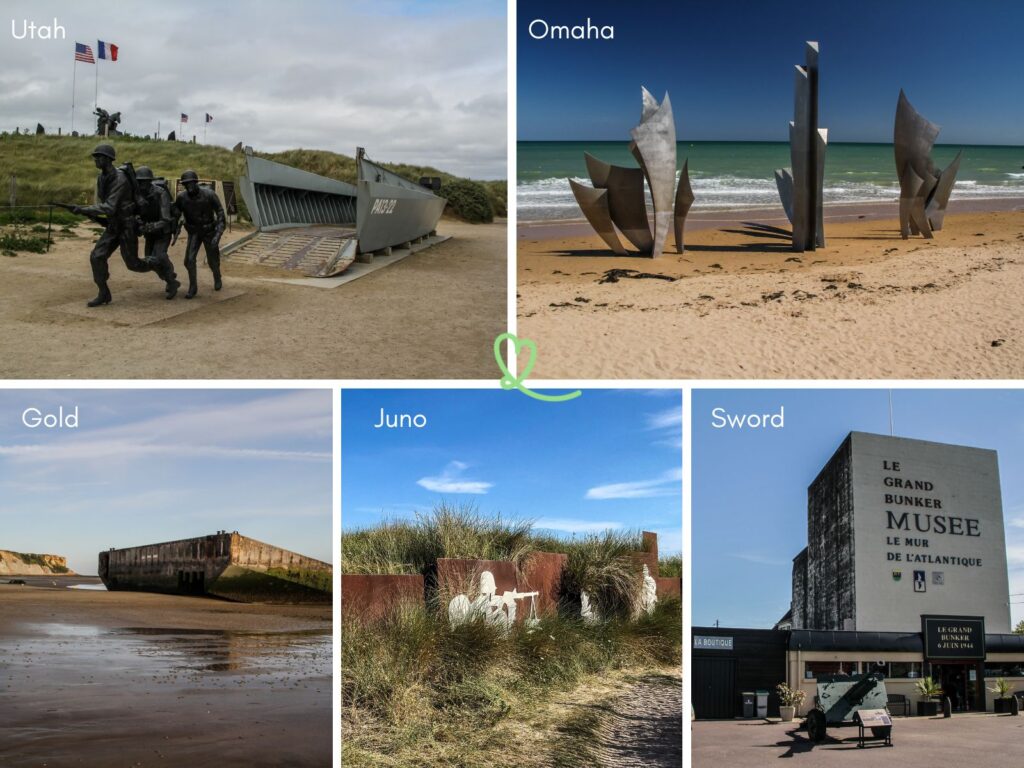
This guide is completely independent , based on our experiences. We visited the area anonymously, making our own choices, and paying all our bills in full.
Visit the D-Day landing beaches in Normandy : Map + tips
The 5 landing beaches – map and introduction.
Operation Overlord, a.k.a. the Normandy invasion, began on June 6, 1944. 5 main areas were strategically chosen by the Allies on the Normandy coast. They cover a section of more than 80km (50 miles). Code names have been given:
- Utah Beach, the easternmost beach where the American troops landed
- Omaha Beach where the American troops landed
- Gold Beach where the British troops landed
- Juno Beach where the Canadian troops landed
- Sword Beach where the British troops landed
Here is a short introduction video of each track:
The Battle of Normandy that followed lasted until the end of August.
Here is a map to help you locate them:
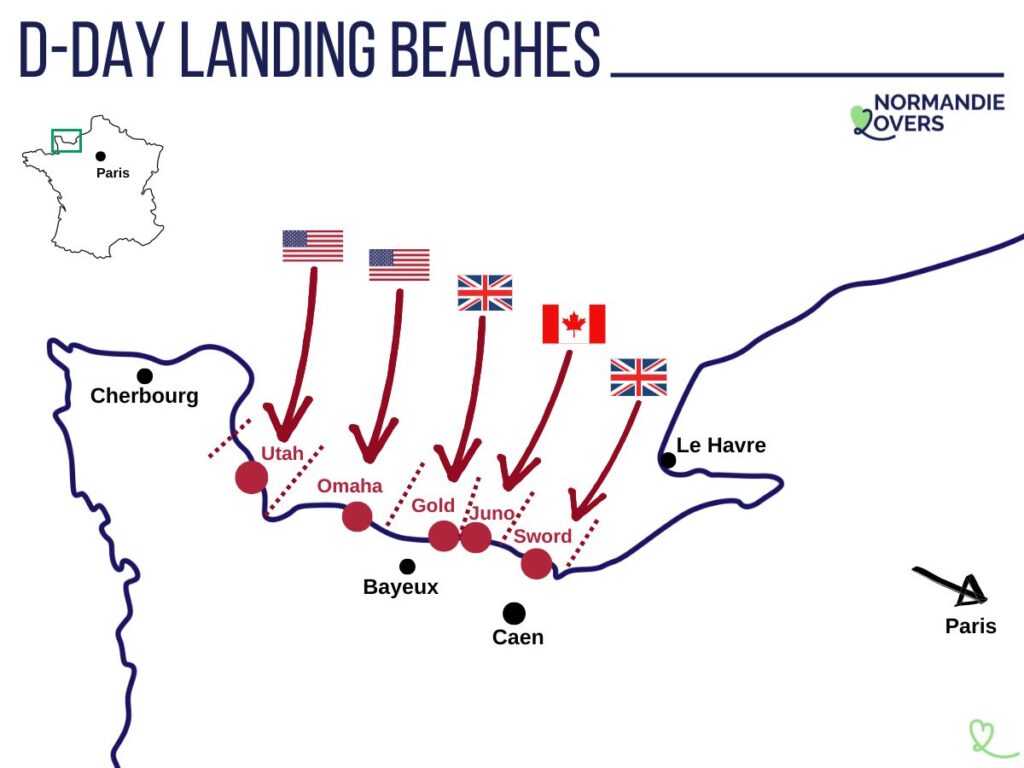
Which D-Day beach to visit?
Around these 5 beaches, you will find cemeteries, batteries, memorials and museums. They are all fascinating to discover. Depending on your family history, you can choose the one that interests you the most. And if you don’t know about special family ties, here are our opinions to help you choose:
- Utah Beach is the most fun : an open air museum, a battery and the new D-Day Experience not far away
- Omaha Beach is the most emotional : the magnificent sculpture on the beach, the intensity of the American cemetery. We didn’t expect to feel so many overwhelming emotions as we stood in front of all these crosses lined up.
- Gold Beach is the most fascinating visually: the remains of the temporary harbor that appear at low tide, the view from the cliffs…
- Juno Beach is the quickest to visit – if you’re short on time, the beach and museum are right next to each other
- Sword Beach is the most strategy oriented – no beach experience here, but the Antaltic Wall Museum in the Bunker is a unique experience and the Pegasus Memorial tells us more about this critical victory.

How to visit the D-Day beaches in Normandy?
We do not recommend public transportation to visit the landing beaches. There are some local buses, but not very frequent and with many stops for the locals. Your best options are:
- By car Visiting by car gives you a lot of flexibility in choosing where to go and how much time to spend at each place. You can rent at CDG or Orly airports, or Caen (see our tips ) or your point of arrival in France – note that Bayeux has very few choices (read more ).
OUR ADVICE FOR RENTING A CAR IN Normandy
- Compare prices on our preferred platform: DiscoverCars – one of the best rated sites.
- Choose a car that is comfortable enough (distances can be long) but compact (some parking lots and villages are narrow).
- Think of the complete insurance (some roads are tortuous and narrow).
- There is a lot of demand, book it early .
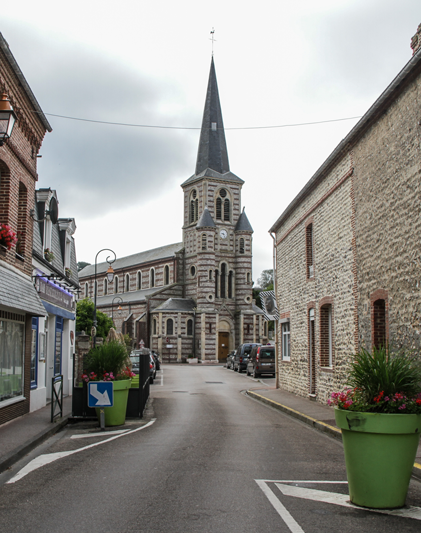
How long to visit the landing beaches
Let’s start by discussing a little bit about the driving times between locations. This will give you an idea of what is feasible:
- From Caen to Bayeux = 30 min drive
- From Bayeux to Utah Beach = 50 min
- From Utah Beach to Omaha Beach Beach = 45 min
- From Omaha Beach to Gold Beach = 45 min
- Gold Beach to Juno Beach Beach = 15 min
- From Juno Beach to Sword Beach Beach = 30 min
- From Sword Beach to Caen = 20 min
- Paris to Omaha Beach = 3h30
You can get an overview in one day. But for a more complete vision and to immerse yourself in the history we recommend 3 to 5 days, or even a week if you are passionate.

Which city is the most convenient to visit?
The most convenient cities to stay and visit all the landing beaches are :
- Bayeux, a charming little town inland see the best hotel offers
- Arromanches-les-bains, central and at the seaside, it is at the level of Gold Beach see the best hotel offers
- Caen is the largest city in the area see the best hotel offers
STAYING NEAR THE D-Day beaches
Option 1: Bayeux
The most practical option, in our opinion, is to base ourselves in the town of Bayeux. We recommend..:
- Hotel Domaine de Bayeux in an 18th century mansion – see prices, photos and availability
- see all top rated accommodations in Bayeux

Option 2: in the countryside
In the countryside around the D-Day beaches, you will find beautiful buildings with a lot of charm: farms, manors…
- Hotel Domaine d’Utah Beach – prices, pictures and availability
- Hotel Ferme de la Rançonnière – prices, pictures and availability

Option 3: next to one of the beaches
If you’re looking for a seaside holiday or are fascinated by one of the beaches, you can choose a more specific hotel:
- Hotel Villas d’Arromanches in Gold Beach Beach – prices, pictures and availability
- Hotel La Sapinière in Omaha Beach Beach – prices, pictures and availability

See all our advice on where to stay to visit the beaches
1. Utah Beach
The landing at utah beach – facts and figures.
Utah was the westernmost beach of the landing. It covered the section between Pouppeville and La Madeleine with the sub-areas Tare Green, Uncle Red and Victor. The section is 3 miles long (about 5km). 23,000 American troops landed here. Casualties were the lowest with 187 men killed or wounded.

Visit to the beach
The beach is easy to visit with a small dune, viewpoints and a large stretch of sand at low tide.

Barges and mannequins are installed not far from the museum, which allows to visualize a little better what the landing was like. But it’s hard to imagine this peaceful view with the sounds of gunfire, explosions and all the warships in the sea.

A little further down the beach, there are also some bunkers.

Museums around Sainte-Mère-l’Église
The main museum is the Utah Beach Landing Museum right on the beach. It tells in 10 sequences the events of D-Day. It is a chronological journey from preparation to victory. Open all year round

But the region is full of other museums and sites:
- The Airbone Museum with a superb scenography to understand the experience of the parachutists on the day of the landing Closed in December and January except during school vacations
- The D-Day Experience : an immersive museum with flight simulator Open all year round
- The Azeville Battery with an impressive underground complex Open from April to November 11
- The Normandy Victory Museum , about the Battle of the Hedges Open from April to October and partially in winter (weekends and vacations)
See more activities at Utah Beach .

Practical information to visit
Utah Beach is the most remote and scattered of the beaches. The museums are along the beach, in Sainte-Mère-l’église and in Carentan. You should plan at least one day but 2 days will allow you to cover more places. We stayed at the Domaine Utah Beach – Le Grand Hard hotel: a beautiful 17th century farmhouse turned charming hotel, with a restaurant known for its quality meat. A great time surrounded by nature! See photos, prices and availability Otherwise, there are hotels all around Sainte-Mère-l’église – see the best rated hotels aroundUtah Beach
USE OUR GUIDE TO PLAN A DREAM TRIP TO Normandy
All the information you need for your trip:
- 8 maps that make planning easier
- 160+ pre-selected locations
- Practical advice
- 300+ photos to help you choose
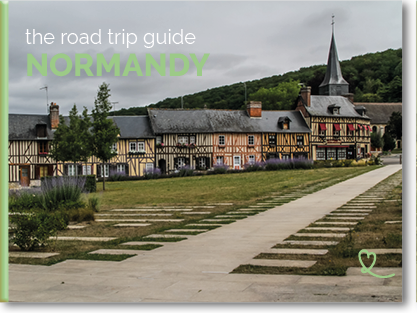
2. Omaha Beach
The landing at omaha beach – facts and figures.
Omaha, the largest, is probably the best known of the D-Day beaches. It covered the section between Sainte-Honorine-des-Pertes and Vierville-sur-Mer, with the sub-areas Charlie, Dog, Easy and Fox. The section is 6 miles long (about 10 km). 34,000 American troops landed here. Losses were highest, with 2,400 killed.

Omaha Beach is the most difficult to visualize. The beach has a promenade right on the edge and is very touristy with bathers. It is still one of the most photographed with the sculpture “The Braves”. It is composed of 3 elements: “Wings of Hope”, “Stand Up for Freedom” and “Wings of Brotherhood”. Created by Anilore Banon, it was installed in 2004, for the 60th commemoration.

The only signs of the war are the memorials and some bunker ruins.

Museums near Colleville-sur-Mer
- American Cemetery: 9387 perfectly aligned tombstones, garden, chapel, memorial, and a small museum giving the content of Operation Overlord. Open all year round
- Overlord Museum: near the American cemetery, one of the richest in terms of artifacts of the landing and the war. With a museography adapted to children. Closed in January and early February.
- The Pointe du Hoc: a strategic place of the German fortifications. The walk around the point takes you to see different bunkers above the cliffs. Open all year round
- Big Red One Assault Museum : museum dedicated to the 1st Infantry Division of the U.S. Army nicknamed “The Big Red One Open from March to November
- Maisy Battery : Battery rediscovered in 2006 with many underground passages. Open from April to September
- D-Day Omaha Museum – open from April to September
- Liberation House – open from May to September
- Omaha Beach Memorial Museum – open from June to September
Find out more about activities around Omaha Beach .

Omaha Beach is less remote but still requires a bit of a drive from Caen. The beach and the museums are grouped together, but to visit the Pointe de Hoc and the Maisy battery, you have to drive a little. You should plan at least one day but 2 days will allow you to cover more places. We stayed in Bayeux (25 min drive) at the Domaine de Bayeux: a charming hotel in the center of Bayeux surrounded by a French-style park. See photos, prices and availability Otherwise, there are hotels all around Colleville-sur-Mer – see the top rated hotels aroundOmaha Beach

MORE ABOUT THE D-Day sites
- The best landing sites to visit
- Visit the 5 D-Day landing beaches
- Where to stay – best hotels near the beach
- The best D-Day museums in Normandy
- German batteries to visit
- Car rental tips: Caen – Roissy-CDG – Orly – Beauvais
- Visit Omaha Beach
- Visit Utah Beach
- Visit Gold Beach
- Visit Sword Beach
- Visit Juno Beach (coming soon)
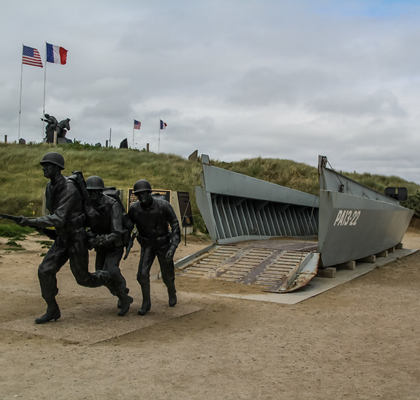
The Arromanches part of Gold Beach is one of the most visually interesting of the D-Day landing beaches. At low tide, pieces of the artificial harbor (Mulberries) appear clearly and you can approach them.

The beach of Arromanches is surrounded by cliffs. This allows to have beautiful views from the top of them.

And at the entrance to the beach, near the museum, you can appreciate several pieces of equipment.

Museums in Arromanches
- The D-Day Museum : presentation of the history of the British artificial harbor with the challenge of its construction and its key role in the victory. Closed in January
- The circular cinema Arromanches 360 : with 9 circular screens, the film “100 days of Normandy” plunges you during 19 minutes in the heart of the terrible battle. Closed in January
- The battery of Longues-Sur-Mer : a superb site on the cliffs with access to a fire command post, 4 reinforced concrete casemates and artillery pieces. Accessible all year round
- America Gold Beach Museum : dedicated to the first USA-France airmail link and the British landing in the “King” sector. Open from March to October
- Museum of underwater wrecks – open from June to September
Find out more about activities around Gold Beach .

The beach of Arromanches is very central. It is a good base to visit the landing beaches. The beach and the museums are grouped together. And the battery is only 15 minutes away. It is necessary to plan at least one day and to organize to visit the beach at low tide. We stayed at the hotel Les Villas d’Arromanches: a charming hotel in a 19th century villa on the heights of the city. A haven of peace with beautiful views of the sea. See photos, prices and availability Otherwise, there are hotels all around Arromanches – see the top rated hotels around Gold Beach

Subscribe to our Newsletter
- Get away from it all with Region Lovers’ beautiful destinations!
- Once a month
- Advertising-free
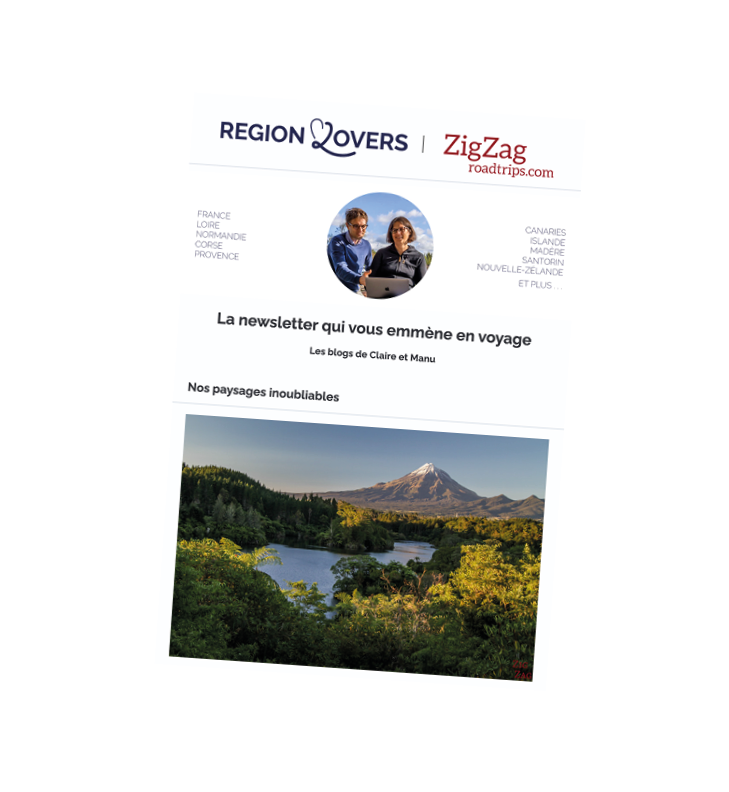
4. Juno Beach
The landing at juno beach beach – facts and figures.
Juno Beach was the landing site for the Canadian Army. It covered the section between La Rivière and Saint Aubin-sur-Mer, with the Love, Mike and Nan sub-sectors. The section is 6 miles long (about 10 km). 21,400 Canadian and British troops landed here. Casualties amounted to 1,200 wounded or killed (including 359 Canadian dead).

To reach the beach, you have to climb a small dune of white sand. The beach extends as far as the eye can see, when it is low tide.

The Cross of Lorraine is clearly visible. It was installed here to commemorate the place where De Gaulle first landed, an important turning point in the Battle of Normandy.

On the beach, not far from the museum, you can also see bunkers, tanks and representations of soldiers.

Museums in Courseulles-sur-Mer
- The Juno Beach Centre which focuses on the role played by Canadians alongside the Allied forces. You will discover a film and 5 permanent exhibition rooms. Closed in January Read more
- Beny-sur-mer Canadia War Cemetery : not far away you can visit the Canadian cemetery where over 2000 men are buried. Accessible all year round

Juno Beach Beach is surrounded by a very nice resort. It is a good base for a stay in Normandy. The museum is on the beach. And the cemetery is only 10 minutes away. You should plan for a half to a full day. We stayed at the hotel Ferme de la Rançonnière: stones and beams, everything that makes the charm of a Norman farm. See photos, prices and availability Otherwise, there are hotels in Courseulles – see the top rated hotels around Juno Beach
5. Sword Beach
The landing at sword beach beach – facts and figures.
The Sword Beach Beach landing was one of the most strategic because it was one of the main routes to northern France. It covered the section between Saint-Aubin-sur-Mer and Ouistreham, with the Oboe, Peter, Queen and Roger sub-sectors. The section is 5 miles long (about 8 km). 29,000 British troops landed here. Casualties amounted to 630 killed and wounded.

On the beach of Ouistreham, few traces of the war. It is a very large sandy beach with beach huts. On the other hand, the city is rich in museums.

Museums in Ouistreham
- Atlantic Wall Museum – The Great Bunker : Explore the former German headquarters in this massive bunker. The interior rooms have been reconstructed on all 5 levels. Closed in January and early February
- Pegasus Memorial : museum that presents the different missions of the 6th British Airborne Division, including the capture of the bridge of Bénouville called Pegasus Bridge. Closed from December 16 to January 31
- Museum No. 4 Commando : the history of French commando who joined the British troops and participate in their missions Open from April to early November
- Merville Battery: a German battery transformed into a museum with an excellent museography around bunkers, tanks, planes… Open from mid-March to mid-November
- Radar 1944 Museum (in Douvres-la-Délivrande): installed in the former German detection station, the museum presents the life of German soldiers during the occupation of Normandy as well as the history of radar. Open from April to mid-November
- And several cemeteries : La Délivrande, Hermanville, Ranville
Find out more about activities around Sword Beach .

Sword Beach Beach is in Ousitreham, a seaside resort with a huge beach. The museums are close to the beach. The Merville battery is 20 minutes away. Douvres-la-Délivrande is 20 minutes away. You should plan at least one day but 2 days will allow you to cover more places. There are many hotels and rentals in Ouistreham – see the top rated hotels around Sword Beach
Normandy beaches – D-Day in numbers
Just over 156,000 men landed on the beaches of Normandy.
The allied troops arrived
- Paratroopers: over 23,000
- By sea: over 133,000
The soldiers disembarked by nationalities
- Americans: approximately 73,000
- British: approximately 62,000
- Canadian: approximately 21,000
- and also soldiers from Belgium, Norway, Poland, Luxembourg, Greece, Czechoslovakia, New Zealand and Australia.
- And more than 170 French commandos
Casualty estimates – how many died on the beaches of Normandy
- Number of allied losses on June 6 at midnight (killed, wounded, prisoners…): more than 10 000
- Number of German losses on June 6 at midnight (killed, wounded, prisoners…): estimated between 4000 and 10000…

The equipment
- Support aircraft: over 11,000
- Combat ships: more than 1200
- Landing ships; over 4,000
- Merchant ships: over 800
- The ships were 80% British and 16% American
Frequently asked questions about beaches
Landing beach in 1 day.
If you only have one day to visit the D-Day landing beaches, it is best to choose one of the 5 beaches described in this article according to your interests:
- Omaha is the most emblematic of the beaches with the sculpture and the American cemetery
- Utah or Omaha for the Americans
- Juno for Canadians
- Gold Beach for the British
- Gold Beach for those interested in temporary port engineering
- Sword Beach and Utah Beach for the best museums (in our opinion)
What was the bloodiest beach on D-Day?
The losses on Omaha Beach were the worst on D-Day. American troops lost more than 2400 soldiers who were killed, wounded or taken prisoner.
Are the beaches of Normandy still stained with blood?
No. Without the memorials, bunkers and cemeteries, it is impossible to imagine what happened on these beaches in 1944. These are now beautiful sandy beaches where people swim in the summer.

Can we take sand from the beaches of Normandy?
No. As in many other countries, it is illegal to take sand or pebbles from French beaches.
Visit the D-Day landing beaches in winter
You can visit the D-Day landing beaches in winter. The winter atmosphere is more conducive to introspection on their history than the summer crowds… Please note, however, that almost all museums close at least in January and early February. Closing times depend on the museum. See our article on museums . However, the beaches and many of the bunkers remain freely accessible.
Films on the D-Day beaches in Normandy
The Longest Day (1962) A very realistic account of the landing at Omaha Beach. Take a look at it before your visit, to better contextualize everything you are about to see.
Saving Private Ryan (1998) War movie directed by Steven Spielberg with Tom Hanks and Matt Damon. It is inspired by the real-life story of the Niland brothers, American soldiers killed during World War II. In this fiction, the hero goes in search of the last survivor to bring him back to his mother.
Overlord (1975) Black and white film by Stuart Cooper. Story of a young recruit and his training before D-Day.
PLAN YOUR TRIP TO Normandy
Inspiration destinations
- Deciding where to go in Normandy – the best destinations
- Our weekend ideas: best-of , romantic , unusual , seaside , luxury , family
- 16 seaside hotels in Normandy
- The most beautiful charming hotels in Normandy

- Best things to do in Normandy
- Best cities in Normandy
- Most beautiful beaches of Normandy
- Most beautiful villages of Normandy
- Best castles of Normandy
- Best abbeys of Normandy
- Read our complete guide to visit the Mont-Saint-Michel
- Discover the D-Day sites

- Where to stay in Normandy – best places and hotels
- See our tips for renting a car at CDG airport , Orly airport , Beauvais airport , Caen , Rouen , Bayeux …

SHE MADE THE TRIP AND WROTE THE ARTICLE Claire
Region lovers' 10 commitments.
- Visit all the places we tell you about.
- For each city, stay in at least one hotel and visit the ones we recommend.
- For each city, eat in at least one restaurant, visit the ones we select.
- Pay all our invoices in full, refuse any partnership or sponsorship.
- Periodically update our articles, with the help of our readers.
- Enrich our articles with our first-hand experiences.
- Use 99% of our own photos
- Use digital tools in a reasoned and transparent way, feeding them with information verified on site.
- Provide information on the traveler/writer pairing that gave rise to the article.
- Tell you what we do, and do what we tell you!
Claire and Manu
Find out more about the team and our history.

SEARCH OUR SITE
Our multi-destination blogs.
Regionlovers.fr
ZigZagroadtrips.com
OUR OTHER REGIONS TO DISCOVER
LoireLovers.fr
CorsicaLovers.fr
ProvenceLovers.fr
CanariasLovers.com
CHANGE LANGUAGE
Legal Notice / Terms of Use / Privacy Policy
- All Destinations
- United States
- European Theater
- Pacific Theater
- The Home Front
- The Holocaust
- Pearl Harbor
- WWII Events
- Wings, Wheels, & Weapons
- General WWII Travel Topics
- Work With Me
- Skip to main content
- Skip to primary sidebar
DESTINATION: WWII
A World War II Travel Blog
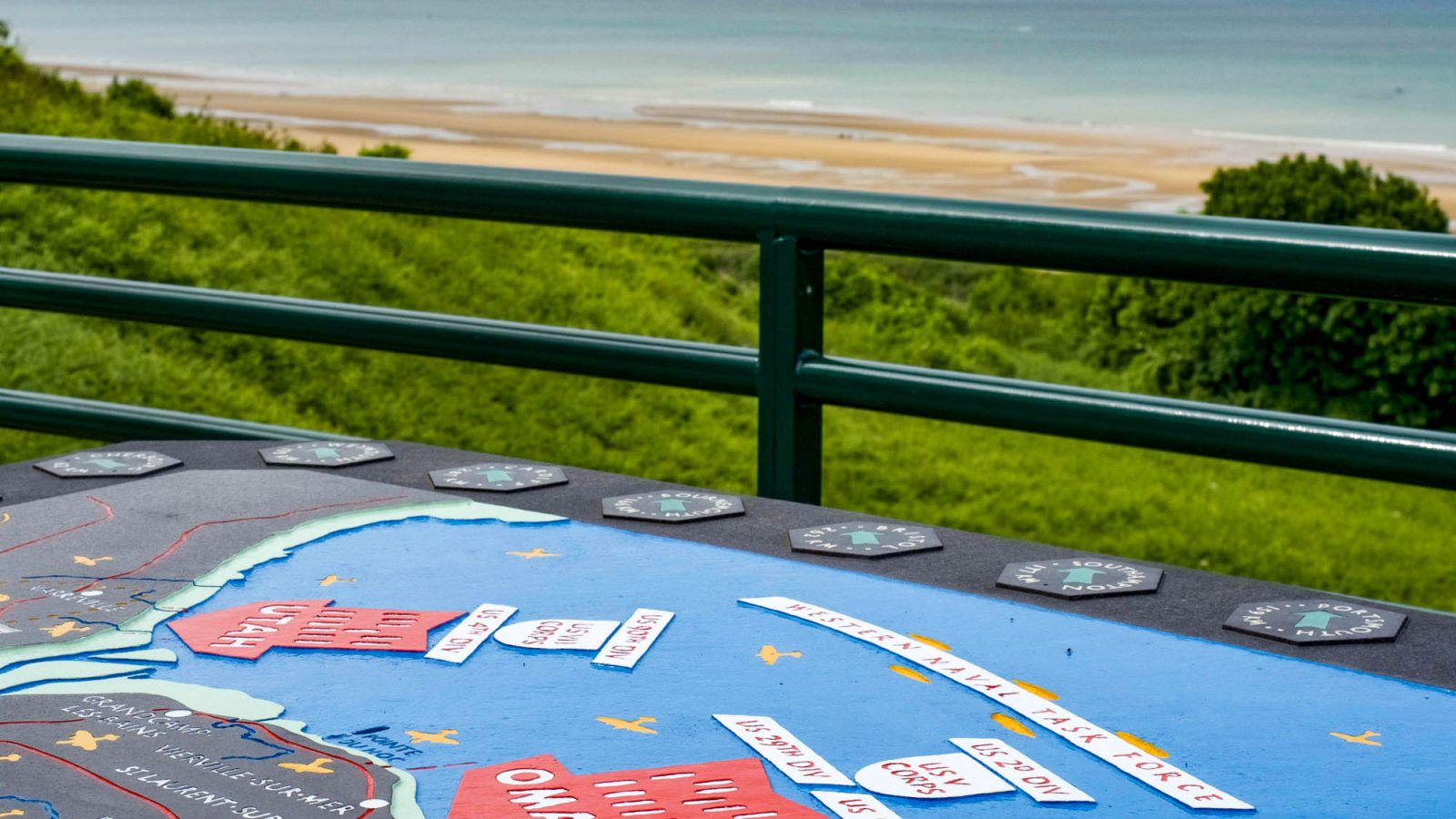
The Best D-Day Beach to Visit in Normandy (2024): Here’s How to Choose
Last Updated: January 29, 2024 // by Ashley Smith 4 Comments
While I’m sure you would love to visit them all, sometimes you have to concentrate on choosing only the best D-Day beach to visit in order to pack everything into your busy travel schedule. If you’ve done any research on D-Day landing beaches while planning your trip to Normandy , then you already know there are five to choose from:
- Omaha Beach
- Sword Beach
Each of these offers its own unique experiences, museums, relics, activities, and more. So, if you only have time to visit one , which is the best D-Day beach to visit? Well, that all depends. But this post is here to help you choose!
Table of Contents
Prefer someone else to pick for you? Check out my list of the 10 best local Normandy D-Day tours to take in 2024 or this list of Best Normandy Day Tours from Paris .

How to choose the best D-Day beach to visit
Which of the 5 Normandy landing beaches you will designate the best D-Day beach to visit will depend on several factors. Things like: your interests, your time limit, who’s visiting, and from where?
All five are worth a visit if you have the time (naturally), but choosing the best one for you can be narrowed down to a few criteria. However, if you only have one day to spend exploring World War II history in Normandy, I highly recommend you prioritize these 7 sites . (They’re spread across a few of the beach sectors.)
I do list just one beach in that post (which you should definitely check out… I’ll wait…) but read on and I’ll explain a little as to why and why that one may not be the best D-Day beach to visit for you .

Best D-Day beach to visit for Americans
If you’re an American visiting Normandy, you’ll likely find Omaha Beach to be the best D-Day beach for you. While the United States, Canada, and Great Britain all participated in the D-Day landings, Omaha Beach is one of the two American landing beaches.
In the Omaha Beach sector you’ll get to revisit one of the most significant locations in American history. As an American, when you think of “D-Day,” you’re probably thinking of the footage you’ve seen of troops storming Omaha Beach. In our minds, the two are synonymous.

You’ll get to visit the beach itself (that you’ve seen in so many movies), as well as other significant locations like Pointe du Hoc where the U.S. Army defeated the Germans by scaling cliffs using grappling hooks and ladders. (One of the most jaw-dropping sites to visit here, in my humble opinion.)
You’ll be able to visit museums like the D-Day Omaha Museum and the Overlord Museum and see the many memorials to American troops. Plus, you’ll also be able to spend some time at Normandy American Cemetery , arguably the most famous American war cemetery in the world.
Check out all there is to see and do at Omaha Beach here.

Where to stay near Omaha Beach
If you’re looking to concentrate your time in and around Omaha Beach, check out these popular places to stay:
- La Sapinière (in Saint-Laurent-sur-Mer) – Right across the street from the beach itself, modest and budget-friendly, reviewers love the location, the hotel’s restaurant, and the friendly staff.
- La Ferme aux Chats (in Formigny) – Adorable B&B, rave reviews for its homemade breakfasts, the size and cleanliness of the rooms, and the welcoming staff.
- See all Omaha Beach area hotels here to find the best one for you .

Best D-Day beach to visit for Canadians
For Canadian visitors to Normandy, you might find Juno Beach is the best D-Day beach to visit . Juno Beach is where Canadian troops landed on D-Day and where you might find the most relatable history.
At Juno Beach, you can explore the Juno Beach Center —Normandy’s only museum dedicated to Canada’s D-Day contributions. You can also check out the Canada House —a historic home and the first to be liberated by Canadian troops—that has since become a memorial to Canadian troops.
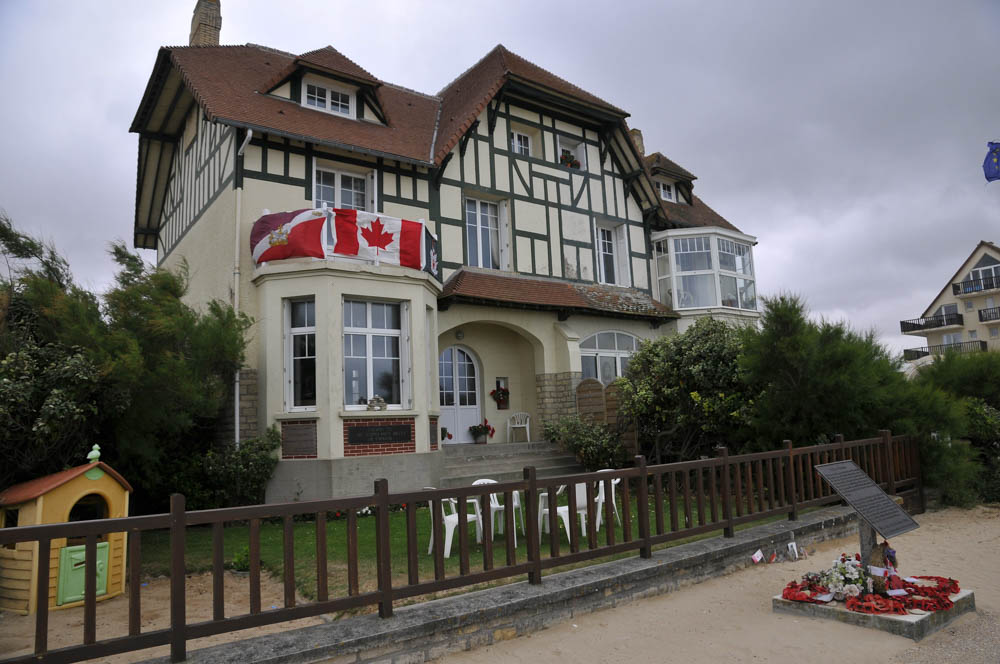
It’s also here at Juno Beach where you’ll find the Canadian War Cemetery . This cemetery serves as the final resting place for Canadians who died on D-Day and in the Battle of Caen the following month.
Juno Beach itself also contains a number of memorials to Canada’s fighting forces like the Canadian Gunners, the Fourth Light Anti-Aircraft Regiment, the Royal Canadian Navy, and more. The Juno Beach Markers also explain the history of Canada’s D-Day beach landing with an hour-by-hour account, illustrations, and more.
Check out all there is to see and do at Juno Beach here.

Where to stay near Juno Beach
If you’re looking to concentrate your time in and around Omaha Beach, check out these well-reviewed hotels:
- Ferme de la Rançonnière (in Crépon) – Beautiful property in a relaxing location in the French countryside, reviewers love the location and property.
- Le Manoir de Mathan (also in Crépon) – Well-reviewed for its location, beautiful garden property, and the large, comfortable rooms.
- La Cremaillere (in Courseulles-sur-Mer) – Modern hotel directly on the beach, comfortable rooms, great views and staff.
- See all Juno Beach area hotels here in case there’s something you like better.
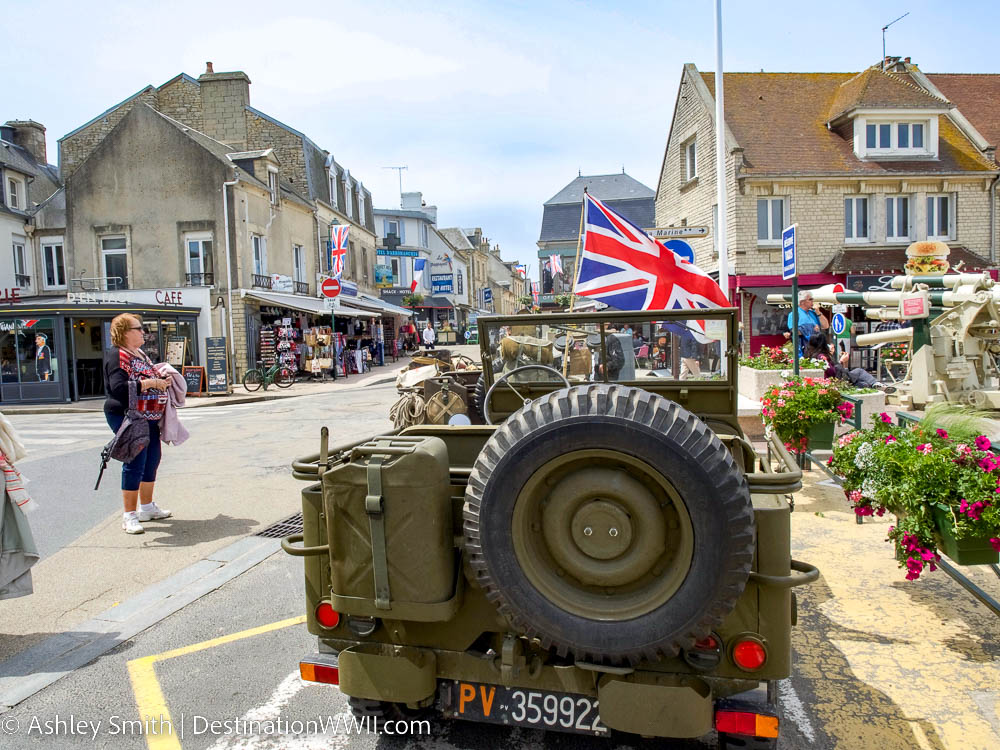
Best D-Day beach to visit for Brits
Like the U.S. and Canada, Great Britain has its own Normandy landing beaches as well. If you’re visiting from England, chances are you’ll find Gold or Sword beach to be the best D-Day beach to visit.
So yes, there are two British D-Day beaches (just like there are two American beaches) and they are not next to each other (Juno Beach is in between). So you may have to choose just one, but which one is the best? Well…
Also check out: WWII Sites in Paris : 20+ Fascinating Museums, Memorials, and More (+Tips!)
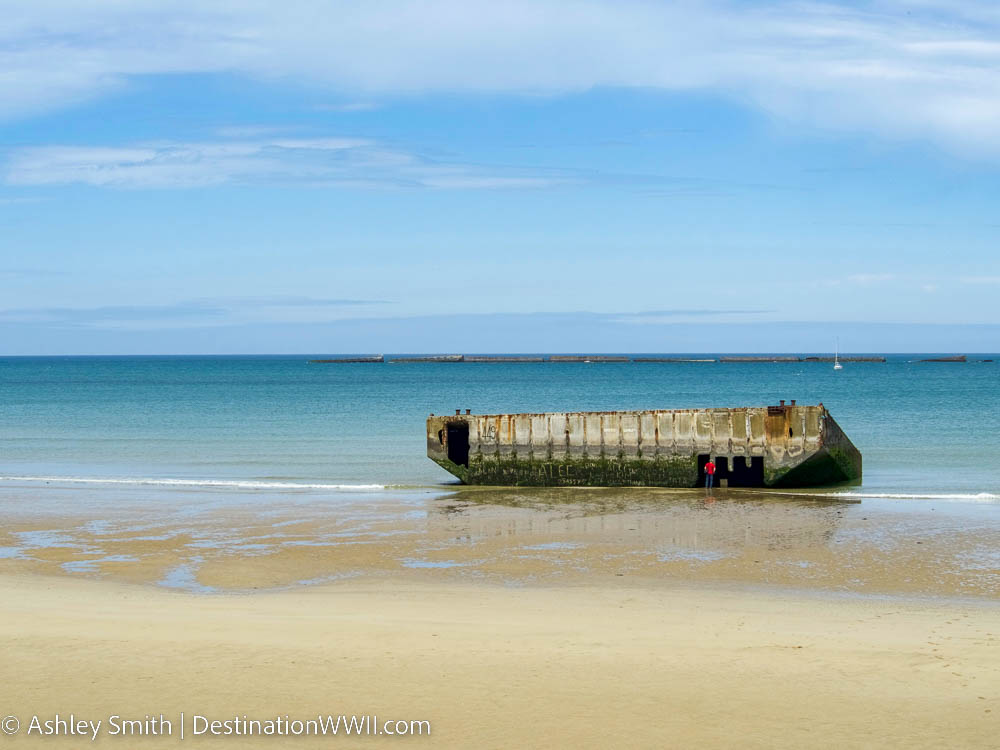
Gold Beach is the best D-Day beach to visit if:
- You want to see the remains of the artificial harbors used to bring troops and transports ashore
- You want to see the only fully intact remaining German gun installation
- You want to visit the largest Commonwealth cemetery in France
- You want to visit museums like Arromanches 360° and the Memorial Museum of the Battle of Normandy

However, Sword Beach is the best D-Day beach to visit if:
- You want to visit the Caen Museum , believed to be the best World War II museum in Europe
- You want to visit the Pegasus Memorial and Bridge (and have a drink at the Pegasus Café)
- You want to visit the Museum of the Atlantic Wall
- You want to learn about the D-Day landings from the angle of the Franco-British commandos at the French-British Museum
Check out all there is to see and do at Gold Beach here and Sword Beach here .

Where to stay near Gold Beach
If you’re looking to concentrate your time in and around Gold Beach, check out these popular places to stay:
- Hôtel De La Marine (in Arromanches-Les-Bains) – Right on the beach on a quiet street (pictured above), close to everything in town, ocean views.
- Le Petit Matin (in Bayeux) – Beautiful property with a little added luxury, short walk to Bayeux’s center, super friendly staff.
- See all Bayeux hotels here and all Arromanches-Les-Bains hotels here for all your options.
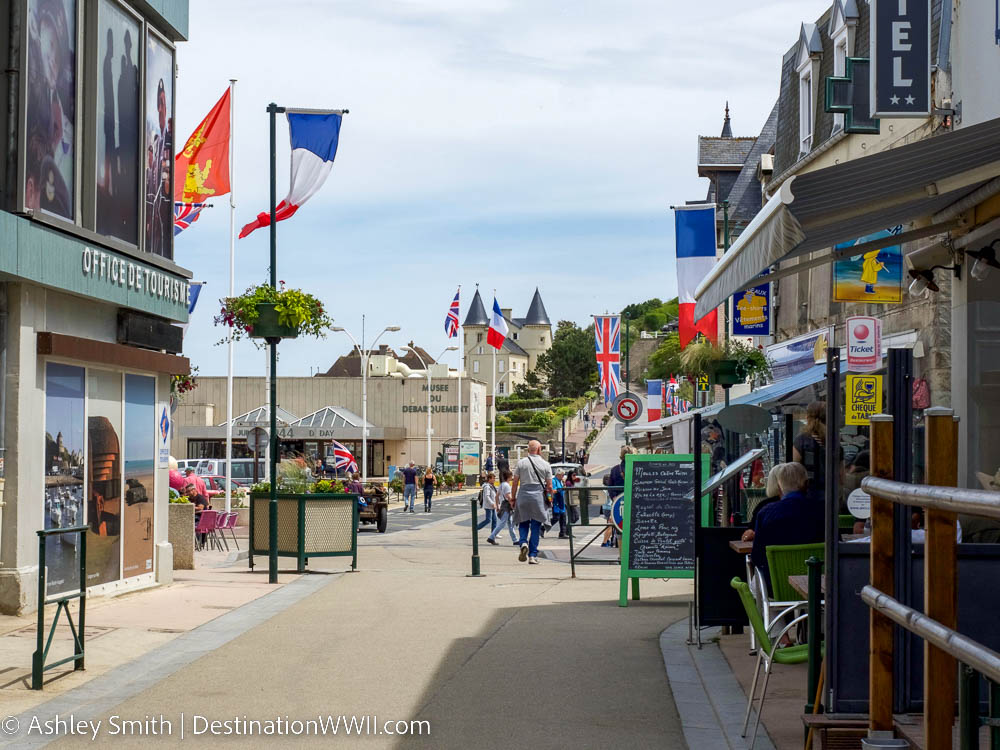
Where to stay near Sword Beach
If you’d prefer to spend your time in the Sword Beach sector, check out these popular places to stay:
- Hôtel La Fontaine Caen Centre (in Caen) – Right near the Caen Museum, super clean, excellent staff, a very popular hotel with reviewers!
- B&B HOTEL Ouistreham (in Ouistreham) – Simple and budget-friendly, good for a quick stay, but people love this place!
- See all Sword beach area hotels here to pick the perfect one.
If you’d like to check out both Gold and Sword Beach, you could always stay somewhere in the middle. In that case, check out the hotels near Juno Beach to be close to both.
Subscribe to DWWII
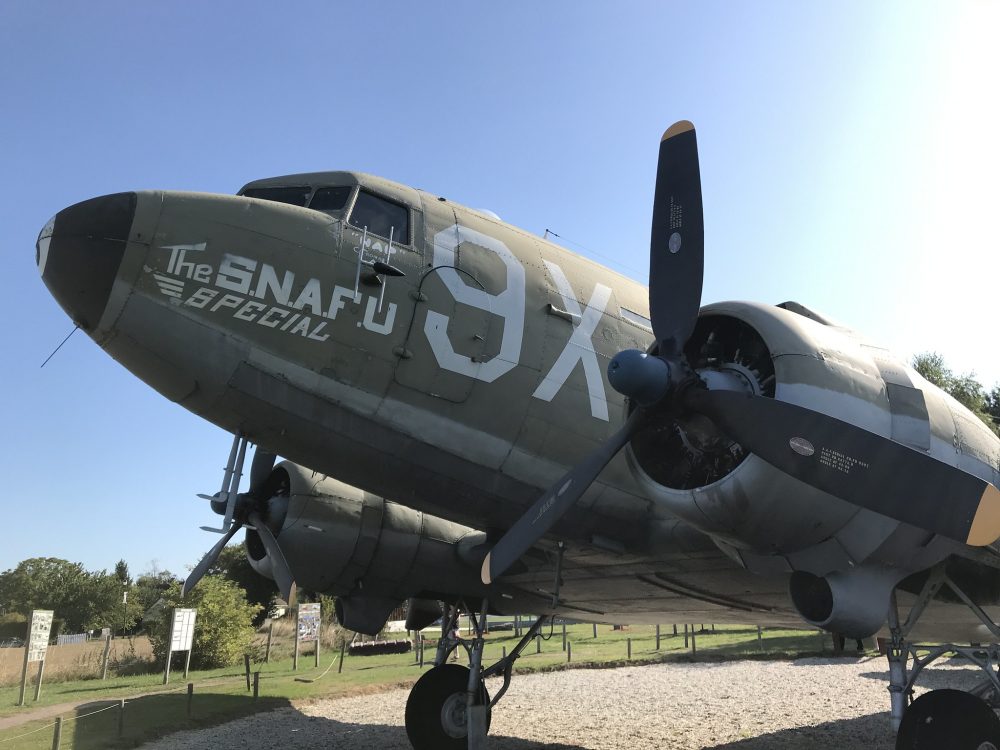
Best D-Day beach to visit for aviation enthusiasts
If you’re an aviation enthusiast like myself, Utah Beach is the best D-Day beach to visit for you. Here in the Utah Beach sector, you’ll get to experience some of the best aviation-centered D-Day museums.
Utah Beach is the other American landing beach and here you’ll find:
The D-Day Experience where you’ll be able to take a trip on the C-47 flight simulator aboard a genuine C-47 from World War II that’ll make you feel like you’re actually there on June 6, 1944.
The Airborne Museum – fully dedicated to the U.S. paratroopers from the 82 nd and 101 st Airborne Divisions. You’ll get to see actual WW2 aircraft and experience another C-47 simulator.
The Airship Hangar at Ecausseville that was actually used by the French Navy in 1917. Even though it was used for other purposes in WWII (by Germany), it’s still a neat structure with a lot of interesting history.

Where to stay near Utah Beach
If you’d like to explore D-Day’s top sites for aviation lovers at Utah Beach, check out these popular places to stay:
- Domaine Utah Beach – Le Grand Hard (in Sainte-Marie-du-Mont) – Gorgeous property where they serve meat from their own organic farms at their own restaurants, family-run hotel, close to Utah Beach, and lots of rave reviews.
- Ferme de Beauvais (in Sainte-Mère-Église) – An old farmhouse-turned-B&B, short walk to the Airborne Museum and Sainte-Mère-Église church, excellent hospitality.
- See all Utah Beach area hotels here to open up your choices.
Also check out: 14 Must-Visit Normandy Museums for WWII History Buffs
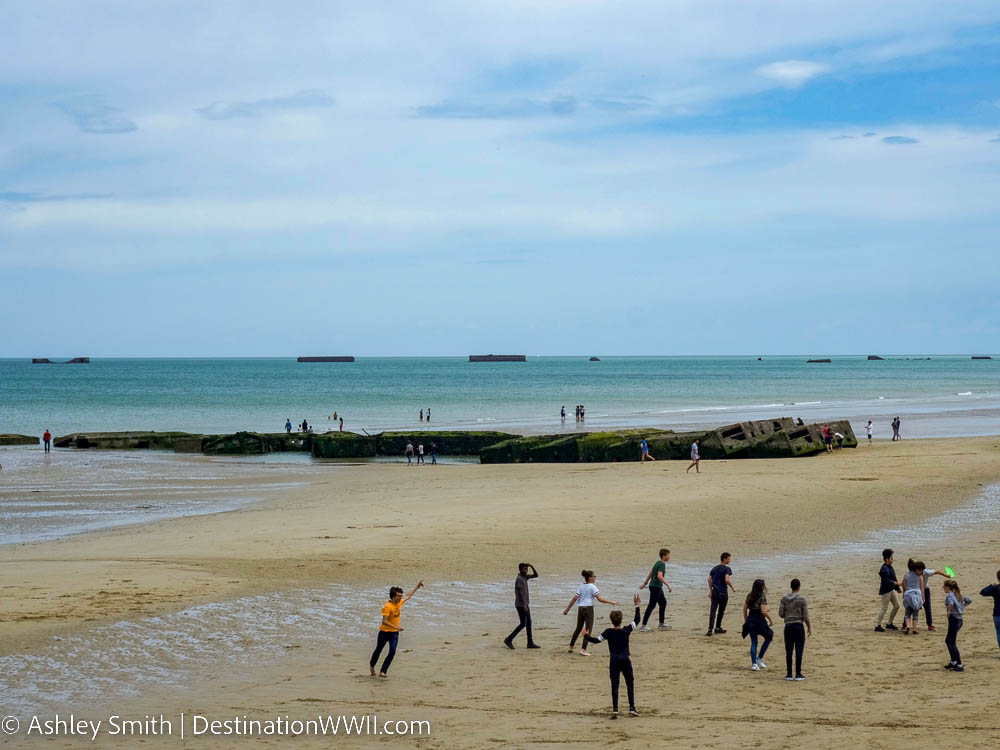
Best D-Day beach to visit with kids
While I don’t have children myself, I have done my research on the D-Day beaches parents most recommend visiting. In this case, the most popular recommendations revolve around sites where kids can see and explore actual remains from the war. Ergo, the best D-Day beaches to visit with kids are:
- Gold Beach – to explore the remains of the artificial mulberry harbors still on the beach and to check out the intact German battery
- Omaha Beach – to explore the bunkers at Pointe du Hoc (there’s also a lot of sheep here!) and for a large beach on which to spend the day (yes, people spend their beach days here like any other beach)
For more on visiting World War II sites with kids , check out my full guide here.

Best D-Day beach to visit for movie lovers
If you simply want to concentrate your time in Normandy on visiting the D-Day sites you know the most from movies and TV shows, that’s fine too! (I’m a big fan of visiting the real-life filming locations of my favorite movies and shows too.) In that case, if you love the movie:
Saving Private Ryan
…(and who doesn’t?), you’ll want to visit Omaha Beach . You can check out the actual beach where the biggest and most famous amphibious landing in history took place.
Plus, you can visit nearby Normandy American Cemetery which appeared at the beginning and end of the film when old man Ryan visits Captain Miller’s grave. Watch Saving Private Ryan here if you haven’t in a while.

Band of Brothers
…you’ll want to visit Utah Beach . Band of Brothers follows the American paratrooper unit known as Easy Company. So, most of the series’ D-Day focus centers on events around these two landing sectors.
In the Utah Beach sector you can visit a number of Easy Company memorials, the “Dick” Winters memorial, and even pop by Brécourt Manor (highlighted in Ep.2). You can also visit the town of Carentan as seen in Ep.3. You can watch Band of Brothers here or with either a Netflix or HBO Max subscription.

The Longest Day
…you’ll want to head to… well… all the beaches. The greatest thing about The Longest Day is that it covers many aspects of the Normandy invasions.
Therefore, you’ll want to visit Sword Beach , the invasion of which by the British is highlighted in the movie. As is the bagpiper of Normandy, to whom there is now a memorial on the shores of Sword Beach. You can also visit the Pegasus Bridge here.
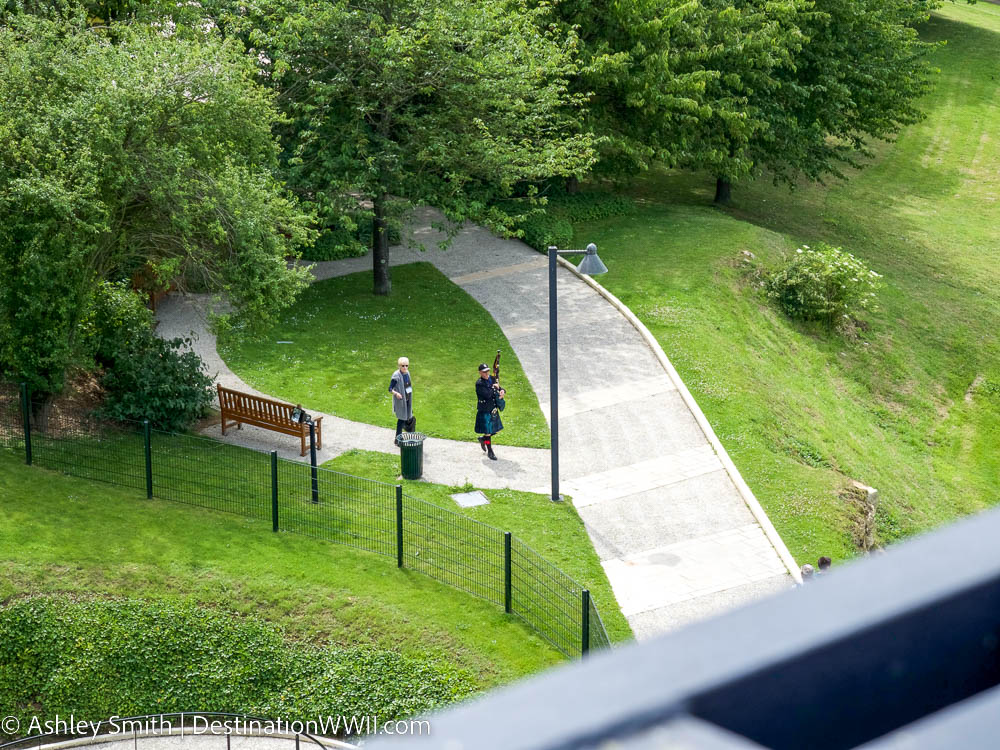
However, you’ll also want to stop by the Utah Beach sector where you can stop by the church of Sainte-Mère-Église. The Longest Day shows the harrowing scene when paratrooper John Steele gets stuck hanging from the church’s tower. Today, you can see a memorial to him on the church—a sculpture of a paratrooper suspended by a parachute.
However again, you can also visit Omaha Beach , the invasion of which was also featured in the movie, as well as nearby Pointe du Hoc. If you have to choose between those three, well, just start back at the top of this page. You can watch The Longest Day here . (The Movieland app also has it but only without subtitles. And half the movie is in French and German.)
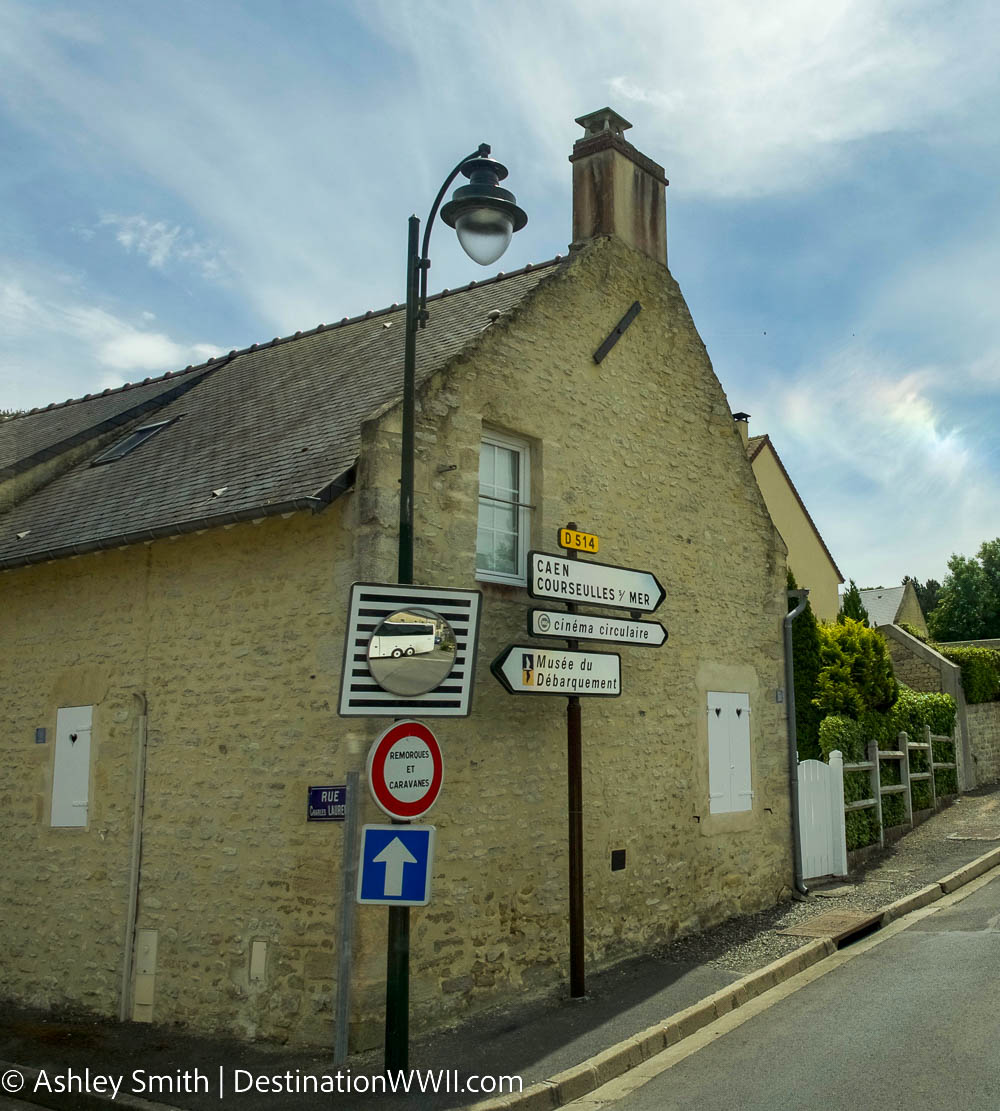
More info for your trip to Normandy’s beaches
- Hotels: Read reviews and find great places to stay here on Booking.com (my personal favorite). Hotels.com and Expedia usually have good deals too though.
- Save lots of money and time by getting some Paris GoCity passes .
- Need a rental car? Check out the best local deals here .
- Don’t forget to pick up a Normandy guidebook .
- And this priceless France customs and culture guide .
- Looking for local tours? Start here with Viator and Get Your Guide .
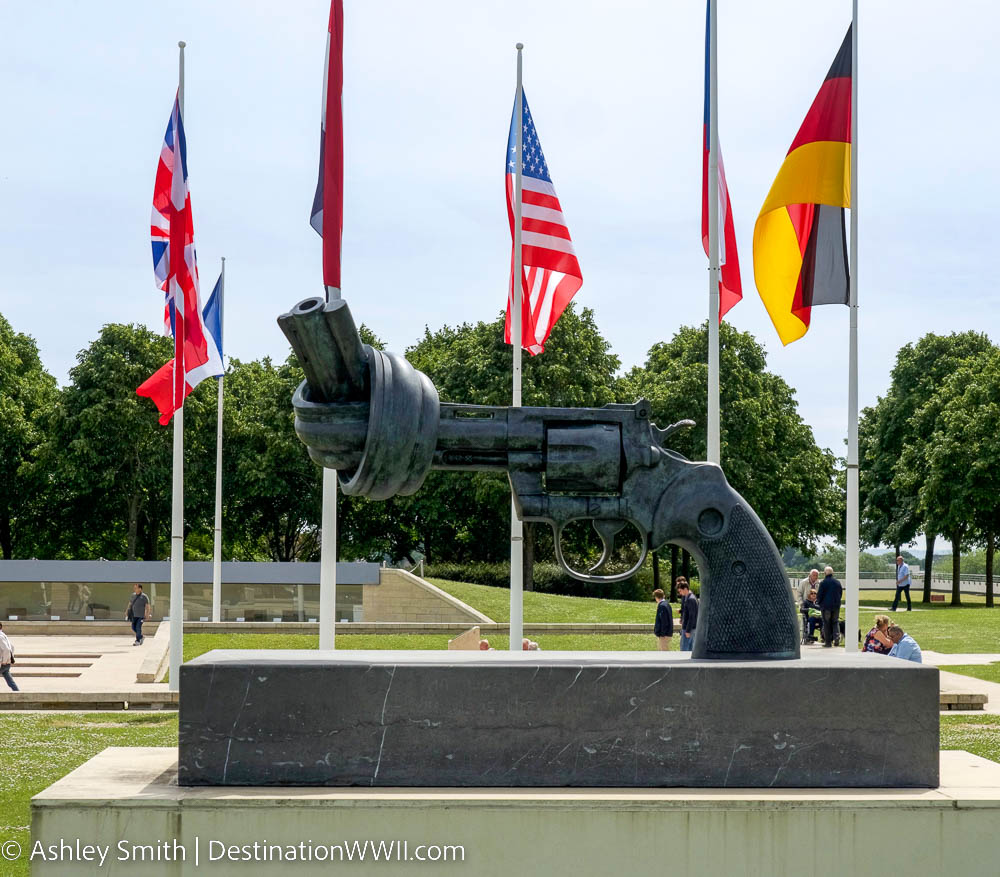
Whichever beach you deem to be the best D-Day beach to visit, know that you’re going to learn a lot, feel a lot, and be endlessly glad you made the decision to visit such a historically charged location.
And even if you feel drawn to the beaches that represent your own country, consider expanding your gratitude and knowledge to those who fought on the other beaches as well if time allows. Enjoy your time at Normandy’s landing beaches!

Save this info, pin this image:
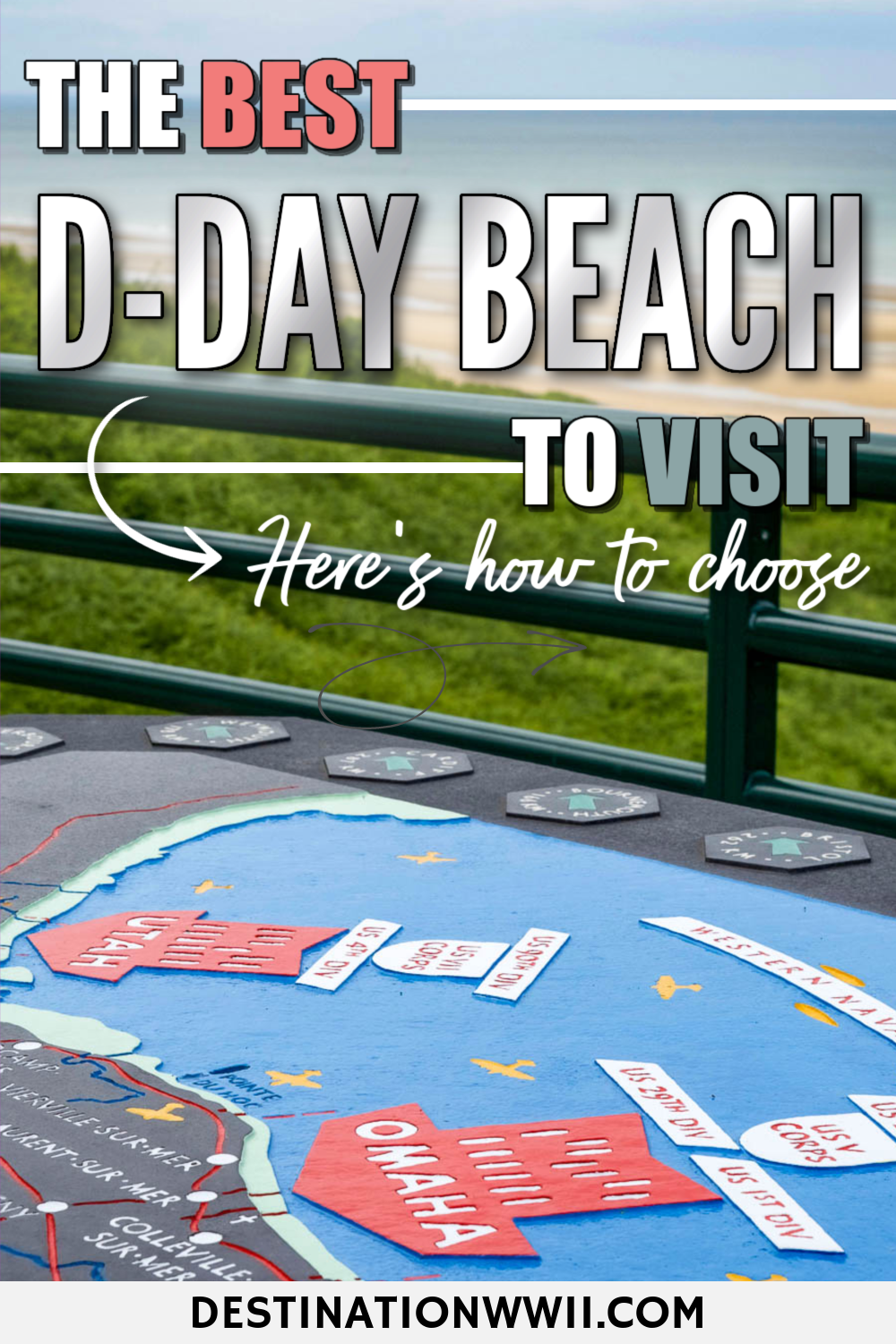
About Ashley Smith
Ashley is a World War II historian and travel expert who has visited 33 countries. She specializes in quick trips throughout Europe and the Americas with a focus on World War II museums, memorials, battlefields, and other sites of interest. Originally from Memphis, TN, she currently lives in Boston with her husband and two feline commanders.

Reader Interactions
September 11, 2023 at 4:16 pm
we are off a cruise ship for only one day at le havre oct.16 2023 we are looking at an excursion from le havre rt 7:30 -5:30 and it plans stops at north amerrican cemetry omaha beach and point du hoc. will that be worthwhile? are alternative is rt paris thanks
September 11, 2023 at 6:24 pm
Hi Bill, yes this is definitely a worthwhile cruise excursion! Those are 3 very important sites.
February 11, 2024 at 11:16 pm
We are driving to the Normandy beaches from Paris and we just have the day. Is that enough time? We want to make it a good experience for our 3 kids (ages 15, 13, & 10).
February 12, 2024 at 9:54 am
Hi Cassie! Yes, it’s definitely possible. For instance, take a look at the tours I talk about in this post . You can obviously drive yourself to the same places, but these will give you an idea of how much and what you can fit into a day. I also wrote this post on some of the best sites you can see in a single day. The main thing to keep in mind is that it’s about a 3.5-hour drive to the Normandy beaches from Paris, so you’ll be in the car a lot, especially if you head back to Paris that night. Even though you just have the day, it’s still a worthwhile trip for sure. 🙂
Leave a Reply Cancel reply
Your email address will not be published. Required fields are marked *

Paris WWII Sites Map
- Skip to main content
- Skip to primary sidebar
- Skip to footer

8 Top Things to See at the Normandy D-Day Beaches in 2024
Debra Thimmesch Last Updated: September 26, 2023
D-Day, June 6, 1944, was one of the most pivotal days in world history. That day, thousands of Allied troops began their liberation of “the oppressed peoples of Europe,” as then-General Dwight D. Eisenhower put it. Today, you can explore this important place in history from Omaha and Utah Beaches to the American Cemetery and Point du Hoc. In this article, I’ll tell you about the top must-see sites at the Normandy D-Day beaches.
Pro Tip: Planning what to do on your trip to Paris? Bookmark this post in your browser so you can easily find it when you’re in the city. Check out our guide to Paris for more planning resources, our top Normandy tours for a memorable trip, and if a Normandy tour is worth it .
What You Have to See at the Normandy D-Day Beaches
“Your task will not be an easy one,” Eisenhower wrote to the Allied troops. Those words were part of his now-famous official order for the June 6, 1944, D-Day invasion. Indeed, it was not easy. In fact, according to the US Department of Defense, 4,700 of the 35,000 soldiers who first went ashore that day were wounded, killed, or declared missing.
The huge D-Day operation included the invasion and the push through Normandy then southeast to Paris . The invasion architects who selected Normandy as the landing zone gave it the codename Operation Overlord.
Gaining a strategic foothold in northwest Europe was essential to turning the tides in the war. Allied troops landing in Normandy were extremely vulnerable. The Germans had established positions, including bunkers, along the coast. They had also occupied cities such as Caen, the capital of Normandy.
Eisenhower warned the troops , “Your enemy is well-trained…He will fight savagely.” Therefore, it was up to the Allied forces to liberate the land and the French people. The battle that turned the tides of World War II started in Normandy.
In this article, I will explain why 50 miles of coastline in Normandy—which includes specific areas you can visit—held the key to victory. Here are 8 important sites from the Caen Memorial Museum to La Pointe du Hoc you won’t want to miss.
Not ready to book a tour? Find out if a tour of Normandy’s D-Day beaches are worth it .
8. Caen Memorial Museum
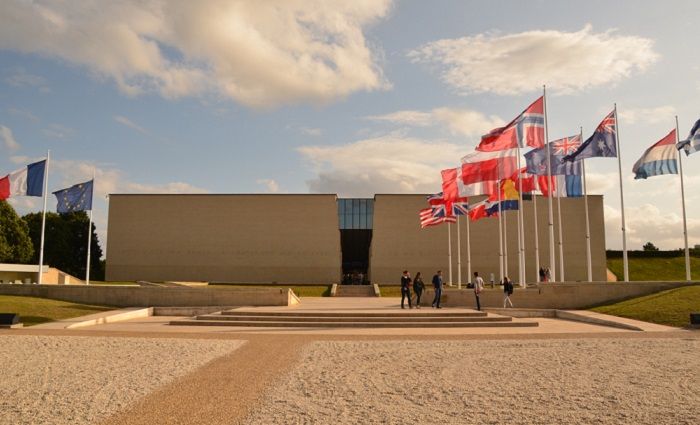
I recommend starting your Normandy D-Day Beaches visit in Caen. Caen is about 10 miles inland from the English Channel. It is the largest city in Normandy and played a crucial role in the war as it has in days past, such as when William the Conqueror once used Caen as his capital. It was heavily bombed by the Germans during World War II, and the city lost numerous historical buildings entirely.
The Caen Memorial Museum provides visitors with a comprehensive picture of the war in this part of France. Different areas of the museum tell different stories, so be sure to allow plenty of time here.
For example, you’ll learn about how civilians coped with the German Occupation. You’ll see objects related to the French Resistance, which was extensive. Finally, you’ll hear the stories of D-Day and the Battle of Normandy. The Caen Memorial Museum is the perfect place to get a full understanding of what you’ll see here at the Normandy D-Day Beaches before you head to Omaha Beach.
Address: Esp. Général Eisenhower, 14050 Caen Cost: starting at €17.50
7. Bayeux Battle of Normandy Museum
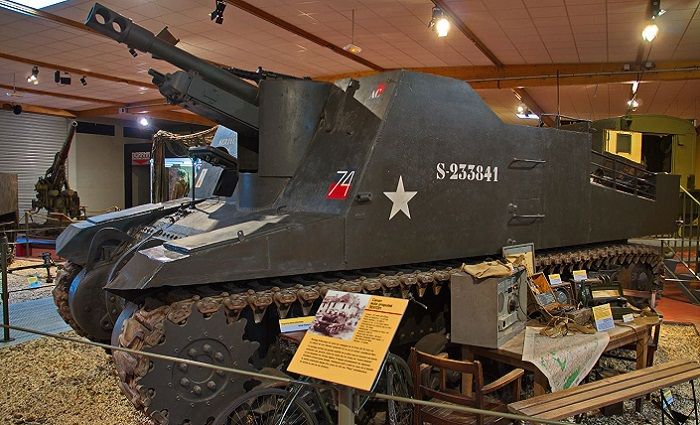
The Memorial Museum of the Battle of Normandy is a top place to see at Normandy. Bayeux is around 20 miles west of Caen on the inland side. This ancient city also hosts the famous Bayeux Tapestry.
Wondering what that is? Well, it’s not a tapestry at all but a famous embroidery that tells the story of the invasion of England by William the Conqueror. Thus, it seems apt that Bayeux would also tell the story of a more recent, historic invasion.
Bayeux’ museum focuses solely on the Battle of Normandy. Part of Operation Overlord, the Battle of Normandy took place over the summer of 1944. After the successful but bloody D-Day invasion, Allied troops pushed southeast across Normandy to the Seine river.
Their goal was to liberate Paris, and according to WWII historian Stephen Ambrose, Paris was liberated on August 25. The Germans retreated across the river to the east on August 30, 1994. That fateful event marked the end of Operation Overlord.
Address: Bd Fabian Ware, 14400 Bayeux Closed: Annually in January Cost: starting at €7.50 (buy in person only)
6. Artificial Harbor at Arromanches
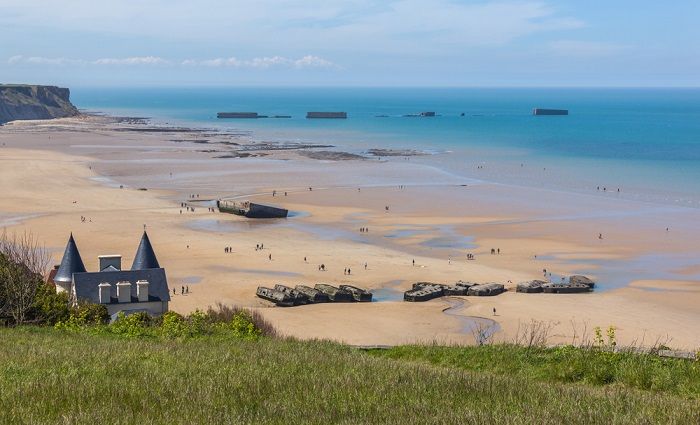
You might wonder how the Allied forces moved their vehicles and cargo across the English Channel and onto the shores of France. A key piece of their success was the genius installation of two portable, temporary harbors.
They named the first harbor at Omaha Beach Mulberry A. Then they built Mulberry B at Arromanches-les-Bains on Gold Beach. Today, you can see remnants of Mulberry B in Arromanches—the very same harbor the Allies used for over 10 months after D-Day. Incredibly, 2.5 million troops and 4 million tons of supplies came through Mulberry B, notes historian Jonathan Falconer.
A 17-minute drive from Bayeux gets you to scenic Arromanches. You have a splendid view of the artificial harbor from above. While you cannot walk on the remaining constructions, at low tide you can get quite near them. If you arrive around lunchtime, I recommend having fresh seafood at Restaurant La Maison du 6 . It’s just a short walk from the main square on Cale Neptune.
Address: 14117 Arromanches-les-Bains Cost: FREE
Not ready to book a tour? Find out how to visit the Normandy D-Day sites .
5. 360 ° Theater at Arromanches
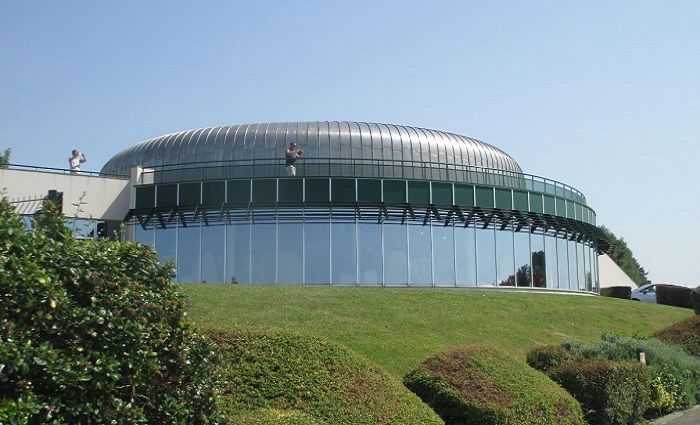
The impressive 360 ° Circular Cinema lies on the ridge above the city. The view of the artificial harbor and beach is stunning. So is the 20-minute film you’ll see in this remarkable theater.
“The 100 Days of the Battle of Normandy” is a breathtaking movie montage of footage from multinational archives. The film begins with the D-Day landings. It is projected on nine different screens, which place you at the center of the action. The experience is intense and deeply moving.
Address: Rue du Calvaire, 14117 Arromanches-les-Bains Cost: starting at €6
4. Omaha Beach
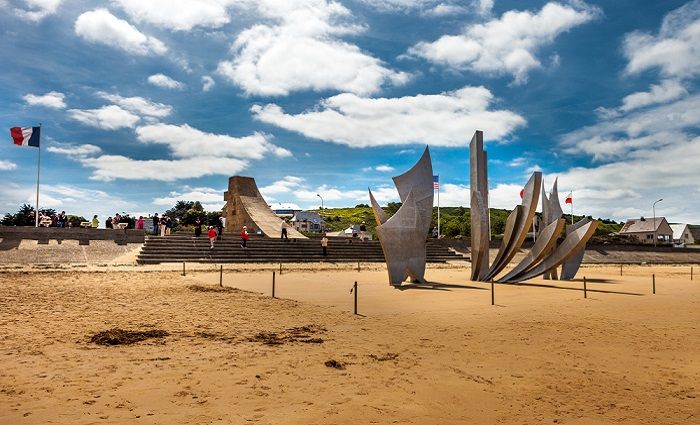
It goes without saying that Omaha Beach can’t be missed at the Normandy beaches. The Allied forces decided to call the beach landing part of the attack Operation Neptune. They designated five beaches as landing zones, and Canadian and British soldiers landed at Juno, Gold, and Sword beaches.
However, the Americans’ entry points were Omaha and Utah beaches, explains Ambrose. That’s just part of why these two beaches are the most recognized by Americans. But it’s also because the most intense fighting on D-Day took place on Omaha Beach .
The Germans had a superior position on the cliffs overlooking the beach, including concrete bunkers. In contrast, the invading troops had to enter the beach from the water—completely exposed. As a result, 2,400 lives were lost, according to the Department of Defense records. However, untold lives were saved by their heroic sacrifices. Today, Omaha Beach is peaceful—there is no sign of the violence and bloodshed of June 6, 1944, and the days that followed.
I recommend taking the D514 road parallel to the sea to get to Omaha Beach where visitors are free to explore. Whereas once you could walk down to the beach from the Normandy American Cemetery above, you must now arrive via Saint-Laurent-sur-Mer. Upon arrival, you’ll see the massive memorial sculpture titled Brave . It looks like gleaming silver swords and tongues of fire.
Address: Av. de la Libération, 14710 Saint-Laurent-sur-Mer Museum Cost: starting at €5
3. Normandy American Cemetery and Memorial
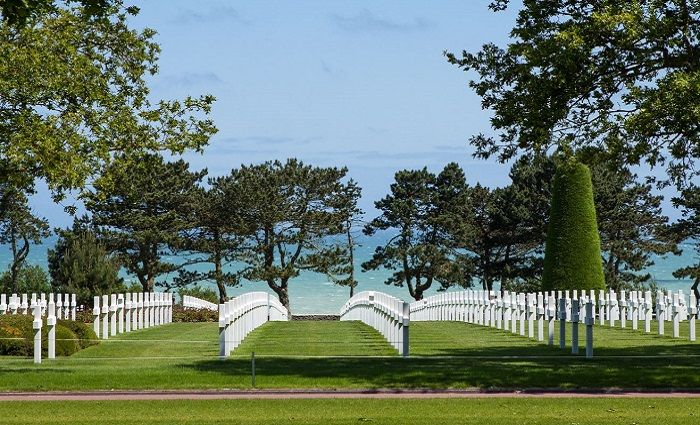
The Normandy American Cemetery and Memorial is located in Colleville-sur-Mer. According to the American Battle Monuments Commission, the Army constructed it on the site of a temporary cemetery for American soldiers in June of 1944. It was the first American cemetery on European soil in World War II. The 172.5 acre cemetery contains the graves of 9,386 dead. Most of the fallen died on D-Day and the days of battle that followed.
The Walls of the Missing on the east side of the memorial enclose a quiet, semicircular garden. The 1,557 names of the missing have been inscribed on those walls, and it’s worth taking some time to see it. Sculptures and large maps describe the military operations that took place in Normandy.
There is a beautiful reflecting pool and a small chapel. To the north, rising above the ocean, a table with a diagram of the beaches is available to help orient visitors. However, the lines of austere white crosses are by far the most poignant aspect of the cemetery and likely what you came to see here at the American Cemetery.
Address: Rte du Cimetiere Americain, 14710 Colleville-sur-Mer Cost: FREE
2. La Pointe du Hoc
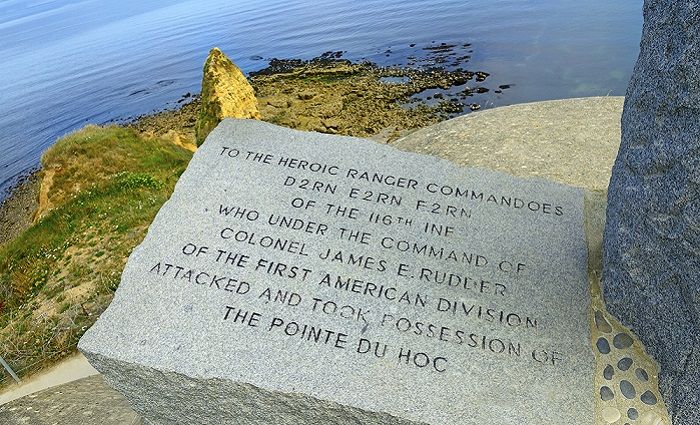
Drive further west of Omaha Beach for 15 minutes and you’ll reach La Pointe du Hoc. As a cliff overlooking the English Channel, Pointe du Hoc was enormously strategic for the Germans.
They had fortified it and built concrete bunkers that seemed completely impregnable. It was their front-row seat for the invasion of Normandy. Thus, the Allies knew that its position would prove a dire threat to the success of the invasion and determined to conquer it at all cost.
The massive battle that took place there left scars that you can still see today. As you stand at Pointe du Hoc, you’ll see huge craters created by the awe-inspiring and deadly assault of the Allied forces. The site is unimaginably eerie. You can walk alongside the craters and even climb down into the bunkers to get a feel for what it might have been like to stand guard there.
Address: 14450 Cricqueville-en-Bessin Cost: FREE
1. Utah Beach and Landing Museum
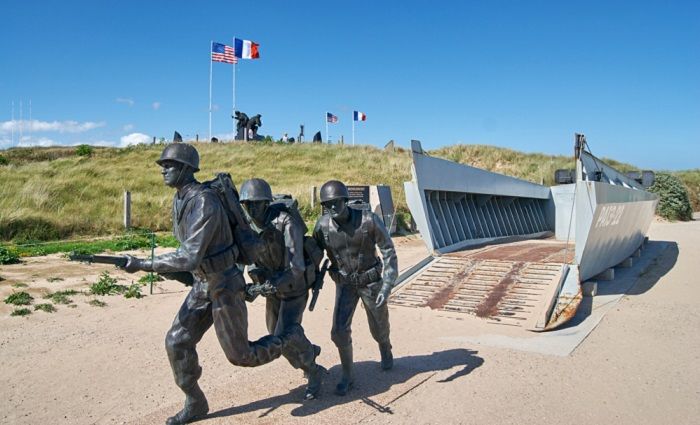
If you drive about 35 or 40 minutes west of Pointe du Hoc, you will reach the Cotentin (or Cherbourg) Peninsula where Utah Beach is located. Utah was the furthest west of the D-Day beaches. The decision to attack this beach was a late addition to the planning stages, notes Ambrose. Yet, it proved to be strategically essential due to its close proximity to the deep water port at Cherbourg.
Utah Beach was the first place the Allies landed on June 6, 1944. According to the Department of Defense, they only lost 197 men of the 23,000 troops who deployed on there. However, they succeeded in taking the beach and establishing a beachhead.
The Musée du Débarquement Utah Beach, or the Utah Beach Landing Museum, is another top place to see when you visit the Normandy D-Day beaches. First, the architecture of the museum integrates with the beach thanks to the huge windows that provide an immense view. You can’t forget where you are.
Second, the museum’s extensive collection of vehicles, equipment, and objects really gives you important context to the tragedy and heroism that occurred here at these sacred sites. Your trip to the Normandy D-Day beaches, museums, and cemeteries will be one to remember.
Address: La Madeleine, 50480 Sainte-Marie-du-Mont Museum Cost: starting at €5
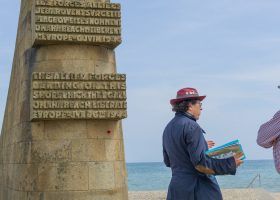
Why you ABSOLUTELY can’t miss Taylor Swift Eras Tour in Europe
The ultimate guide to the amalfi coast on a budget, how to spend christmas in florence, how to spend half a day in venice, top things to see in sicily video guide – 11 min.
About Debra Thimmesch
Debra Thimmesch is an art historian, researcher, independent scholar, editor, and visual artist. She mentors undergraduate and graduate students in the history of art and is a published author. Her work has appeared in publications such as The Brooklyn Rail, Art Papers, and Blind Field and a variety of exhibition catalogs. Her BA, MA, and PhD in art history have provided only part of the broader, global view of the history of art that she has acquired through the years. As a world traveler, she considers herself a sort of pilgrim of great art and architecture. As a teacher and tour guide, she has led private tours and student groups to numerous sites in the US, the UK, and Europe.
Reader Interactions
Leave a comment cancel reply.
Your email address will not be published. Required fields are marked *
- Travel Guide
- In The Press
POLICY & TERMS
- Cancellation Policy
- Terms & Conditions
- Privacy Policy

National Geographic content straight to your inbox—sign up for our popular newsletters here

A World War II reenactor plants a flower in the sands of Normandy's Utah Beach, one of the five landing areas of the D-Day invasion of France on June 6, 1944.
In honor of D-Day, here’s how to visit the Normandy coast
Seventy-five years later, traveling to the beaches where Allied forces began the liberation of France is still a deeply moving experience.
On a summer day, it’s impossible to imagine the bloody mayhem that erupted along the tranquil Normandy coast early on June 6, 1944. But reminders of D-Day— Operation Overlord —are everywhere, from the crumbling concrete bunkers and gun emplacements of the Third Reich’s vaunted Atlantic Wall to the graveyards of so many Allied soldiers.
Most of the invasion force–three U.S. divisions, two British, and one Canadian–sailed from Portsmouth in England to land at a chain of beaches in France , now known as the Côte du Calvados, between Cherbourg and Le Havre . From these beachheads, designated Utah, Omaha, Gold, Juno, and Sword, they were to fight their way inland through Normandy to Paris . ( See vintage photos that honor the resting place of D-Day's fallen heroes. )

An elite battalion of U.S. Army Rangers bravely scaled the 100-foot promontory here at Pointe du Hoc, overlooking the English Channel.
Start halfway along the Côte du Calvados in the small town of Arromanches, which saw some of the fiercest fighting and is now home to two museums that give insight into the battle. The D-Day Museum in Arromanche stands next to the site of one of the floating Mulberry harbors that were key to the Allied breakout from the beachheads. Nearby, visitors get a glimpse into the infantryman’s hell through the high-tech presentation at Arromanches 360 , which uses archive film shot by cinematographers who went ashore with the first waves of Allied troops.
Travel six miles south to Ranville, where the Pegasus Memorial commemorates the British 6th Airborne Division, which made a daring predawn assault. The most successful operation on D-Day, the action gained the Allies crucial control of Pegasus Bridge and its sister bridge. Then continue 30 miles northeast to Bayeux, home to the famous Bayeux Tapestry and the first large town to be liberated by the Allies. It survived the war virtually unscathed.
But to gain a true sense of the meaning of D-Day, visit the U.S. military cemetery at Colleville-sur-Mer . Almost all the soldiers who lie here were young men; very many were teenagers. None of them lived to drink champagne in a free Paris.
Each year, between late May and mid-June, the D-Day landing beaches host many events to remember the Allied soldiers who liberated France. See parachute drops in period attire, historical reenactments, and parades of bagpipers and military vehicles.
Renting a car is best to see the region. Several ferries also leave daily from Portsmouth to Cherbourg or Le Havre. Plan to sail to one French port and leave from the other. Many tours with well-informed guides are available, for days and half-days, in groups or for individuals.
For Hungry Minds
Related topics, you may also like.

Coastal dips and river wading on a multi-day hike through New Zealand's Abel Tasman National Park

Photo story: tombs, turquoise seas and trekking along Turkey's Lycian Way

Where to stay in Margate, the regenerated seaside bolthole on Kent's coast

10 of the best hotels in Mumbai, from Indian opulence to Soho House socials

These U.S. beach towns are even better in the fall
- Environment
- Perpetual Planet
History & Culture
- History & Culture
- History Magazine
- Mind, Body, Wonder
- Paid Content
- Terms of Use
- Privacy Policy
- Your US State Privacy Rights
- Children's Online Privacy Policy
- Interest-Based Ads
- About Nielsen Measurement
- Do Not Sell or Share My Personal Information
- Nat Geo Home
- Attend a Live Event
- Book a Trip
- Inspire Your Kids
- Shop Nat Geo
- Visit the D.C. Museum
- Learn About Our Impact
- Support Our Mission
- Advertise With Us
- Customer Service
- Renew Subscription
- Manage Your Subscription
- Work at Nat Geo
- Sign Up for Our Newsletters
- Contribute to Protect the Planet
Copyright © 1996-2015 National Geographic Society Copyright © 2015-2024 National Geographic Partners, LLC. All rights reserved
Commonwealth war graves commission Caring for the fallen
Commonwealth war graves Foundation Our charity site

- Search in War Dead
- Search in Cemeteries and Memorials
- Search in Website
Visiting the beaches of Normandy – WW2 guide
29 April 2024
Thinking of visiting the Normandy D-Day beaches? Here’s a handy guide on everything you need to know.
Normandy D-Day beaches to visit
With the Normandy 80th anniversary on its way, why not make a trip to see D-Day's landing beaches?

Where is Gold Beach?
Gold Beach was one of three Normandy landing beaches assigned to the Commonwealth forces on D-Day.
The landing zone stretched 8 kilometres from Port-en-Bessin in the west to La Rivière, Ver-sur-Mer in the East. The seaside resort of Arromanches lay in the west of the landing zone. Deeper inland from Gold sat the historic town of Bayeux.
History of Gold Beach
Wehrmacht forces occupying Gold Beach were tucked away in houses along the coast, particularly at La Rivière and Le Hamel. The landing beach was also in range of a gun battery located a kilometre inland, directed from a clifftop observation post at Longues-sur-Mer.
Gold comprised three sectors, running west to east: How, Item, Jig, and King. It was to be assaulted by the 50th (Northumbria) Division.
The 50th Division’s objectives were to capture Arromanches, cut the Caen-Bayeux Highway, and link up with the Canadians from Juno Beach in the east and the Americans from Omaha to the west.
Landing craft from the 50th Division hit Gold Beach at 7:25 am on the morning of D-Day. German defences had been softened by RAF and Royal Navy bombardment before the assault.
The infantry was supported by tanks and specialist Armoured Fighting Vehicles Royal Engineers (AVREs) to help clear beach obstacles and defences.

Image: 47 Commando comes ashore on Gold Beach, 6 June 1944 (© IWM)
At the same time as the main infantry assault, special forces of 47 Commando came ashore too. Its target was to capture the small harbour at Port-en-Bassin at Gold Beach’s western edge.
No German tanks were present on Gold Beach. Infantry resistance was minimal compared with other D-Day landing beaches. The Royal Navy and Air Force bombardments had softened up defences enough.
German forces at La Rivière had been subdued by 10.00 am. By mid-afternoon, Le Hamel had been captured. 47 Commando had pushed towards its objective at Port-en-Bessin but was unable to take the small port on D-Day itself.
One of the supporting Royal Navy vessels, HMS Ajax, had taken out the Longues-sur-Mer battery after a furious long-range duel.
By the evening of D-Day, the 50th Division had landed 25,000 men. The British had pushed 50 kilometres inland. They had also linked with the Canadians advancing from Juno Beach, but they had so far failed to cut the Caen-Bayeux highway.
The forces at Gold made a good start, securing an important beachhead for 400 casualties.
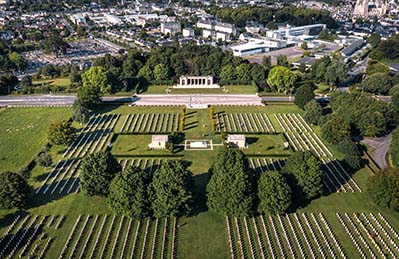
Bayeux War Cemetery
Bayeux War Cemetery , although started in 1952, has become one of the focal points for the commemoration of the Normandy campaign’s Commonwealth war dead.
Over 4,500 war graves can be found in Bayeux War Cemetery. D-Day war graves total around 500 of the Commonwealth burials here.
Within Bayeux War Cemetery stands the Bayeux Memorial, commemorating fallen officers and enlisted men with no known war grave. 1,800 servicemen are commemorated by name on the memorial.
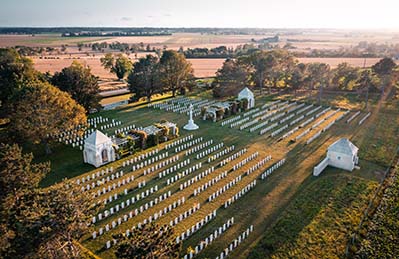
Ryes War Cemetery
Ryes War Cemetery lies close to Arromanches.
The first burials at Ryes were made just two days after the landings on Gold Beach.
Today, it contains around 650 Commonwealth war graves, roughly a sixth of which were casualties killed in Normandy on D-Day itself . Interestingly, there are around 330 German graves at Ryes War Cemetery .
Getting to Gold Beach
Gold Beach is accessible via public transport using Normandy’s transport network or by road.
For travellers from the UK, the fastest direct route to Normandy D-Day beaches is by ferry from Portsmouth.
The vessel docks at Ouistreham, taking you directly into the heart of the D-Day battlefields and landing beaches.
From Ouistreham, Arromanches and Gold Beach is about a 40-minute drive. Depending on traffic, it takes but takes around four hours when driving from Calais. Reaching Arromanches and Gold Beach from Cherbourg takes roughly an hour and a half.
Sword Beach
Where is sword beach.
Sword Beach was the most easterly of the Commonwealth Normandy landing beaches on D-Day.
It lies on an 8-kilometre of the Normandy coast between Lion-sur-Mer in the west and Ouisteham in the east. It is around 15 kilometres away from Caen.
Sword Beach was and is very sandy, turning into dunes. In 1944 It had only been lightly fortified with beach obstacles and emplacements, although German defences stretched inland.
An artillery battery at Merville, 8 km to the east, overlooked the beach. A range of mortars, 88m guns and machine guns were also built inland.
History of Sword Beach
Sword Beach was divided into four sectors for the D-Day assault. From west to east, they ran Oboe, Peter, Queen, and Roger.
Assaulting Sword were the men of the British 3rd Division, made up of regiments including the Suffolks, South Lancashires, and East Yorkshires to name a few. Accompanying the main assault were the special forces units from the 1st and 4th Special Service Brigades.
3rd Division’s D-Day objectives were to land and push up the beaches to pass through Ouistreham. Caen, as the region’s major transport hub, was 3rd Division’s chief objective, however.

Image: 8.45am Sword Beach, 6 June 1944 (© IWM)
The special forces were to push inland toward the Orne River and Caen Canal Bridges and link up with Airborne forces already in Normandy.
Seaborne forces’ landing craft hit Sword Beach at around 7.25 am. Fighting on the beach was relatively light. Within 35 minutes, Sword had been cleared and combat moved inland.
In the early afternoon, the Commandos had managed to link up with the men of 6th Airborne.
6th Airborne had been in Normandy for hours already, dropping in behind enemy lines around midnight. It was their job to the Orne and Caen bridges to provide exit routes for the forces assaulting Sword Beach. Other units were assigned to knock out the Merville battery.
Both airborne objectives had been achieved by the time the amphibious assault began, making it easier for the regular army units to come ashore.
By the end of June 6th, the British had landed some 29,000 men on Sword Beach. Taking the beach and subsequent fighting cost the British around 630 casualties.
Caen remained out of British hands until the end of July 1944.
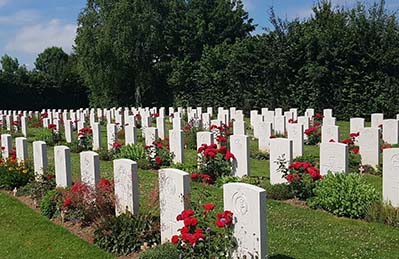
Hermanville War Cemetery
Hermanville War Cemetery contains many D-Day war graves , representing roughly a quarter of the 1,000 burials in the cemetery.
Hermanville is a small village that lies a short way behind Sword Beach.
It was occupied early on D-Day by men of the South Lancashire. Later that day, the Shropshire Light Infantry and tanks of the Staffordshire Yeomanry managed to capture Bieville-Beniville, around 4 kms to Hermanville’s south.
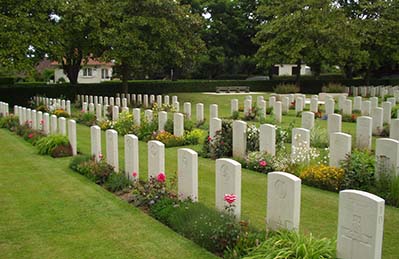
La Deliverande War Cemetery, Douvre
La Deliverande is only a short distance from Sword Beach, situated to the west of Hermanville.
The war cemetery was started not long after D-Day, with casualties from Sword Beach buried here, drawn from the beach’s Oboe and Peter sectors.
Over 1,020 personnel are buried at La Deliverande War Cemetery .
Getting to Sword Beach
Ouistreham is the quickest way to get to Sword Beach and the quickest way for UK visitors is via Portsmouth. The ferry from Portsmouth docks at Ouistreham.
Sword Beach is around three and a half hours by car from Calais and roughly the same by car from Paris.

Where is Juno Beach?
Juno Beach lies between Gold Beach to the west and Sword Beach to the East.
The landing zone stretched across a 10-kilometre front, stretching along the small fishing port of Courseulles-sur-Mer.
Several small conurbations and villages lay behind the beach’s sandy dunes or dotted the seafront. German forces occupied and fortified them with gun emplacements, fighting positions, and casemates.
Hidden beneath the sea on the approach to Juno were several natural obstacles, including reefs and shoals, making the approach tricky to navigate.
History of Juno Beach
Juno Beach was the third assigned to Commonwealth armies for Operation Overlord. The Canadian Army was tasked with taking Juno and forging inland, specifically the 3rd Canadian Division.
The Canadian D-Day objectives were to cut the Caen-Bayeux road, take the important Carpiquet airfield near Caen, and then link up with British troops making their way off Sword and Gold beaches.
Because of the natural hazards, Allied planners had to launch the Canadians later than desired so their landing craft could clear the reef on the rising tide.
The Canadians landed on Juno at 07.55 am on the morning of June 6th 1944. Not only were they 10 minutes behind schedule, but they were also three hours behind the optimal tide height.

Image: Canadian soldiers leave their landing craft on Juno Beach (© IWM)
This gave the Canadians a problem. Juno was littered in now partially submerged beach obstacles. The Royal Canadian Engineers were unable to clear an unobstructed path to the beach so landing craft pilots had to navigate by feel to get their men to shore.
Mines took a heavy toll on the Canadian landing craft. 30% of Juno landing craft were damaged or destroyed.
In contrast to Sword and Gold, the Canadians had a much tougher time getting off the beach. The German defences were more focussed on overlooking the coastline, rather than firing out to sea.
As the Canadian infantry made its way up Juno Beach, it came into enemy killing zones which reaped a terrible toll on the first wave. In the first hour of the assault, there was a 50/50 chance that each Canadian soldier become a casualty.
The Canadians never wavered, however, and by mid-morning they had captured the town of Berniéres and Saint-Aubin, getting off the beach.
Progress into Normandy was good. Success infantry waves supported by Canadian armour meant that by the end of the day, the Canadians had made the most progress of any Allied army in Normandy.
But that progress was not without cost. Off the Commonwealth forces on D-Day, the Canadians took the highest casualties , suffering 1,200 casualties (340 killed) for 21,400 troops landed on Juno.
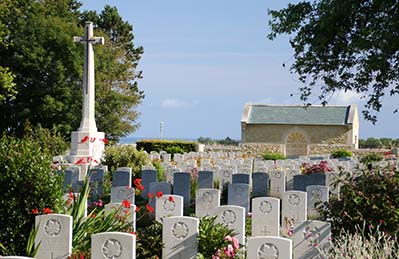
Beny-sur-Mer Canadian War Cemetery, Reivers
Beny-sur-Mer Canadian War Cemetery contains over 2,000 Second World War graves .
As the name suggests, most of the war graves in Beny-sur-Mer are Canadian.
Roughly 300 were killed on D-Day, either on Juno Beach or as the fighting turned inland.
How to get to Juno Beach
Most Canadians visiting Juno Beach will arrive in France via Charles de Gaulle Airport, around 25km north of Paris. From there, the quickest route would be a direct train to Caen or a three and hour drive from Paris.
Visitors from Britain are best to catch the ferry to Ouistreham as this will take you directly into the D-Day invasion area. Juno Beach is then a 25-minute drive, depending on traffic.
Reaching Juno Beach from Calais is roughly 3 hours and 45 minutes by car. From Paris, it can take up to 3 and a quarter hours, depending on traffic.
Omaha Beach

Where is Omaha Beach?
Omaha Beach was one of five landing beaches of the Normandy invasion. It was one of two assigned to the United States.
Omaha Beach stretched from Port-en-Bessin in the east to the mouth of the Vire River in the west, covering 10km.
The landing beach was overlooked by 30-metre-high cliffs. Some sections of the western beach were backed by a strong, 3-metre-high seawall as well. German Field Marshal Erwin Rommel had ordered Ohama Beach to be fortified as part of his Atlantic Wall.
The waters were mined, and beach obstacles were laid. German machine gunners peaked out over the beach from vast concrete bunkers and redoubts. Up the cliffs, a trench network wound its way inland.
Even today, numerous concrete strong points can be seen in and around Omaha, showing the area’s lethality.
The history of Omaha Beach
Omaha was assaulted by the forces of the US 1st Infantry Division, aka the Big Red One.
1st Division’s objectives were to capture the villages of Vierville, Saint-Laurent, and Coleville. It was to then push onwards toward the Bayuex-Isigny Road and continue heading west towards Pointe du Hoc.
The attack began at 06.30 on the morning of June 6, 1944. Choppy waters and strong winds drove landing craft off course.
Omaha turned into a killing field. American troops sought cover behind beach obstacles or wrecked vehicles, pondering whether to make the deadly run for the seawall.

Image: "Into the Jaws of Death", Robert F. Sargent's famous photo of the US 1st Division's assault on Omaha Beach (public domain)
The carnage was so bad that by 08.30, all landings at Omaha had stopped. Men on the beach were left on their own. Slowly but surely, the US soldiers began to form groups and scale Omaha’s imposing cliffs.
To alleviate the pressure, US Navy destroyers sailed up to the beach and began bombarding German positions at point-blank range.
By midday, German fire noticeably decreased as defences were flanked and taken from the rear. Allied soldiers could now begin opening each of Omaha’s five beach exits one by one.
Elsewhere in the Omaha sector, the US Rangers were given the job of assaulting Pointe du Hoc. Pointe Du Hoc is a rock escarpment jutting out into the English Channel which gave fantastic views of the American landing beaches at Normandy.
Atop were gun emplacements and casemates zeroed in on Utah Beach.
With rope ladders and grappling hooks, the Rangers scaled 100 sheer cliffs under heavy fire.
They managed to reach the top when, to their horror, they found empty casemates. Where were the big guns? Sweeping nearby, the Rangers thankfully found the German artillery, hidden in a sunken road, and disabled it.
By nightfall on D-Day, the US held ground around Vierville, Saint-Laurent and Colleville. The advance was far behind schedule, but the resistance had been incredibly tough at Omaha.
The US forces at Omaha had suffered 2,400 casualties but had managed to land 34,000 men.
How to get to Omaha Beach
Omaha Beach is around 40 minutes from Ouisreham, the disembarkation point of the Portsmouth-Caen Ferry. This would probably be the quickest way to reach Omaha Beach for UK visitors.
For those coming from Calais, the journey is roughly four hours by car.
American tourists paying a visit to the Normandy D-Day beaches are most likely to be arriving in France via Paris Charles de Gaulle Airport. By car, this will take between three and a half and four hours.

Where is Utah Beach?
Utah Beach was the most westerly of the five Normandy D-Day landing beaches.
It lies at the base of the Cotentin Peninsula, at the top of which lies the great Atlantic port of Cherbourg.
Utah covered 5 kilometres, running northwest of the Carentan estuary, along a ribbon of sandy, duned beach.
Four causeways exited Utah Beach, leading to the important crossroads towns of Carentan and Sainte-Mére-Église.
The land behind Utah is flat, open, and low-lying. To limit enemy movement, the Germans had flooded these areas and could control the flood levels with locks.
The history of Utah Beach
Of the Normandy landing beaches assaulted by US forces, Utah was the least heavily defended.
The assault began at 06.30 am, led by the IS 4th Infantry Division.
Their goal was to capture the beach, take control of the coastal roads, link up with Airborne elements dropped earlier in the day, and get ready for a later attack on Cherbourg.

Image: US troops wade ashore on Utah Beach (public domain)
The Utah landings were met with confusion. Strong currents blew the landing craft off course while the beach was obscured by smoke from the preliminary Allied naval bombardment.
Three control craft, essentially for guiding troops transports to the beach, were lost to mines.
Eventually, the Americans were able to land some 1,800 metres away from their designated area, leading commander Brigadier-General Theodore Roosevelt Jr. to declare “We’ll start the war from here!”.
This turned into a happy accident. The Americans had landed at a lightly defended section and within three hours had captured three of Utah’s four beach exits. By noon, they had linked up with paratroopers of the 101st Airborne.
By the end of D-Day, 20,000 Allied troops and 1,700 vehicles had landed at Utah.
How to get to Utah Beach
The closest ferry stop near Utah is Cherbourg, which is about 45 minutes away by car.
American visitors to Normandy’s historic D-Day beaches are likely to arrive in France at Paris Charles de Gaulle Airport. Then it is around a four-hour car journey to Utah Beach.
If driving from Calais, the journey to Utah takes around four and a half hours.
Normandy landing beaches map

Image: Map of the Commonwealth Normandy landing beaches with CWGC cemeteries and memorials highlighted.
Normandy beach tours
Guided tours are available where battlefield guys take visitors to the beaches.
These extend from week-long package deals to coach and minibus trips to day excursions to Normandy’s varied remembrance sites.
Self-driving tours are a very popular way history enthusiasts experience the beaches of Normandy. Cycle tours are also very common, taking in the beaches and the bocage.
Normandy boasts a wide network of tour operators and battlefield guides but at present Commonwealth War Graves does not partner with any tour operators in the region.
Visiting Normandy landing beaches from the UK & France
Ferry or Eurotunnel are possibly the easiest ways to visit the Normandy landing beaches from the UK.
There are multiple ferry crossings with some sea routes landing in Ouistreham (Caen), Cherbourg and Le Havre, which are all within a reasonable driving distance from the beaches.
Calais is a short ferry crossing. The Eurotunnel crossing also ends in Calais. However, the drive to Normandy can take up to four hours, depending on which beach you are visiting.
Normandy is accessible to the of France by its extensive motorway and railway network.
How long does it take to visit Normandy beaches of WW2?
The D-Day landing beaches stretch over 70 kilometres of the Normandy coastline. It may be difficult to fit all of them in just one trip.
There is a lot to see and learn at these locations and landmarks. Rushing through the sites may not be the best way to experience everything the beaches of Normandy have to offer.
Reports from tourists on sites such as Tripadvisor suggest two days should be enough to visit Normandy D-Day beaches.
What’s the best Normandy landing beach to visit?
That depends entirely on your particular area of interest or connections to the D-Day story.
For Canadians, for example, Juno Beach and the museum there will likely be the first port of call on a Normandy beaches trip.
UK tourists may prefer to visit Sword and Gold Beaches. For US tourists, their first interaction with Second World War history may have been through the stories of Utah and Omaha Beaches, so they may be more drawn to them.
Each beach is a location steeped in history. There are museums, old bunkers and gun emplacements, and artefacts of the Normandy landings at each.
In the case of the Commonwealth landing beaches, Commonwealth War Graves cemeteries and memorials are close by too, commemorating many of the men who were killed storming the beaches of Normandy.
What’s the best time to visit Normandy beaches?
Between April and October is considered by organisations such as Normandie Tourisme as the best time to visit the Normandy beaches.
Temperatures are generally mild through spring to autumn, averaging 15-28°C (55-85°F), so the weather should be pleasant.
The summer is when tourism will pick up, especially in June when D-Day anniversary events will be taking place across the beaches and at locations tied to the invasion. Normandy is likely to be very busy at times like this, so take that into account when planning a trip to Normandy.
For cooler weather and less crowds, try visiting in April/May or September/August.
What’s the best way to visit Normandy beaches?
Again, this is dependent on your circumstances, itinerary and how you like to engage with historical sites. You may wish to book a guided tour or visit at your own pace. There is no definitive “best” way to visit Normandy beaches.
Where to stay when visiting Normandy beaches?
The beaches are studded with many small villages and seaside towns, as well as larger places like Arromanches and Ouistreham.
Each is full of hotels, guest houses, and bed and breakfasts offering accommodation.
According to Camping France, there are 36 campsites near the Normandy beaches.
Do I need a guide to visit Normandy beaches?
You do not need a guide to visit Normandy beaches.
Can you visit Normandy beaches without a tour?
Yes, Normandy’s D-Day beaches are easily accessible to the public without tour guides.
Are you allowed to go on a Normandy beach? Yes, these are public beaches and open for everyone to enjoy.
At the height of tourist season, the beaches are covered in beachgoers enjoying their summer holidays with swimming and making sandcastles, intermingling poignantly with the reminders of the Atlantic Wall and D-Day landings all around them.
Other memorial sites to visit in Normandy
When it comes to Normandy WW2 memorial sites , you are spoiled for choice.
There are over 115 Commonwealth War Graves sites in the Calvados region of Normandy alone. They are reminders of the cost of D-Day and the Normandy Campaign.

Image: The Normandy American Cemetery (Public domain)
American troops are commemorated at the Normandy American Cemetery. It holds over 9,000 Second World War burials. A further 1,500 are commemorated on the Normandy American Memorial.
German casualties are buried at La Cambe German War Cemetery. Once an American war cemetery, La Cambe has been a German site since 1948 and holds 21,000 burials.

Lighting their Legacy
Across the UK, May & June
Discover our national programme of events and inspire the next generation.

The Great Vigil
Normandy, 5 June
Join the culmination of our D-Day events as we illuminate every CWGC grave in Normandy.
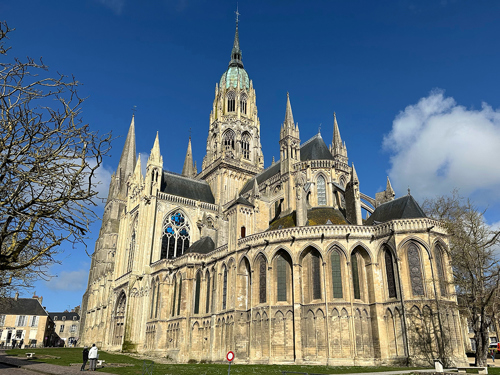
DISCOVER OUR 80TH ANNIVERSARY WW2 EVENTS
We're holding a number of events across the UK and in Normandy in the build up to the 80th anniversary of D-Day. Find out more about what we're planning and discover how you can get involved.

12 Top Normandy D-Day Beaches and Memorials
Written by Barbara Radcliffe Rogers Updated Mar 30, 2022
The allied invasion of Normandy on June 6, 1944 is not only one of the great epics of military – and human – history. D-Day was also the turning point that brought Europe out of the iron grip of the Nazis and all the bigotry, genocide, oppression, and inhumanity they stood for.
Establishing a western land front was crucial to the allies, and in a few short hours, and in the face of overwhelming odds, it was accomplished by the massive and heroic efforts of Canadian, American, and British forces joined by smaller contingents of Polish, Danish, and Free French troops.
The fact that the months of strategic and material planning and preparation for the code-named " Operation Overlord " was all carried out in secret, all the while feinting at an invasion elsewhere to divert German troops, is nothing short of a miracle.
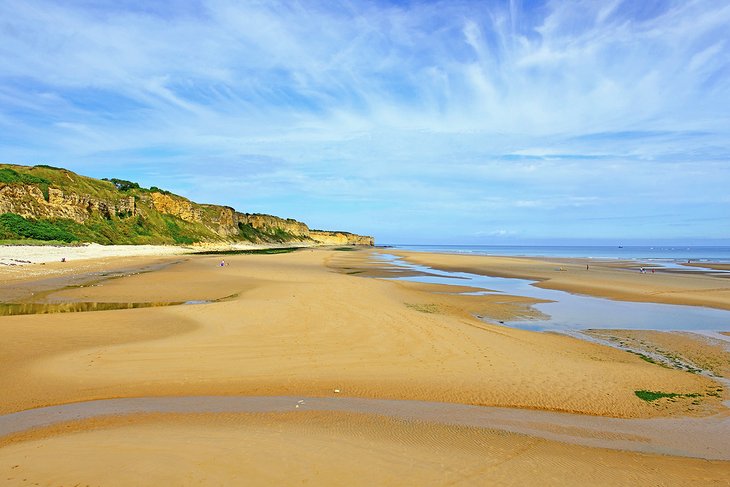
The landing sites lie between Pegasus Bridge in the east and Sainte-Mère-Église in the west and are described below in that order, east to west. Today, this stretch of Normandy's English Channel coast has returned to sandy beaches filled with laughing children and sun-seekers, but everywhere you go are reminders of those terrible days and the horrific toll of lives they took. Hitler's " Atlantic Wall " is still evident in tank traps and massive bunkers, some askew where they slowly settled into the dunes in more peaceful decades since, others made into some of the many museums that tell the D-Day story.
At each of the landing sites and all along the shore are monuments and memorials to those who fought and died, and each museum illuminates a different piece of the story. These are more than tourist attractions. They are moving scenes that lead visitors to deeper thoughts on mankind, its past and its future. They deserve the attention of every generation, and the museums reflect this.
Several have exhibits well-designed for young people, realistically replicating scenes and showing in videos or activated models how equipment worked. There are things to do as well as things to see: visitors can climb aboard historic landing craft, sit in a tank, step inside a replica glider, explore dark cavernous bunkers, and look for tank traps in the dunes. Or they can stand in silence at the Normandy D-Day beaches and memorials as they try to picture these scenes from history.
Although it's possible to visit some of the main landing beaches on a day trip from Paris , if you want to explore the coast and its World War II history more thoroughly, you'll need more time here. Plan your trip to the historic sites with the help of our list of the top Normandy D-Day beaches and memorials.
1. Caen Memorial Center
2. pegasus bridge, 3. sword beach and the atlantic wall museum, 4. juno beach, 5. arromanches, 6. omaha beach: american cemetery and overlord museum, 7. pointe du hoc, 8. utah beach and the museum of the landings, 9. sainte-mère-église and airborne museum, 10. gold beach and british normandy memorial, 11. falaise and the memorial to civilians in wartime, 12. memorial museum of the battle of normandy, map of normandy d-day beaches and memorials, tips and tactics: how to make the most of your visit to normandy d-day beaches and memorials.
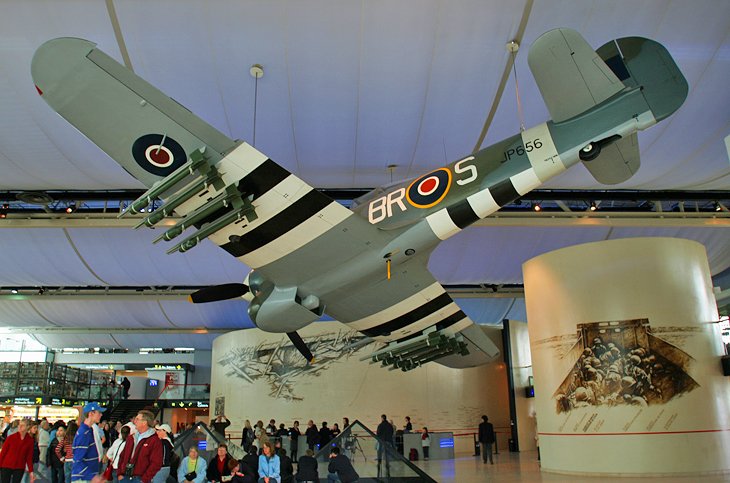
A good starting point for visiting the Normandy beaches is the excellent Caen Memorial Center, where you'll not only get an overview of the battle of Normandy, but a sense of the personal lives of the people who took part in it and were affected by it.
The museum begins its exhibits with the 1920s and the beginning of World War II in the aftermath of the First World War, examining the origins of war and the rocky path to peace, and carries the story though the uneasy Cold War years, putting World War II into its historical context.
War exhibits look at military personnel from both the allied and German armies, with intimate glimpses of their lives through letters and personal accounts. Special emphasis is on the Battle of Normandy. An excellent 19-minute film documents this battle with original historic footage.
Address: Le Mémorial de Caen, Esplanade Général Eisenhower, Caen
Official site: http://normandy.memorial-caen.com
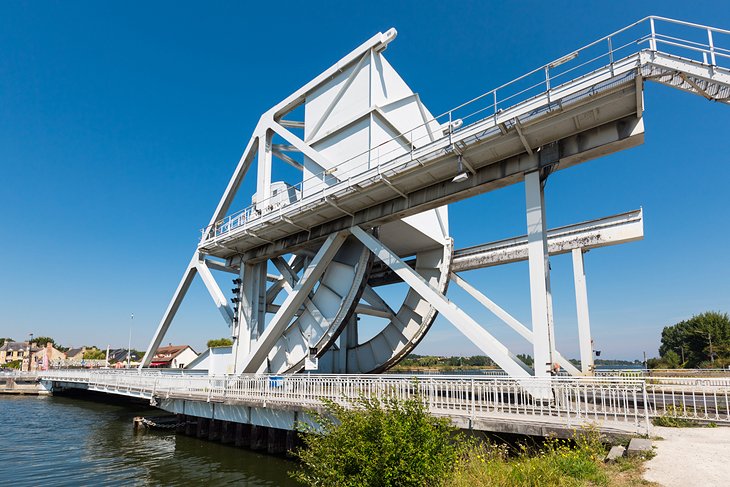
At 10 minutes past midnight on June 6, the first parachutist landed just east of Ouistreham and at 12:20am, six gliders crash-landed beside the Caen Canal with 45 men. Subsequent landings dropped a total of 6,000 men of the British 6th Airborne Division with supplies and weapons.
Their mission was to seize and hold the bridge over the canal to prevent German land reinforcements from reaching the assault target area, and at the same time keeping the bridge open and intact for allied forces to move eastward.
The current bridge looks very much like the original, which you can see - and cross - at the Pegasus Bridge Museum , on the Bénouville side of the canal, where there is also a full-size replica of a Horsa Glider and a large section of one of the originals used in the landing. Café Gondrée, the first house in France to be liberated, on the Ouistreham side of the canal, is now a tearoom and shop.
A short drive east of Pegasus Bridge in Merville-Franceville and guarding the coast at the eastern flank of the D-Day invasion, the Merville Battery consisted of multiple bunkers that had withstood repeated allied air attacks. The position was finally taken by British paratroopers, but the structures remained intact. You can tour the bunkers and become immersed in the attack in a sound-and-light show that includes realistic details such as smoke.
Address: Avenue du Major Howard, Ranville
Official site: www.memorial-pegasus.org
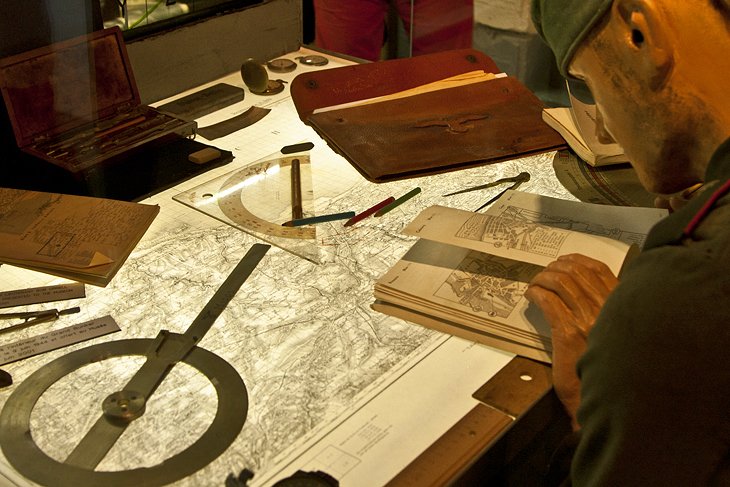
The easternmost D-Day landing beach is at Riva-Bella, part of Ouistreham and a short walk from the terminal where today ferries arrive from Portsmouth, England. Ouistreham has a small fishing harbor but is also home to the entrance of the Caen Canal, the outlet of the River Orne and the Port of Caen. The Atlantic Wall was especially strong here, with armed bunkers every 100 yards and beaches strewn with mines and tank traps.
The British and a contingent of Free French landed at 7:30am on June 6, and by 9:30, the Casino, seat of the German command force, had been cleared by Free French commandos. Still in operation was the German fire control post, a 52-foot-high concrete bunker that was not taken until June 9.
This bunker is now one of the most authentic museums of the entire coast, recreating in exact detail the appearance and work of each room in its six floors, including the observation post with its powerful range-finder and a 360-degree view over Sword Beach. Using actual equipment and furnishings, the bunker details the daily life of the soldiers stationed here, as they directed the fire from batteries covering the entrance of the Orne and the canal. Additional exhibits detail the building, extent, and camouflage of the Atlantic Wall.
On the beach, which is today a lively recreational beach with pony rides, go-carts, and rows of bright umbrellas, are monuments recalling D-Day, and near the rebuilt Casino, the No 4 Commando Museum tells the story of the only French forces that took part in the ground operations in D-Day landings.
Address: Avenue du 6 Juin, Ouistreham
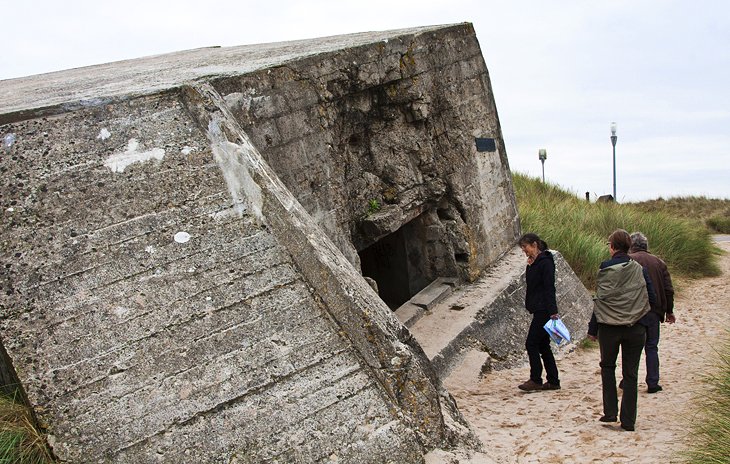
The coast of Courseulles-sur-Mer and its adjacent towns was unsuited to a solid frontal landing, so Canadian marine commandos landed first to attack and disable German positions. More Canadian forces landed with equipment and advanced inland to take an important German airfield. Sherman tanks came ashore at Courseulles-sur-Mer and by 5pm, the town was liberated.
Of particular interest to Canadian visitors, the Centre Juno Beach is a family-friendly series of exhibits, hands-on presentations, and films looking at the Canadian preparations and contributions to the allied effort through personal stories and interactive experiences. This center offers a unique Canadian perspective and includes an exhibit on Canada today.
From April through October, guides lead tours of remains of the Atlantic Wall, exploring its bunkers and the tunnels leading to the underground command post. You can see damaged bunkers on the beach independently.
At the western end of beach, look for the double-armed Cross of Lorraine, marking the site where Charles de Gaulle made a brief return to France on June 14, 1944, after his self-imposed exile in England upon the fall of France in 1940. At the other end of town, a Sherman Bold tank recovered in 1970 from more than a mile out at sea stands as a monument to the Canadian Hussars.
Address: Voie des Francais Libres, Courseulles-sur-Mer
Official site: www.junobeach.org
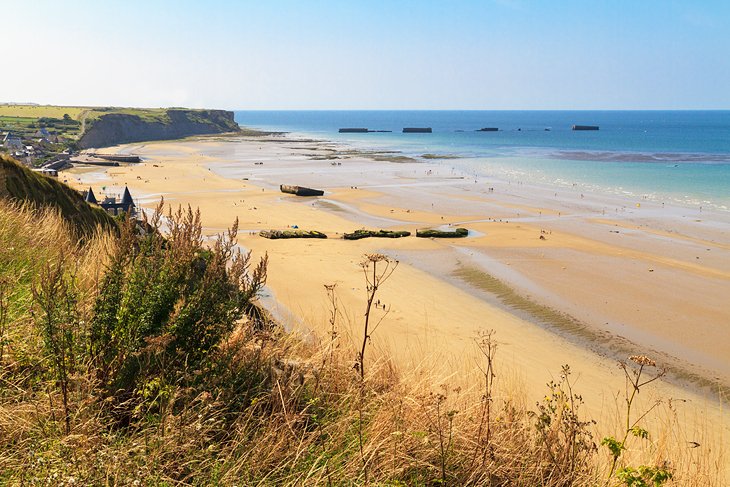
The lack of large harbors along this stretch of the Normandy coast was both a plus and a minus to the allied forces. While it allowed them the element of surprise because the Germans thought they wouldn't try a massive landing here, it also created the problem of how to get men and heavy equipment ashore on soft sand beaches and marshes that were both open and heavily defended.
The allied answer was to construct a massive artificial port. Huge concrete caissons were towed across the channel and sunk offshore to create a breakwater and a harbor inside its protection, where long floating roads were assembled to offload tanks and equipment. Remains of this Mulberry Harbor can be seen today at Arromanches, where British forces landed under brutal fire.
Despite heavy casualties, by 4pm on June 6, British tanks began rolling ashore here. Although one of the two Mulberry Harbors was destroyed in a storm, by the time it was replaced by the liberation of the Port of Cherbourg, more than 500,000 tons of equipment and supplies had entered this artificial port.
The D-Day Museum not only pays homage to the British forces and the other allies in the Battle of Normandy, but it illustrates the operation of the Mulberry Harbor through working scale models, complete with animated details such as rising and falling tides. Just west of Arromanches, at Longues-sur-Mer, you can visit sections of the Atlantic Wall, including a battery with a German range-finding post and four casemates, each of which housed a 150-mm artillery piece.
Address: Place du 6 Juin, Arromanches
Official site: http://www.musee-arromanches.fr
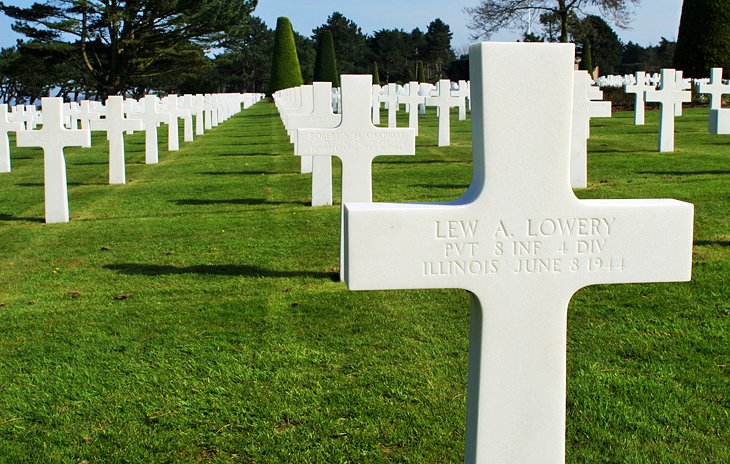
The landing at Omaha Beach went badly from the start and by the end of June 6, the Americans had lost 3,000 men, with as many more wounded or missing. But they had secured a narrow corridor to get supplies and equipment ashore.
It is fitting that this scene of so many casualties should be the location of the American Cemetery, where 9,386 graves are marked with perfectly aligned white marble headstones. You can also visit the Memorial, the Garden of the Missing, and a viewing platform that overlooks Omaha Beach.
In the Overlord Museum, 10,000 artifacts including vehicles, tanks, and cannons are used to create realistic life-sized replicas of scenes from the D-Day landings and the subsequent operations culminating in the liberation of Paris.
Giving it a human dimension are accounts, stories, impressions, and objects from those events. Sound and light effects add to the authentic equipment and artifacts, making the reconstructed scenes even more realistic. The museum is well-suited for younger visitors, with exhibits and programs that make history understandable.
Address: Rond-point d'accès du Cimetière Américain, Lotissement Omaha Center, Colleville-sur-Mer
Official site: www.overlordmuseum.com
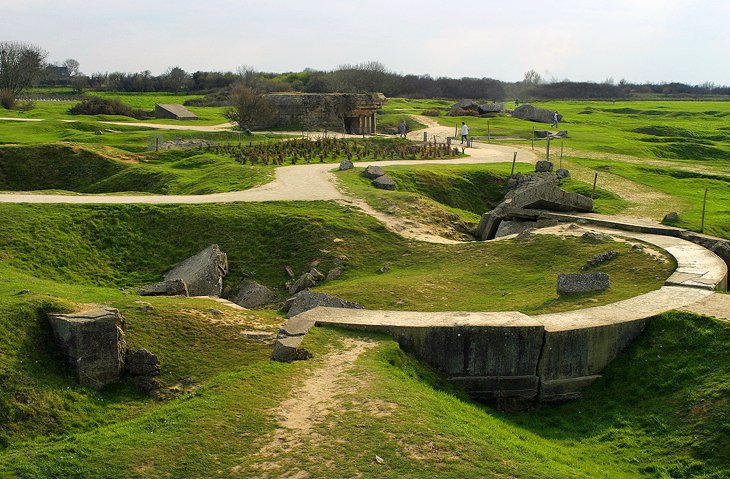
Although the magnitude of the invasion, the difficulty of the highly defended terrain, and its tremendous cost in human lives will strike you again and again as you tour these beaches, one of the most gripping relics of D-Day is atop the soaring cliffs of Pointe du Hoc. The entire clifftop is pocked with bomb craters, and huge batteries lie askew where they were exploded off their foundations.
Stand at the top of the rough 100-foot cliffs and imagine the US Rangers who scaled them after landing on the narrow beach below at 6:40am on June 6. The scene has been left as it was and is an official war grave for the men who still lie beneath the ruins.
This point was important because it was the highest land between Omaha and Utah beaches and could thus fire upon both of them. In fact, its long-range guns had been moved elsewhere, but the allies had no way of knowing this.
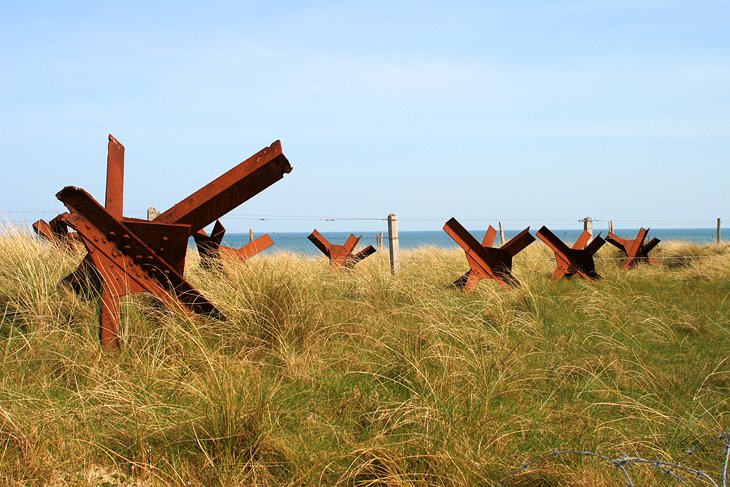
All things are relative, and measured by the tremendous casualties elsewhere, Utah Beach was almost easy. By the time the 4th Infantry hit the beach at 6:30am, the tide was low, and bombers and artillery from ships offshore had already battered the German coastal defenses and disabled much of their firepower.
This reduction in enemy fire secured their landing during low tide, creating conditions that made it possible to safely land all but two tanks by revealing the placements of "Czech Hedgehogs," "Rommel's Asparagus," and other landing obstacles, some of which you can still see in the dunes. By 1pm, the American 4th Infantry had joined up with the airborne units inland to secure the area.
A former bunker of the Atlantic Wall has been incorporated into the Museum of the Landings, where you can see one of only six remaining original B26 Marauder bombers and an LVT-2 Water Buffalo, the landing craft used to offload supplies from the cargo ships off the coast.
The exhibits are especially well designed to illustrate not just the operations at Utah Beach, but the entire Operation Overlord, and some pieces of equipment are accompanied by videos demonstrating how they worked. Among the several monuments here is Milestone 00, marking the beginning of Liberty Road , and commemorating the route of Allied forces from the Normandy beaches to Bastogne, Belgium.
The nearby Crisbecq Battery Museum is a semi-open-air museum set in 21 German bunkers that were part of the Atlantic Wall guarding Utah Beach. They were (and are) linked by a network of trenches, and some of the bunkers contain dioramas showing life in the battery.
Address: Plage de la Madeleine, Sainte Marie du Mont
Official site: http://www.utah-beach.com
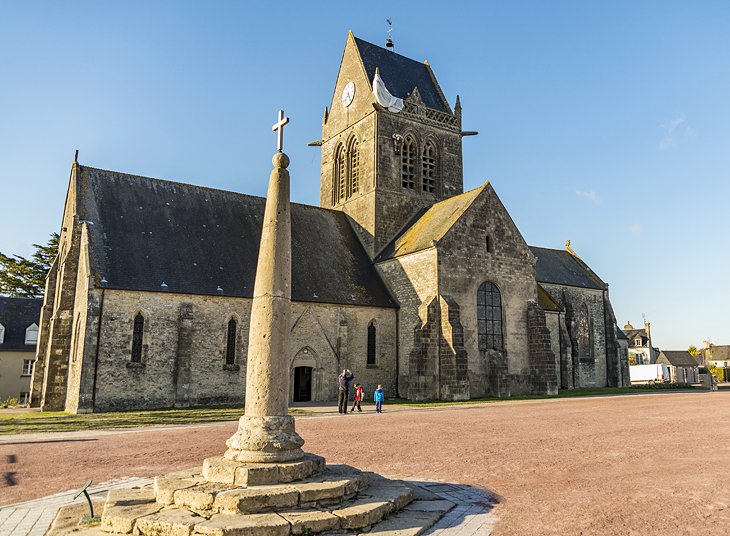
Inland from Utah Beach, and crucial to the success of the entire operation, paratroopers of the 82nd and 101st Airborne Division began the invasion well before dawn in and around the town of Sainte-Mère-Église. Like their British counterparts at the eastern edge of the invasion target, their job was to establish a western line to protect the liberated territory from being retaken by German ground forces.
The dramatic story of their dangerous mission is well told in the Airborne Museum, which re-creates some of the experiences of both the landing assault and the townspeople, as Sainte-Mère-Église became the first town in Normandy to be liberated. It was 4:30am when the American flag was raised over Sainte-Mère-Église, 15 minutes before the capture of the Merville Battery securing both ends of the landing zone.
The town's church still re-creates the scene villagers awoke to, with paratrooper John Steele suspended from his parachute on the church roof. Steele's medals, memorabilia from several generals and others who took part in the operation, and a C-47 Dakota used in the drops add to the collection of original artifacts used to immerse visitors in the reality of this historic assault that set Operation Overlord in motion.
Address: 14 rue Eisenhower, Sainte-Mère-Église
Official site: www.airborne-museum.org
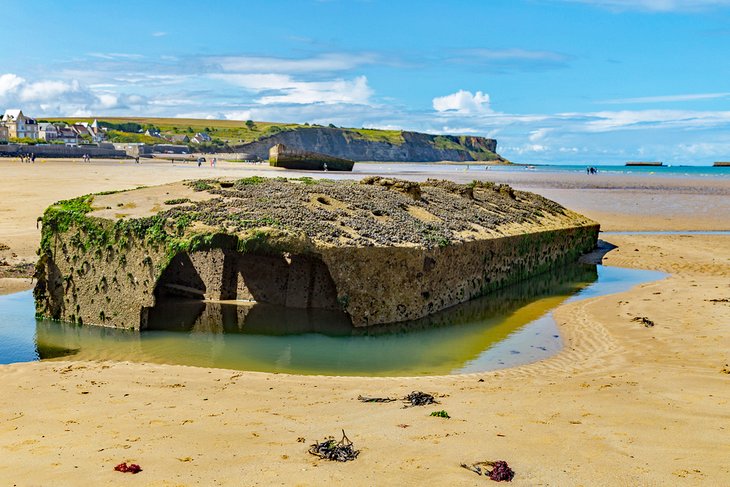
East of Arromanches, a series of beaches code-named Gold Beach stretches for five miles toward Courseulles-sur-Mer and Juno Beach. It was one of the hardest-won beaches, captured late in the afternoon of June 6 by units of the British 50th Infantry Division. Joining with the Canadian landing forces to the east, the combined forces were able to liberate Bayeux the following day.
Overlooking Gold Beach, just outside the village of Ver-sur-Mer, the British Normandy Memorial was dedicated on June 6, 2021. It records the names of all those men and women under British command who lost their lives in Normandy between June 6 and August 31, 1944. Dioramas and other exhibits at the Musée America Gold Beach in Ver-sur-Mer detail the landing and fight to control the beaches.
Address: 2 place de l'Amiral Byrd, Ver-sur-Mer, Normandy
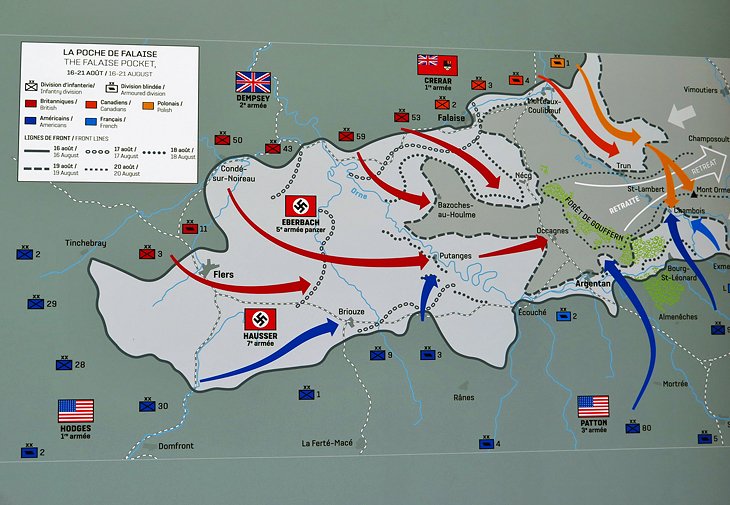
South of Caen and some distance from the landing beaches, Falaise had the misfortune of finding itself in the middle of a key Allied maneuver to trap retreating German troops in the weeks following D-Day. And it is the site of the newest museum of World War II, opened in 2016 to explore the experience of civilians during the German occupation, under the Vichy government, during the allied attacks, and after liberation.
The modern museum uses video interviews with people who lived through these events, along with photographs and often touching artifacts showing such things as propaganda for school children and chronicling the fates of resistance fighters and Jewish families. All audio and signage is also in English. A sound theater recreates scenes from the bombing of Falaise, its glass floor hovering over wartime ruins uncovered during the renovation of the building.
The museum also details the significance of the " Falaise Pocket, " where the last remaining German forces stood between the allied troops and Paris. Despite his armies being almost surrounded near Falaise and badly depleted, Hitler would not allow his commanders to withdraw through the slim corridor they still controlled.
Instead, he ordered them to attempt a counter-offensive. It failed, and their escape route was closed. Two days later, allied troops liberated Paris. The Battle of the Falaise Pocket was the final and decisive conclusion of the Battle of Normandy.
The museum is adjacent to the magnificent Falaise Castle , birthplace of William the Conqueror, well worth seeing while you're in Falaise.
Address: 12 Place Guillaume le Conquérant, Falaise
Official site: http://www.memorial-falaise.com
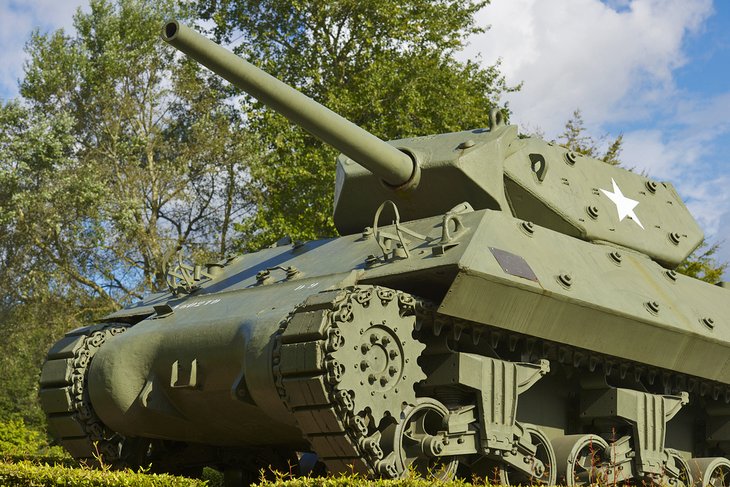
Recounting the Normandy Campaign from the Allied troop preparations to D-Day on June 6th, 1944 and the liberation of Paris on August 25 th , the 2,300-square-meter exhibition includes military equipment used on the landing beaches, as well as an excellent film "Normandy 44, a Decisive Victory in the West." This film, combined with the exhibits, puts Normandy's place in deciding the outcome of the war in the perspective of operations elsewhere, but deals mainly with Normandy's pivotal role.
While in Bayeux, be sure to see its best-known tourist attraction, the UNESCO inscribed Bayeux Tapestry , an 11th-century masterpiece of medieval embroidery depicting the story of the conquest of England in 1066 by William the Conqueror.
Address: Boulevard Fabian Ware, Bayeux
- Planning Your Trip : The main sites are between Pegasus Bridge, in Bénouville to the east, and Sainte-Mère-Église on the western end, and it makes sense to visit them in geographical order. The coastal road connects a whole series of beach towns, or if you are just visiting the main sights, you can reach them from a base in either Caen or Bayeux.
- Timing Your Visit : How long you should stay depends on how much time you plan to spend in various museums. While some of the material in the museums repeats, each one focuses on a particular landing site, event, invasion force, or part of the strategy. Be aware that some of the smaller museums close in the winter, usually from November through April. Most of these sights are today lively beach towns, with plenty of other things to do, especially in the summer.
- Visiting with Children and Teens : While young eyes may quickly glaze over at the details of the landings, a few of the more visual sights will bring the history to life. Begin at the Caen Memorial Center, where the film sets the stage for what they'll see later. Other sites with good visual appeal are Pégasus Bridge, where there's a full-size replica of a glider and the Atlantic Wall Museum, housed in a real 52-foot-high concrete bunker, showing the daily life and work of German soldiers as they directed the German fire. The Centre Juno Beach has hands-on exhibits and films, and kids can climb through ruined bunkers on the beach.
More Related Articles on PlanetWare.com
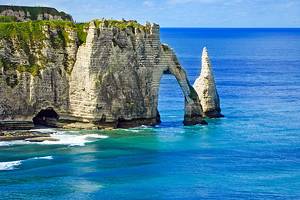
More Places to Visit in Normandy: While visiting the D-Day landing beaches, you are sure to be struck by the lovely countryside and coastline, which you can explore easily with our page on the top-rated attractions and places to visit in Normandy . You will also find our page on the top tourist attractions in Rouen and easy day trips handy in planning your trip, as well as our insider's guide to visiting Mont Saint Michel , on the western coast of Normandy.
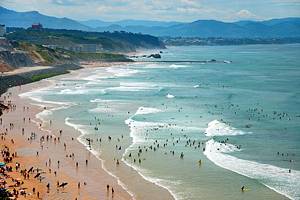
Places to Visit in France: To see more of the nearby tourist attractions of France , you can use our page on places to visit in Brittany . Like Normandy, Brittany is where you'll find some of the most beautiful beaches in France.

More on France

Top Normandy D-Day Landing Beaches and World War II Sites
Jean-Philippe Tournut/Getty Images
Normandy is a pilgrimage site for travelers who want to tour the landscape of D-Day, one of the most momentous events in modern history. 2019 marks a major landmark: the 75th anniversary of the invasion that led to the liberation of Western Europe from the clutches of the Axis Powers.
Upon arriving in northwest France along the English Channel , visitors will find 10 important destinations to take in, from the comprehensive Mémorial de Caen and the aviation-oriented Airborne Museum in Sainte-Mère-Église to the solemn American Military Cemetery at Colleville-sur-Mer. And, of course, visiting the famed sands of Utah Beach and other Allied landing spots is an essential part of exploring this important landscape.
Along the way, visitors will even learn about soldiers like Private John Steele and Lieutenant Norman Poole, individuals who made the invasion a success, as well as world leaders like Prime Minister Winston Churchill.
Caen Memorial
Visiting the Mémorial de Caen first upon arriving in Normandy will give you a broad overview of World War II and the essential role of the region's beaches played in on fateful Tuesday, June 6, 1944. Housed in a modern, purpose-built structure on the outskirts of the charming city of Caen, the huge exhibition takes you from the build-up of World War II through the end of the Cold War.
The memorial is full of objects and films made during the war and after that dramatically convey the global history of the war, including as personal stories of the soldiers. The memorial includes dioramas of the attack on Pearl Harbor and the Battle of Normandy and details the harrowing atomic destruction of Hiroshima and Nagasaki.
A visit here should be the focus of the day. This comprehensive view of World War II is a lot to absorb and can leave visitors drained. Nevertheless, it's a fulfilling experience that shines a spotlight on the value of peace and the sacrifices made on Normandy's beaches.
The Mémorial de Caen is located at Esplanade Général Eisenhower, 14050 Caen.
The Airborne Museum in Sainte-Mère-Église
The first sight as you drive into the picturesque Sainte-Mère-Église is a lifelike model of a paratrooper hanging from his flapping parachute caught on the village's centuries-old Catholic church. Private John Steele was part of the attack by the American 82nd and 101st Divisions, and the effort was ultimately a success: On the night of June 6, 1944, it became the first town liberated. The town was vital to the Allies in protecting nearby landings at Utah Beach.
Discover the many details of Sainte-Mère-Église in its Musée Airborne, or Airborne Museum, located next to the church. It's unmissable, as its domed buildings are designed to look like air-filled parachutes. In front of one hall is a restored a Waco glider. A second hall houses a Douglas C-47 Dakota plane that dropped paratroopers into the Norman countryside and towed gliders. A third building houses Operation Neptune, an interactive display that transports visitors to the frenetic and momentous scenes of D-Day.
There are plenty of stories to learn in Sainte-Mère-Église and the Airborne Museum, including about Private Steele. He played dead for two hours dangling in his parachute harness but was finally captured by the Germans. But he and fellow soldiers escaped; Steele found his division and rejoined the battle. Classic film buffs might recognize Sainte-Mère-Église as a backdrop in the epic The Longest Day .
The Musée Airborne is located at 14 rue Eisenhower.
Sites Around Ste-Mère-Eglise and Utah Beach
One of the best ways to explore this region of Normandy is with a comprehensive map and audio guide from the Tourist Office in Ste-Mère-Eglise. Loaded on an iPad, the virtual assistant can help you find both smaller memorial sites and also major D-Day battle sites. It’s very well done, including GPS coordinates to keep you going in the right direction along winding country roads.
After a general introduction, there are 11 stops on the tour. At each waypoint, the iPad shares images of the actual battles along with commentary that tells you exactly what happened.
The tour is easy to follow, and you can follow it take it at your own pace. In general, it takes between two and three hours.
There's a fee to check out the iPad, and identification and a credit card deposit are required.
Pick up your iPad guide at the Tourist Office, 6 rue Eisenhower.
Utah Beach Museum
It's a name known with reverence across the world: Utah Beach.
The Utah Beach Museum, or Musée du Debarquément Utah Beach, stands on the sandy dunes of a beautiful stretch of Normandy coastline. Today, it’s a popular place for windsurfing in the breeze, swimming in clear waters, and strolling along the shore. But on June 6, 1944, it was a very different scene. At 10 minutes past midnight, Lieutenant Norman Poole of the British Army's Special Air Service landed on Utah Beach, the first allied soldier to set foot on French soil. It was the start of Operation Overlord.
There’s a very good mix of films and objects in the museum's collections and dioramas, including a complete briefing room illustrating the Allied invasion strategy. Perhaps the most visually impressive display is a windowed hangar-style concourse that houses a huge Martin B-26-G bomber. The museum is surrounded by monuments to soldiers, like the striking obelisk at its entrance. For a reflective view, its upper floor affords a gorgeous view of Normandy's now tranquil coastline .
Find the Musée du Debarquément Utah Beach at 50480 Sainte-Marie-du-Mont.
American World War II Cemetery in Normandy
Hallowed ground, the American Military Cemetery at Colleville-sur-Mer holds 9,387 American graves. Most of the soldiers buried here were involved in the Normandy D-Day landings and the battles that followed. The cemetery is on the site of the temporary St. Laurent graveyard, which was established by the U.S. First Army on June 8, 1944.
Start at the Visitor Center for an exhibition that explains Operation Overlord and the shares the life stories of some of the soldiers who fought and died in Normandy. Don’t miss the poignant film Letters , which highlights the lives of some of the young men who fought here through the words and memories of their mothers, fathers, girlfriends, and friends.
The immaculately manicured cemetery itself is huge, covering 172.5 acres. To get there, walk down a path to a plaque which shows you the battle and offers a panoramic view of the sweeping sandy beach below. In the cemetery itself, perfectly aligned white headstones adorn a gentle slope that stretches into the distance, seemingly into infinity. At one end stands the Memorial with its lovely circular chapel. For all its solemn expanse, these cemetery grounds aren't the largest in this part of the world; that particular honor goes to the Meuse-Argonne Cemetery . However, with its relatively recent setting in time, it could be said to be the most moving.
The American Military Cemetery is located at 14710 Colleville-sur-Mer.
The D-Day Museum, Arromanches-sur-Mer
The Musée du Debarquément (D-Day Museum) at Arromanches explains the construction of the extraordinary Mulberry Harbors with heir temporary breakwaters, piers, and docks that allowed the Allies to take control of Normandy's heavily fortified coastline. In 1942, Churchill had sent a memo to Lord Mountbatten, Britain's Chief of Combined Operations, that the construction "must float up and down with the tide. The anchor problem must be mastered. Let me have the best solution." This museum displays how the problem was solved.
A formidable task, but the best solution was an ingenious series of artificial ports built for ships filled with Allied soldiers and supplies to follow up on the first wave of amphibious and parachute attacks.
The harbor was begun after the liberation of Arromanches on June 6; ships were scuttled on June 7; concrete blocks were sunk on June 8; and by June 14, cargo ships began to be unloaded. Aside from the sheer architectural difficulty of creating the artificial harbors, the Allied corps constantly contended with terrible English Channel weather that continually destroyed their hard work.
The museum is quite old and small, but it's nonetheless a worthwhile stop with its excellent film on the building of the Mulberry harbors. Looking out over the long beaches, the remains of the artificial port is still visible more than seven decades after it was built.
Reach the Musée du Debarquément in Arromanches at Place du 6 Juin.
Arromanches 360 Circular Cinema
For an unforgettable spectacle, climb a series of steps that ascend from the middle of Arromanches to the circular cinema that rises above this small Norman town. You can also drive.
Standing in the center of this engaging cinema that's build on the remains of a Mulberry harbor, a historic film illuminates nine screens that loop around you."Normandy's 100 Days" tells the stories, complete with historical footage, of the thousands that fought—and often died—to liberate Europe. But note: It's an immersive experience, so be prepared.
Visit the Arromanches 360 Circular Cinema at 4117 Arromanches.
Mémorial Pegasus
The Mémorial Pegasus commemorates the daring exploits of the British 6th Airborne Division, which was made up of more than 12,000 troops including a battalion of 600 volunteer Canadian troops, 177 French Commandos, a Belgian unit, and a Dutch brigade. They parachuted from gliders that took them silently to Normandy from England. Once there, they protected the D-Day landings from assaults by German troops.
At the waterside museum on the outskirts of Caen, begin your visit with a short film of the expedition. Beyond showing the expedition, it sets a few myths straight. For instance, in The Longest Day , Lord Lovat and his bagpiper musically walk across the bridge; in fact, they ran over the bridge with bagpipes silent.
The Pegasus Bridge that once spanned the Caen Canal is key display at the memorial. It was a major objective of the Allies in the invasion. There’s also am easy-to-assemble Bailey bridge, huts with different exhibitions inside, and a reconstructed Horsa glider.
Mémorial Pegasus is located at Avenue du Major Howard, 14860 Ranville.
The Merville Gun Battery
Squatting along Norman coast just a few years from the churning waves of the English Channel, the Merville Gun Battery digs into the ground. Once part of the huge Atlantic Wall built by the Germans to defend Europe against Allied invasion, it was heavily fortified.
Today it’s a rather eerie site, one that's both peaceful with its small town, seaside setting and also sinister with its massive wartime bunkers. When exploring the site, start outside where a Douglas C-47 Dakota is parked. Then explore bunkers to learn the history of the 9th Battalion’s assault on the battery. It came at a terrible cost: of the 750 soldiers sent on the capture mission, a mere 150 landed and only 75 survived.
Be prepared for surprises, particularly the extremely loud sound and light show that happens every 20 minutes. It gives a very real—and terrifying—impression of what life was like inside a bunker under attack.
Find the Merville Gun Battery at Place du 9 Battalion in Merville-Franceville.
The Juno Beach Center
Juno Beach sits between Gold and Sword Beaches. During the D-Day invasion, all three were under the command of the 2nd British Army. Juno was liberated mainly by Canadian forces. Their fight is documented at the excellent Juno Beach Center.
The museum is slightly different from the others in the region with its eye on Canada. It focuses on the Commonwealth country's background and how it entered the war. It gives you as much insight into Canada from the 1930s up to the present day as it does on the war itself. The sections on the war itself are equally well done, with interactive displays, films, and audio guides.
The attack was as bloody as on the other beaches: 1,074 men landed on Juno beach and 359 were killed.
After a visit, a guide takes you to the beach and the bunker in front of the museum, explaining the Atlantic Wall and the battles of the June landings. It's a reflective opportunity to remember the 18,000 Canadian casualties of the invasion of Normandy, of whom 5,500 died.
Visit the Juno Beach Center at Voie des Francais Libres, 14470 Courseulles-sur-Mer.
Top Cities and D-Day Beaches in Normandy
North Coast of France: The Ultimate Road Trip From Dieppe to Calais
Where to Stay Near the D-Day Landing Beaches in Normandy
The 26 Best Washington, D.C. Monuments and Memorials
France in June: Weather, What to Pack, and What to See
Liberation Day Observances in Italy
Guide to the Normandy Region of France
18 Best Free Things to Do in Paris
Best Beaches to Visit in Normandy
Science Says This Is the Perfect U.S. Road Trip
Caen: Planning Your Trip
World War I Meuse-Argonne American Military Cemetery
Guide to Operation Dynamo Sites in Dunkirk
The Best Beaches and Coastlines in France
Guide to Dunkirk
World War II Memorials to Visit in Europe

A Guide to Visiting the Normandy D-Day Beaches

Many people have asked and keep asking me: “What town would you recommend we stay in that is close to the Normandy D-DAY beaches we are seeing, yet quaint and has restaurants….”
Here are all my answers.
Over the last few years, I have taken many US and international visitors to the Normandy D-Day Beaches.
When planning to visit these historical sites, logistics is the key, especially if you plan to get there during an Anniversary of the D-Day landings, like the one we will have this year, the 80th Anniversary of D-Day.
You should stay in Bayeux , a small town preserved from the bombardments of this terrible battle thanks to its vicinity to Caen, which was completely destroyed.
Related read: Top Ultimate Trips in France, Excluding Paris
Here is an overview:
Where to Stay in Bayeux?
Here are some of the best hotels in bayeux, how to get to bayeux from paris, where to eat in bayeux, how to get the most of your day visiting the normandy d-day beaches, group tour vs private tour, private tour: d-day beaches from caen, what to expect.
- Omaha Beach
Normandy American Cemetery & Visitor Center (Cimetiere Americain de Colleville-sur-Mer)
Longues-sure-mer german battery (batterie allemande de longues-sure-mer), mulberry harbor remains (vestiges du port de mulberry), pointe du hoc, sainte mère eglise, brécourt manor & danie winters memorial(manoir de brecourt), lunch break, plan the day, useful tips while in bayeux, grocery stores, museum in bayeux.
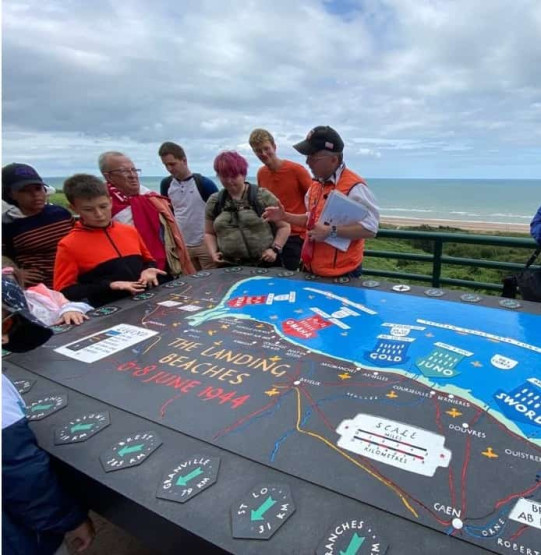
Igor explaining DDAY at the beaches in the Normandy, France.
I just felt like sharing some of my experience with you now. In Bayeux, there are countless charming hotels where you can find a very good deal.
An important thing to remember about these places is that the tourist season is from March to November.
From November to March, most tour guides and tourism professionals are in a kind of “vacation mode” after a very busy season.
The peak season here is really mid-May to late June. Prices can seriously rise for hotels around the D-Day Anniversaries, and availability can be scarce if you don’t book well in advance.
Related read: The Best Beaches in Normandy, France
Hotel Reine Mathilde

My favorite choice. Also, it is the only one in town open year-round. Conveniently situated in the heart of Bayeux’s historic center, our hotel allows you to easily explore the wonders of Old Bayeux on foot. With its beautifully renovated old house atmosphere, it provides a relaxing and comfortable retreat. Indulge in gourmet and relaxing moments at the renowned Reine Mathilde hotel, featuring a restaurant and sun-soaked terrace, all nested within the medieval city.
Hotel Villa Lara

The local Ritz is as good as the Ritz in Paris but much cheaper. Located conveniently in the heart of Bayeux, this property offers proximity to various attractions and delightful dining choices. With a five-star rating, this property ensures a luxurious and enjoyable stay, providing a wide range of in-house amenities to enhance your experience.
Hotel Tardif Noble Guest House

This is a very nice hotel in a 17th Century building. Immerse yourself in the rich history of Bayeux at the exquisite Hotel Tardif, an 18th-century noble property located in the heart of the city. Just a short 15-minute drive from the iconic D-Day beaches, this hotel has a storied past, having served as the residence of a royal botanist from Versailles and the Army Minister of Napoleon.
La Cheneviere

Simply the best. It’s really chic, with a swimming pool, a Michelin-rated restaurant, a spa, and lots of amenities. One minus, not in the center of town but ten minutes drive.
Manoir de Crépon – Suite Directoire

Chic and great restaurant. Amazing swimming pool and spa treatments in the summer. Enjoy a coastal getaway at Le Manoir de Crépon in Crepon, where you’ll be just a 10-minute drive from Juno Beach and America Gold Beach Museum. This charming bed & breakfast is conveniently located 19.9 km (12.4 mi) from Caen Memorial and 22.9 km (14.2 mi) from Omaha Beach.
Chateau de Bellefontaine

This is two minutes from Bayeux. It is the perfect choice for those who want to sleep in a Chateau but are still almost downtown. Located in the heart of Bayeux City Center, this property offers convenient proximity to various attractions and enticing dining options. With a 4-star rating, this property boasts a wide range of in-house facilities to enhance the quality and enjoyment of your stay.
Chateau de Sully

Grand Hôtel Château de Sully – Piscine & Spa, a 17th-century property situated in Bayeux, provides guests with a restaurant and a convenient location just a 5-minute drive from the city center. With Omaha Beach only 11 km away, guests can also indulge in the complimentary spa facilities, including a sauna and hot tub.
Clos de la Croix

Now, if you prefer a B&B, this is the BEST place by far. Set in Bayeux, in a historic building, 300 metres from Baron Gerard Museum, Hôtel particulier “le clos de la croix” is a sustainable bed and breakfast with a garden and terrace.
In order to get to Bayeux from Paris, you have two options:
If you need a car and are okay to drive in France , you should take the A14 Highway West to ROUEN, then the A13 heading to CAEN, and then you’ll see signs to BAYEUX closer to CAEN.
It should take about 2h30 – 3hrs drive to reach your final destination. You can always refill the tank on the French highways and get some snacks and food. Yet, the fuel price here is quite high, and the fuel on the highway is the most expensive you can find in France. Most of the French people buy from supermarket chains. It’s much cheaper.
If you choose the car option, remember you might have to drive through Paris. That is not something to be done by “Sunday drivers”, as traffic and the way Parisians drive is more hectic than in NYC. Many scooters, bicycles, and pedestrians do respect the lights and stops.
Also, leaving Paris center to Bayeux, you might have to cross the famous Arc de Triomphe roundabout. The kind of “black slope diamond” experience.
Driving outside Paris and in the rest of France is very easy. Just pay attention to your speed. Maximum 130 km/h on the highways. In Bayeux, parking is not a problem.
There are many parking spots, and all the hotels have parking spots for their clients.
Another easier way to get to Bayeux is to get on the train. About 2 hours 20 minutes by train, direct train.
You should head to Gare St Lazare. St Lazare train station. There is more than one train station in Paris, so ensure you get to this one when heading to Bayeux. St Lazare train station connects with northwestern France. It is about a 10 minutes drive (when traffic is okay in Paris) from the Champs Elysées.
You can get your train tickets from this official website from the US.
From other places, visit this website .
Like all the train stations in Paris, St Lazare train station is a rather big one, so take some time ahead of you to avoid missing your train.
Onboard the train, there are restrooms, but very rarely are there snacks or cafes to buy. The train company provides free wifi and plugs to charge your devices.
At the train station, you can buy anything you want regarding food & drinks.
When you arrive at Bayeux train station, in case your guide does not meet you upon your arrival (a common option for many travelers who have just one day to visit the Normandy D-Day Beaches), you’ll find taxis right in front of the train station to get you safely to your hotel. You can pay by credit card on all the taxis.
No Ubers here, sorry.

This airport , though international, does not operate many flights each day, but you can find a connection to other major cities in France, in the UK, Spain, and Northern Africa.
Then, from the airport just take a taxi to your hotel in Bayeux. There are always many taxis when planes land. It takes about 30mns drive and should be under 70EUR one way.
Related read : Top Tips for Booking Flights in Europe During Summer
Bayeux has a great choice of cafés and restaurants.
When in Bayeux, you’ll feel like in a little ideal town of France, where it feels good to walk slowly and wander around by the water mill, the Cathedral, the Convent where the amazing Bayeux Tapestry is kept.
There is a match for everyone from simple pizza and beers to more fancy dining.
Here is my shortlist of best restaurants:
- La Maison Blanche For those who want to combine a really fun evening with delicious food, all in a Cabaret atmosphere, this is the place.
- Le Pommier Excellent, traditional, perfect location and service. Book well in advance.
- L’Alchimie Small restaurant, yet the chef deserves a big Wow. Just delicious fresh local food.
- La Rapière Simply the best, so book as soon as you can. You won’t be disappointed, believe me.
Related read : A Foodie Itinerary for Normandy, France
If I can give one good piece of advice as a tour guide myself, it is to book your tour, whether group or Private, as soon as you can. One year in advance is not a problem at all. The best guides and companies get booked many months ahead.
Also, read the reviews about your guide. TripAdvisor reviews, unfortunately, do not always match what a guide company does, as competitors and even anyone can pit a review on a guide on this platform.
I once had a review for the Mont St Michel , saying that this place was not worth it… I am not the Mont St Michel. Some companies like Tours by Locals allow only their clients to put reviews to guides they had. I recommend this.
Well, there is a real bonus of having a tour guide just for the day, but it comes with a price. It is really worth your money, as a Private Tour will allow you to customize the day as you want, and you’ll have a guide just for you.
Group Tours, especially the ones of the Normandy D-Day Beaches, tend to be quite like “ cattle herding ,” and the quality of tour guides is clearly not the same as for the ones doing mostly Private Tours.
Now, another simple way to get the guide to be the best is to remember that he is doing that almost year-round, so a smile, some questions, and a happy face help a lot to break the ice.
French people are very sensitive to behavior and politeness. Do not forget it.
Experience a personalized and exclusive day trip to the historic Normandy landing beaches of World War II, departing from Caen.
Travel comfortably in an air-conditioned minivan with your private guide, who has personal connections to this period of history through their family’s experiences during the Nazi occupation.
Immerse yourself in the significance of D-Day as you explore renowned sites such as Arromanches, Omaha Beach, and Pointe du Hoc. Gain insight into the landings at the Airborne Museum, pay tribute at the American Cemetery, and indulge in a tasting of local apple brandy known as ‘calvados’.
This tour is tailored to your interests; simply inform your guide if there are specific places or aspects you would like to further explore.
- Embark on a customizable day trip to discover Normandy’s iconic D-Day landing beaches
- Enjoy freedom in designing your itinerary according to your preferences
- Listen firsthand accounts from a knowledgeable guide whose family experienced life during WWII in Normandy
- Visit significant locations including Omaha Beach, Sword Beach,and Pointe du Hoc
- Explore Arromanches beach where an artificial Mulberry Harbour was constructed
- Pay respects at both the American Cemetery and Airborne Museum while also savoring authentic Norman apple brandy
- Benefit from personalized attention and insightful commentary provided by your private guide
This comprehensive tour includes hotel pickup and drop-off services along with snacks for refreshment throughout the journey. You will travel comfortably inside an air-conditioned minivan under guidance by our expert driver-guide.
Book your tour directly with the guide here.
Price: from €650 (up to 6 persons) Duration: 10 hours Start: 9 am Pickup: Caen or any place within a radius of 30 km from Caen Free cancelation up to 24 hours before Mobile ticket Tour in English, Italian, French or Spanish

Learn about the courageous actions undertaken by 34 000 soldiers who landed here on D-Day.
Duration: 2 hours • Admission Ticket Included
Pay a visit to this solemn site and gain a deeper understanding of the sacrifices made by American soldiers during the Normandy invasion.
Explore this unique location which still houses authentic WWII German cannons that were operational on June 6th, 1944.
Duration: 1 hour • Admission Ticket Included
Discover the remarkable engineering feat behind the construction of Mulberry Harbors, vital for unloading supplies needed for the Battle of Normandy.
Witness Utah Beach and learn about General Roosevelt’s strategic success with the aid of the renowned 4th Infantry Division on D-Day in this sector.
Visit Pointe du Hoc to understand and appreciate how members of the heroic Second Ranger Battalion sacrificed their lives to capture this pivotal gun battery situated atop Omaha Beach cliffs on June 6th,1944.
Duration: 1 hour and 30 minutes • Admission Ticket Included
Step into Sainte Mère Eglise where you will discover tales surrounding sacrifices made by both the82ndand101stAirborne Divisions as they paved way for subsequent landings later during D-Day. If time permits, explore exhibits at Airborne Museum nearby.
Duration:2 hours • Admission ticket free
Pay homage to Company Easy from506PIRwho skillfully seized an important gun position just four miles southward from Utah beachat Brécourt Manor.Explorethe Danie Winter Memorial too.
Duration:30 minutes • Admission ticket included

There is one good restaurant for your lunch break while visiting the Normandy D-Day Beaches, La Cremaillère in St Laurent sur Mer, run by Jessica Julienne.
It is just above the way down to Omaha Beach at the D3.
This is simply a Dinners like French café where you’ll get for 17EUR a good lunch. Starter buffet, main, and dessert. In the summer, they have a BBQ. Plenty of room in front for parking.
If you have a tour guide with you, remember that he/she has no breaks from the moment he/she meets you, so the lunch break (with you, his clients) is the only time during the day when he can relax a little as well as get to know you better. Take time for your lunch. French people take a long break. It’s a good occasion to have a chat and try the delicious hard cider.

If you have just one day for your tour of the Normandy D-Day Beaches, you won’t have time to see all the sites in one day. This is just impossible.
Depending on where you have started your day, you’ll focus on:
- Longues Sur Mer German WWII canons
- Arromanches & the Mulberry Harbour
- Brecourt Manor
- Ste Mere Eglise
- Normandy American Cemetery & Visitor Center
Trust the experience of the tour guide for the itinerary. He/she lives here and has done it many times already.

If you need some groceries or a snack, there is a small supermarket, Carrefour City, just by the Churchill Hotel, 22 rue St Jean. Opens from 7 AM till 9 PM, except Sunday, 9 AM- 1 PM.
Rue des Bouchers Open 7/7 7AM-9PM
This pharmacy has staff who speak English quite well, and they know the equivalent of many US drugs in French – which is useful.
15 Rue Saint-Patrice, 14400 Bayeux
A very pleasant cafe is the one of the Reine Mathilde Hotel , Le Garde Manger.
If you still have some time in Bayeux, I highly recommend you visit the Bayeux Tapestry Museum. There, the Bayeux Tapestry depicts the fascinating history of the Conquest of England by William of Normandy, known as William the Conqueror.
His wife Mathilda and her pet ladies handmade it between 1071 and 1085 between France and England. It is the oldest tapestry in the world and is exceptionally well preserved.
After watching the tapestry at the ground level with the audio guides, head to the first floor, where the museum gives you more insight into the context of the Tapestry.
On the 2nd floor, the movie in English gives you even more detail about the Bayeux Tapestry. You should count about 2 hours to have enough time to visit the Bayeux Tapestry.
Et voilà, you’re all set to have a great experience visiting the Normandy D-Day Beaches.
As far back as I can remember, I have always loved history and telling people about it and showing them the best places to eat, have fun and do things. I was born in Normandy, near Lisieux, and both my grandparents lived through the German occupation and both were in the French Resistance. This is where my passion for digging in the past really began. After school in Lisieux, I studied history and journalism at the Sorbonne in Paris. I have been a professional guide for three years now and I really love it! I know and love my region. I have lived here almost all my life and I have so much to show you. I have lived elsewhere, but I can tell you that "paradise" for me is "here" in the green pastures of Normandy.
View all posts
RELATED ARTICLES MORE FROM AUTHOR
Where to eat like a local in rome: a foodie’s journey, summer music festivals in barcelona, what is the best way to visit the louvre, check out & follow:, similar travel tips, the dazzling story behind the eiffel tower, essential things to do in ukraine, a guide to visiting paris in the spring, explorer videos, denmark: top and unique regions for an active biking holiday, a winter guide to ischgl in tirol, austria, denmark: cycling the baltic sea route, more travel tips, worst travel mistakes you should avoid, a summer of house sitting in europe, traveling europe by train, follow us on instagram @/traveldudes/.
- Advertise and Media
Finding the Universe
Travel tales, photography and a dash of humor
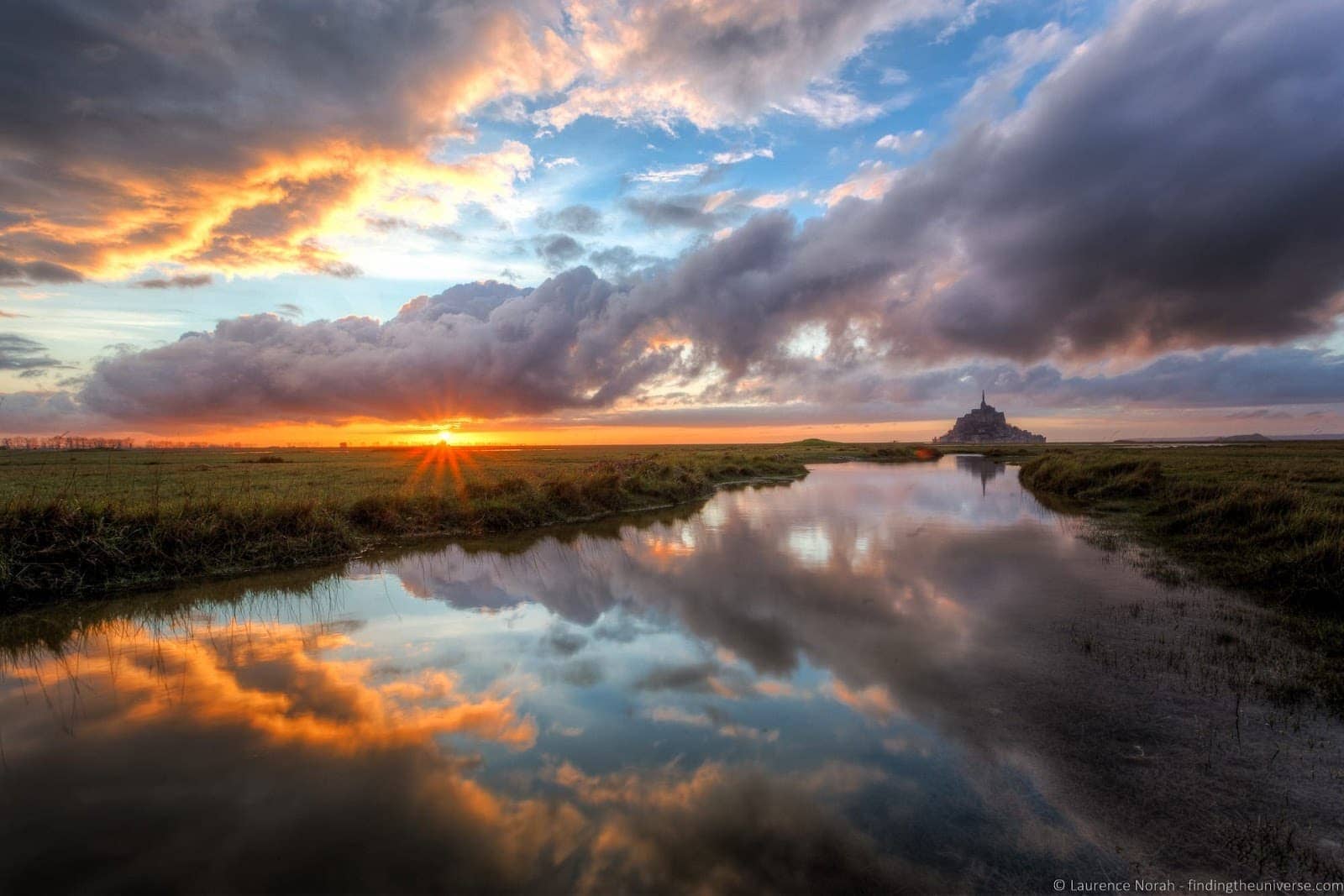
2 Days in Normandy: The D-Day Landing Beaches & Mont St. Michel
Last updated: April 19, 2024 . Written by Laurence Norah - 35 Comments
Despite living in France for three years, I didn’t do much sight seeing. So when the opportunity arose to spend 2 days in Normandy, visiting Mont St. Michel and the D-Day Landing beaches in the north-west of the country, we leapt at it.
We didn’t have a great deal of time to play with as we were visiting my parents further south in France, but we gave ourselves a couple of days in Normandy, basing ourselves near Mont St. Michel, with the aim of exploring both that and the Normandy D-Day Landing Beaches.
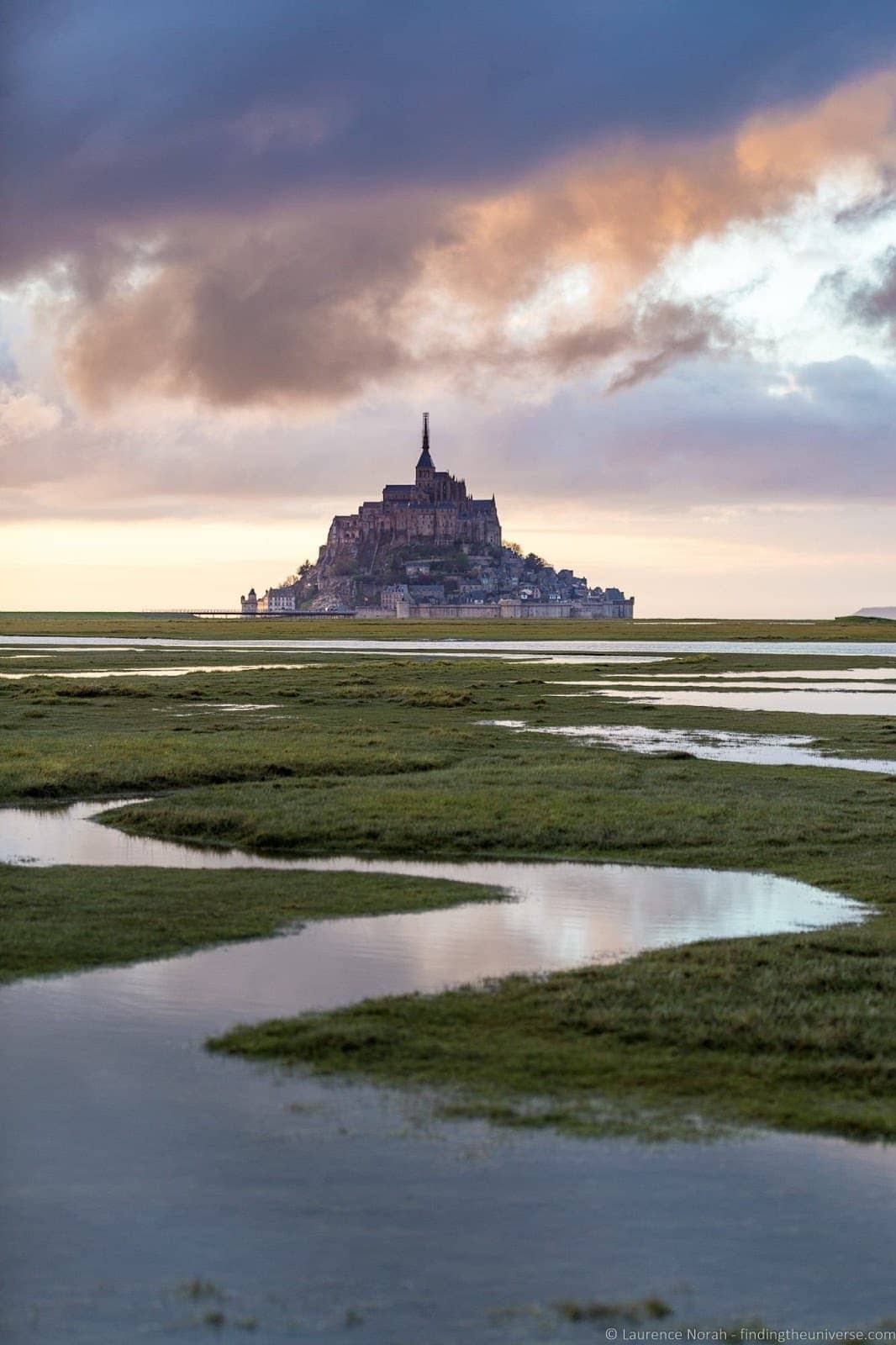
Which was what we did. In this post, we’re going to share everything you need to know to spend two days in Normandy, including some tips on where to stay.
We’ve also put some tour options together in case you don’t want to do this all yourself. The closest tour to the itinerary we have described is this one , which departs from Paris, but we have a number of options including tours departing from Bayeux.
Now though, let’s get started with our guide to exploring the Normandy Landing beaches and Mont St. Michel over two days.
2 Days in Normandy
Day 1: visit mont st. michel.
When we visited Mont St. Michel and the D-Day beaches we were travelling from the UK. We took the overnight ferry with Brittany Ferries from Portsmouth to St. Malo. This meant that we had a good night’s sleep, arriving into France at around 9am local time.
Our guest house was an hour’s drive from St. Malo, and they were fine with us arriving early, so we did just that. After dropping our belongings off and parking the car, our first day was largely spent exploring Mont St. Michel.
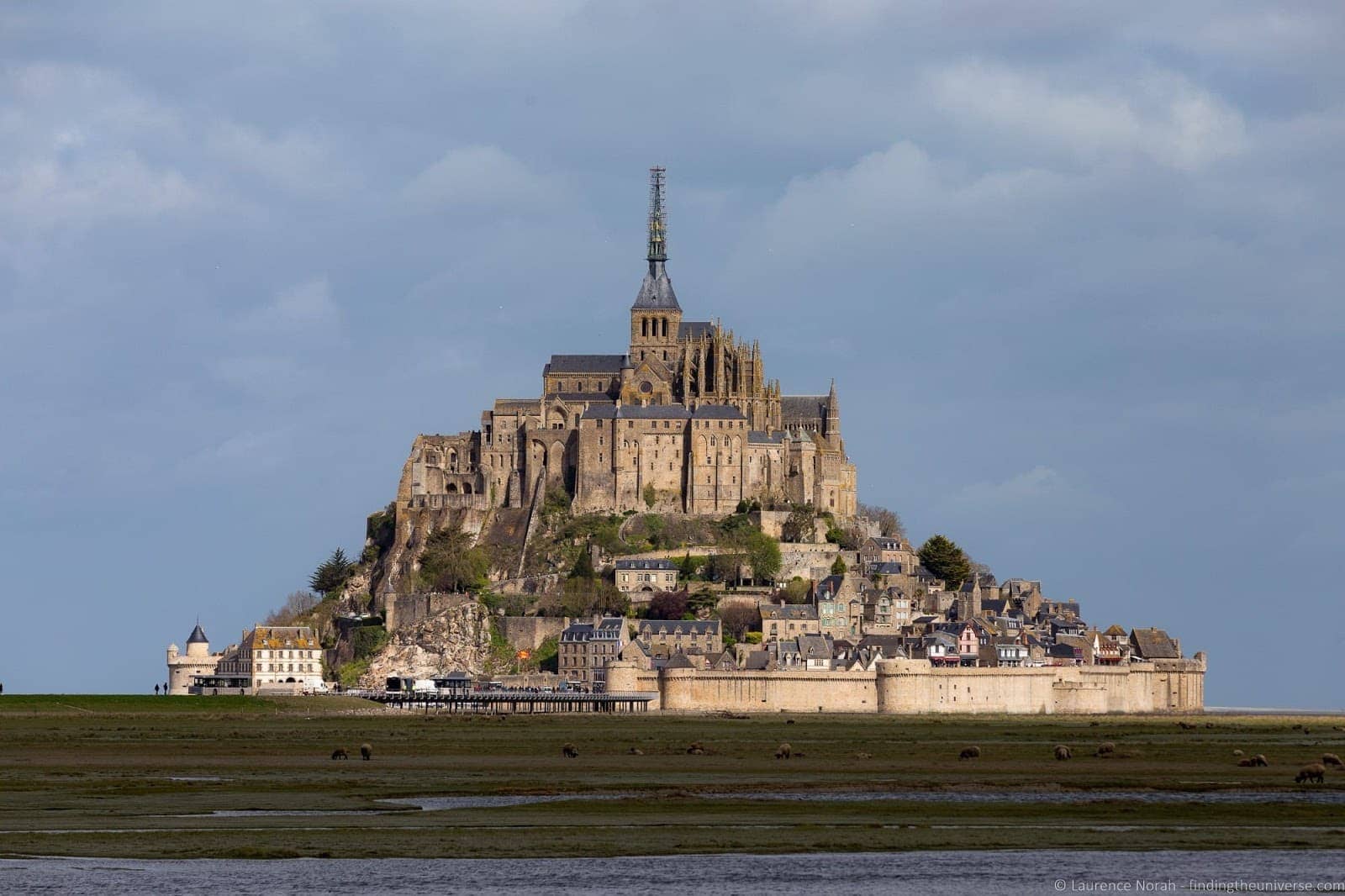
This was, very conveniently, within walking distance of our guest house . This is a handy tip – if you’re going to stay near Mont St. Michel, stay within walking distance.
There’s no way to drive to the island on your own, and if you park there’s a daily fee for doing so (unless you park in the evening when it becomes free). And I’m sure you’d prefer to spend that money on a nice bottle of local cider, or a few glasses of wine, like we did.
There is a causeway to the island, and a free shuttle bus runs from the car park to the island. However, I’d suggest that for your first visit, you walk all the way to the island. The views are gorgeous all the way, and you can really appreciate the magnificence of the island as you get closer to it. Then, you can get the shuttle bus on the way home!
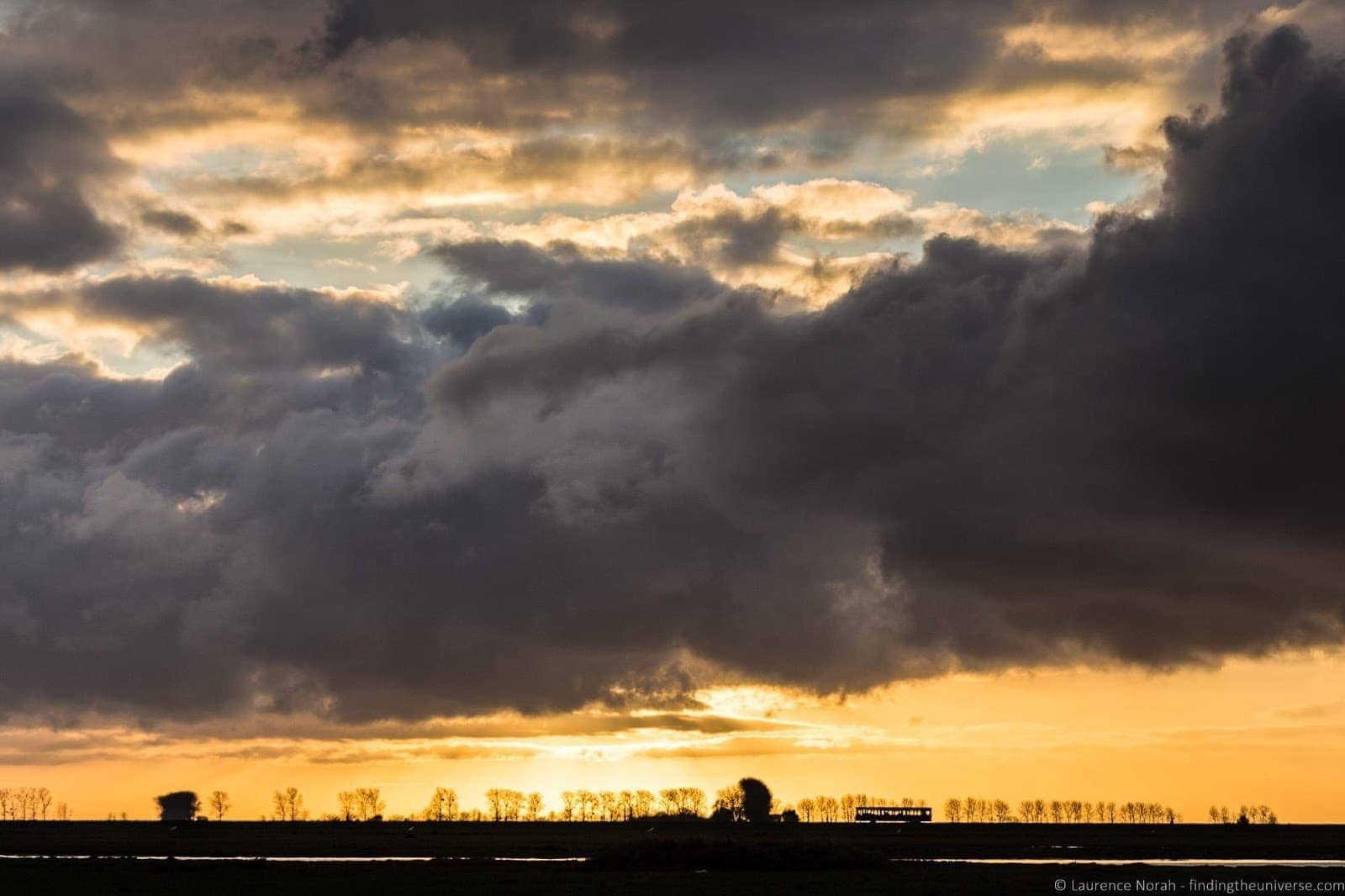
The island itself had more on it than I was expecting. There’s a whole village, with shops, two ATM’s, a number of restaurants and of course, plenty of places to buy souvenirs from your visit. There are even hotels on the island, so you can stay over and enjoy Mont St. Michel when the crowds dissipate for the night.
Speaking of crowds, the streets are narrow, so it can get crowded. We visited on a less busy than average day, and it still got tight in places, so I imagine that in summer it must be very busy!
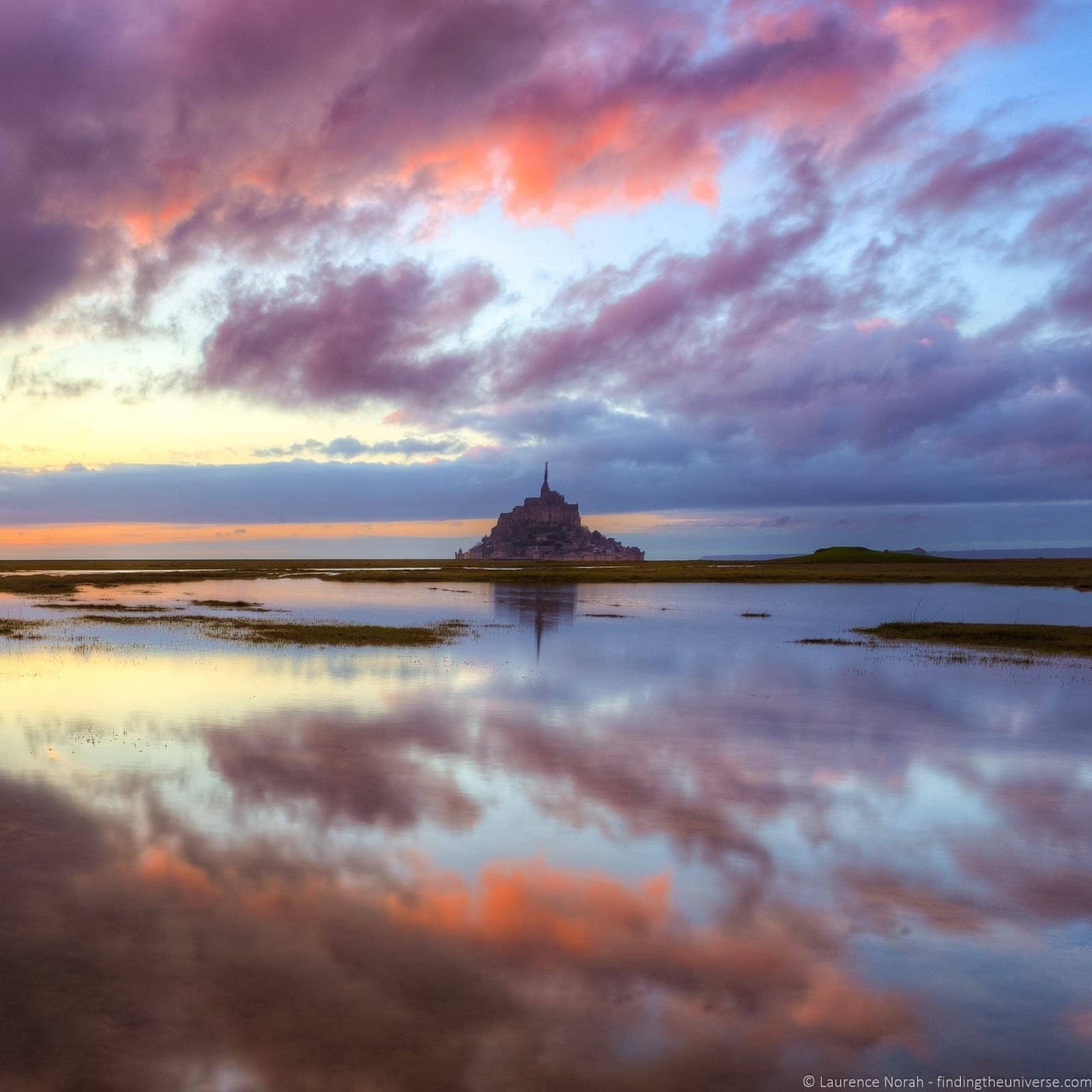
After stopping for lunch (many places do a menu of the day option for €17 – €20), we followed the street up to the Abbey which crowns the hill. This is the key point of pilgrimage for visitors, and the focal point of the island.
It’s not free to visit the Abbey, with opening hours varying depending on the season. Check the latest opening hours and prices here .
We suggest buying your ticket in advance online here to skip the queues. The online price is the same as buying it in person.
The good news is that entry includes an hour-long guided tour. Tours depart somewhat regularly and are offered in both French and English.
Obviously, we went for the English language option, and had a wonderful tour that taught us about the history of the abbey, the key events that led to its construction and look today, as well as the function of many of the rooms.
If you visit, I’d very much recommend taking the tour to learn a bit about the place. But if there is not a tour going during your visit, you can also purchase an audioguide or just do a self-guided tour with the free leaflet included.
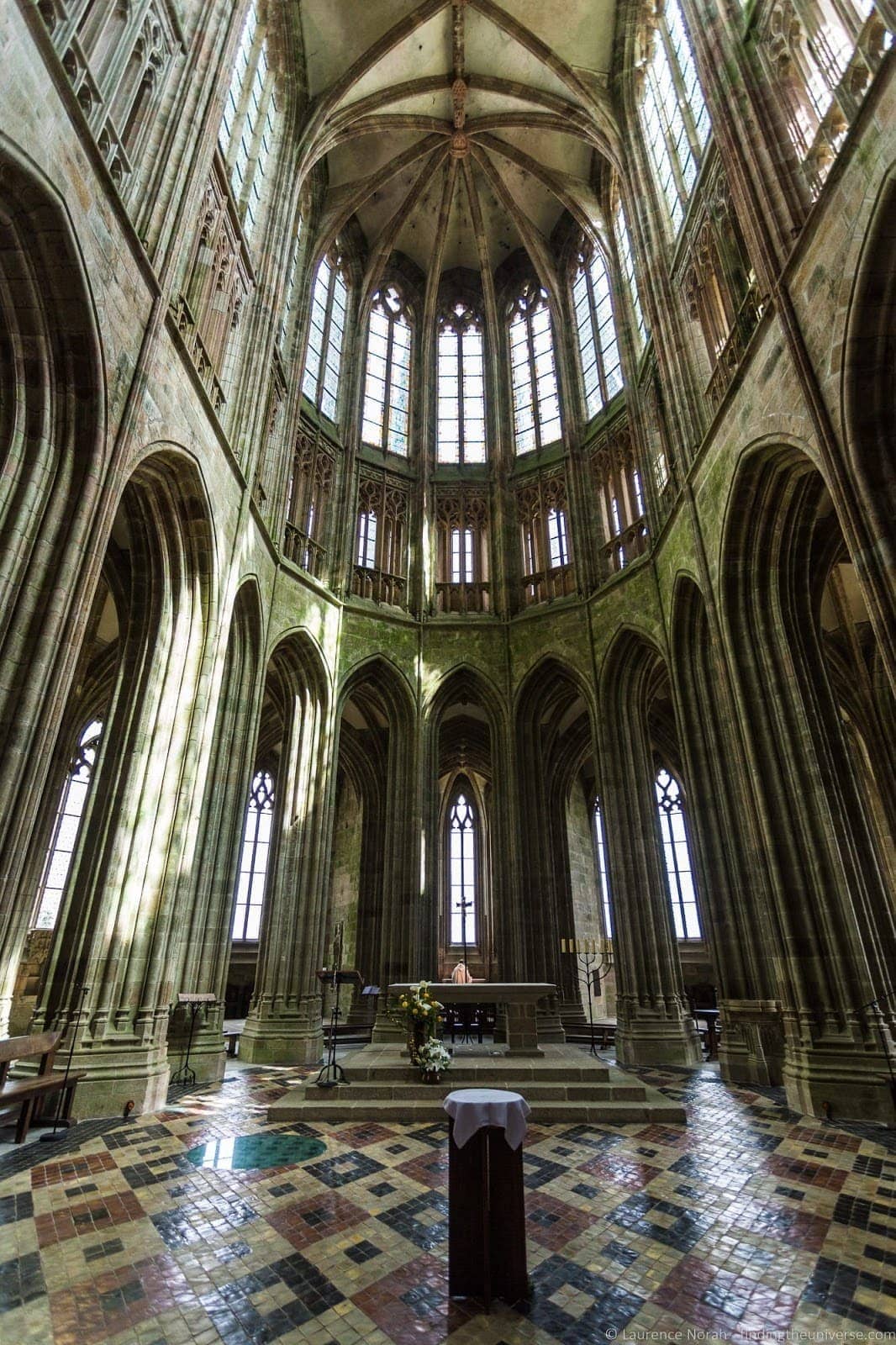
Finally, once the tour was over, we headed out of the abbey and took the bus back to the mainland, where we had a spot of dinner accompanied by some excellent Normandy cider.
I then spent the evening capturing the sunset over the Mont, which was just gorgeous. So good in fact that I went the next night as well!
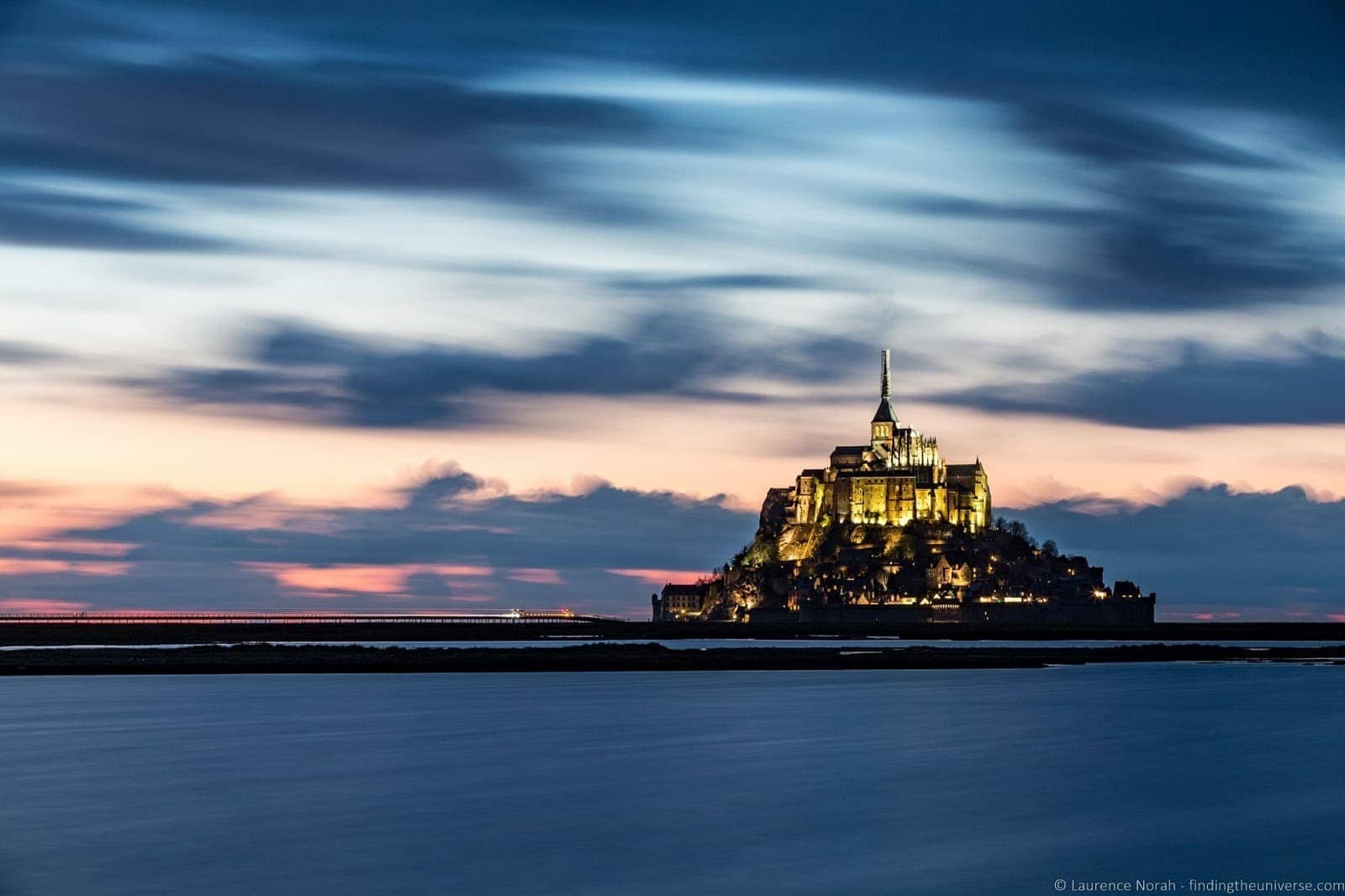
Day 2: Visit the D-Day Normandy Landing Beaches
Our second day in Normandy was a busy one. Having had a full day to explore Mont St. Michel at our leisure, we set ourselves the challenge of visiting some of the D-Day landing beaches in France.
There are quite a variety of sights, museums, memorials and attractions to visit, but we only had a day, so put together an itinerary that we felt was going to give us a good overview of the area and history. Here’s what we did, which we think makes for a good day of exploring the D-Day landing beaches and museums.
1. Utah Beach & Utah Beach D-Day Museum
We started by visiting Utah beach, where there is an excellent D-Day museum dedicated to the landings at Utah Beach.
From our research, this was indicated to be one of the best D-Day landing museums, and even though time meant we didn’t visit any of the others, it was certainly an excellent way to start our journey.
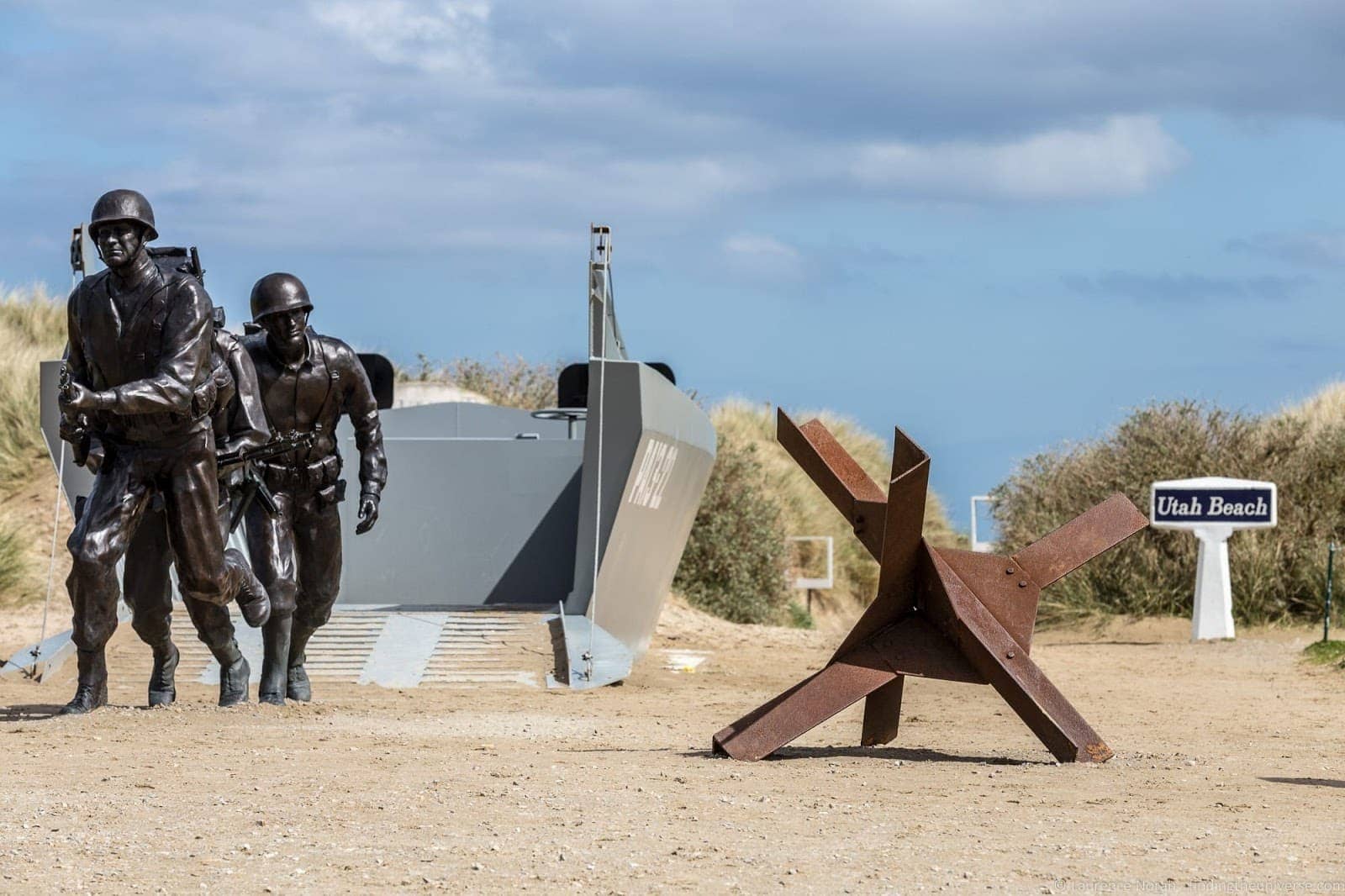
With a focus on the events at Utah Beach specifically, one of the US landing beaches, the museum went over the key highlights of 6th June 1944, including the planning leading up to it, and the story of the day itself.
There was an excellent video about the day, oral histories as well as objects and vehicles that were used.
Most impressive of these is an original B-26 bomber, one of six surviving in the world, and of the same type as those used during the bombing runs that happened in the moments before the men landed on the beach.

We then spent some time on the actual beach, and viewing the various memorials. It’s hard to really visualise what it must have been like here all those years ago, and I have to say that visiting the museum was a really worthwhile way to get a really good overview of how it was.
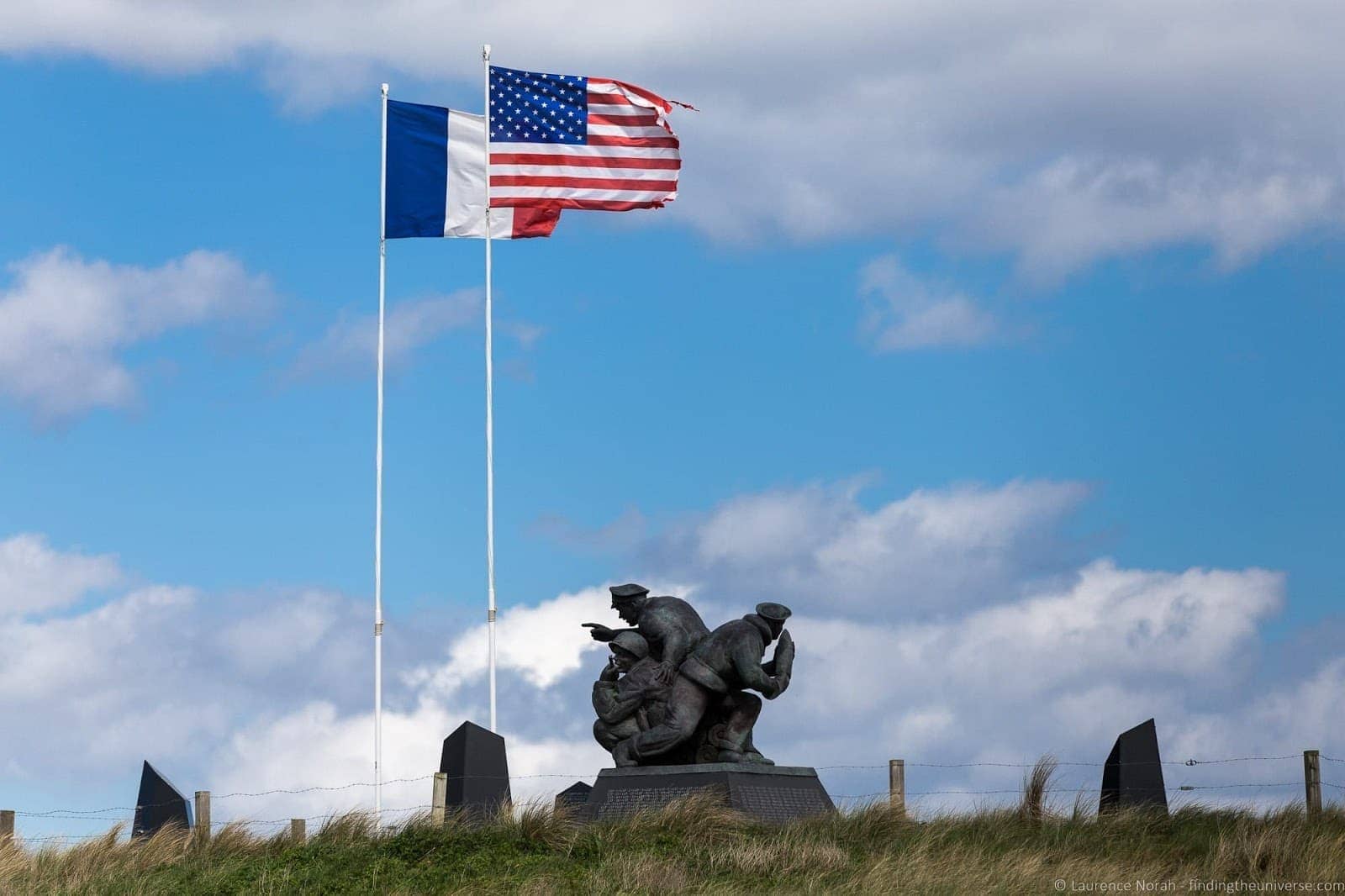
We then had a break for lunch in the wonderful Le Roosevelt Cafe, built around a bunker which housed a German communications center. Then, we headed on to:
2. Normandy American Cemetery and Memorial
Found in Coleville-Sur-Mer, and managed by the American Battle Monuments Commission, the Normandy American Cemetry and Memorial is the final resting place of over 9,000 US military personnel, the majority of whom lost their lives either during the D-Day landings, or in the days and weeks following the landings.
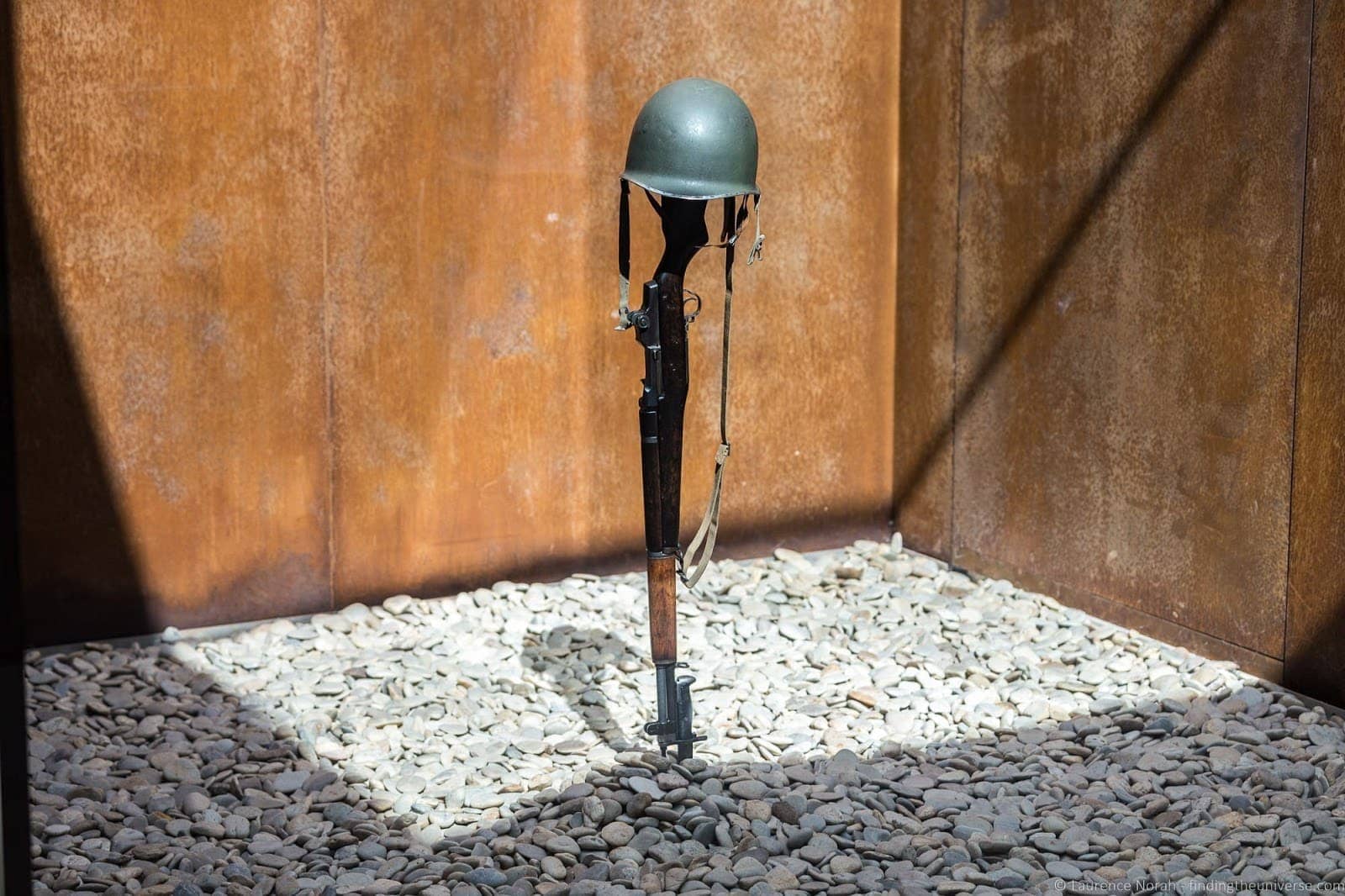
It was the first US WW2 cemetery on European soil, and was established as a temporary location on the 8th of June – two days after the landings started – a necessity given the high casualty rates, particularly at nearby Omaha Beach, which was the most heavily defended of all the landing locations.
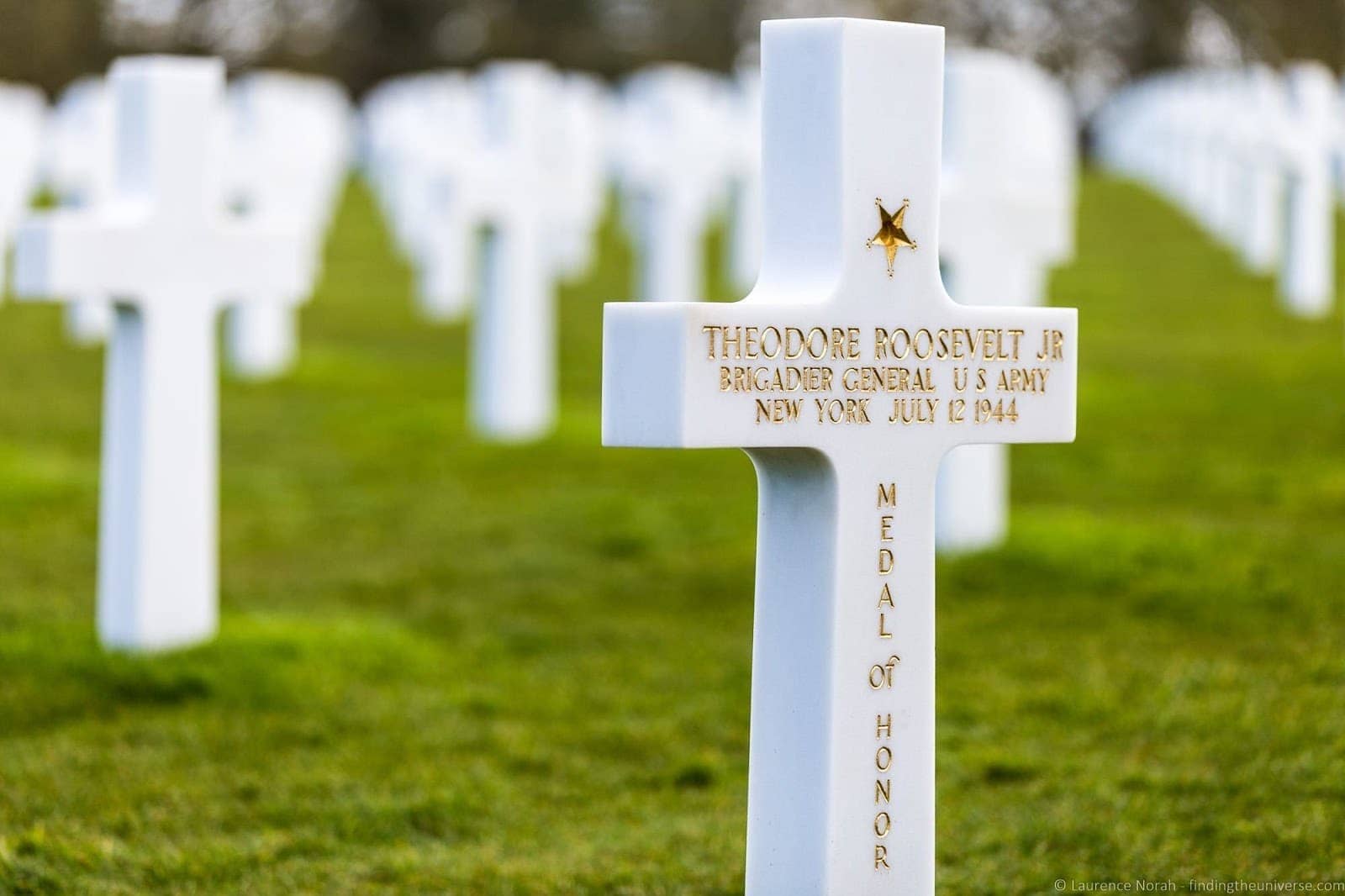
Today, there is a visitor center, a memorial, chapel, and of course, the cemetery itself, all of which are free to visitors.
The visitor center is excellent, telling the story of the landings with a focus on the personal stories and losses of the people involved, particularly at Omaha beach.
It’s very worth taking some time to fully explore this. Then, of course, the cemetery is a sombre reminder of quite how many people died in this conflict.
3. Omaha Beach Monument
From the War Cemetery we headed back down to Omaha Beach itself, and the monument to the D-Day landings.
There are actually two installations here – the huge monument itself, and a huge stainless steel art installation known as “The Braves”, which commemorates the 60th anniversary of the landings.
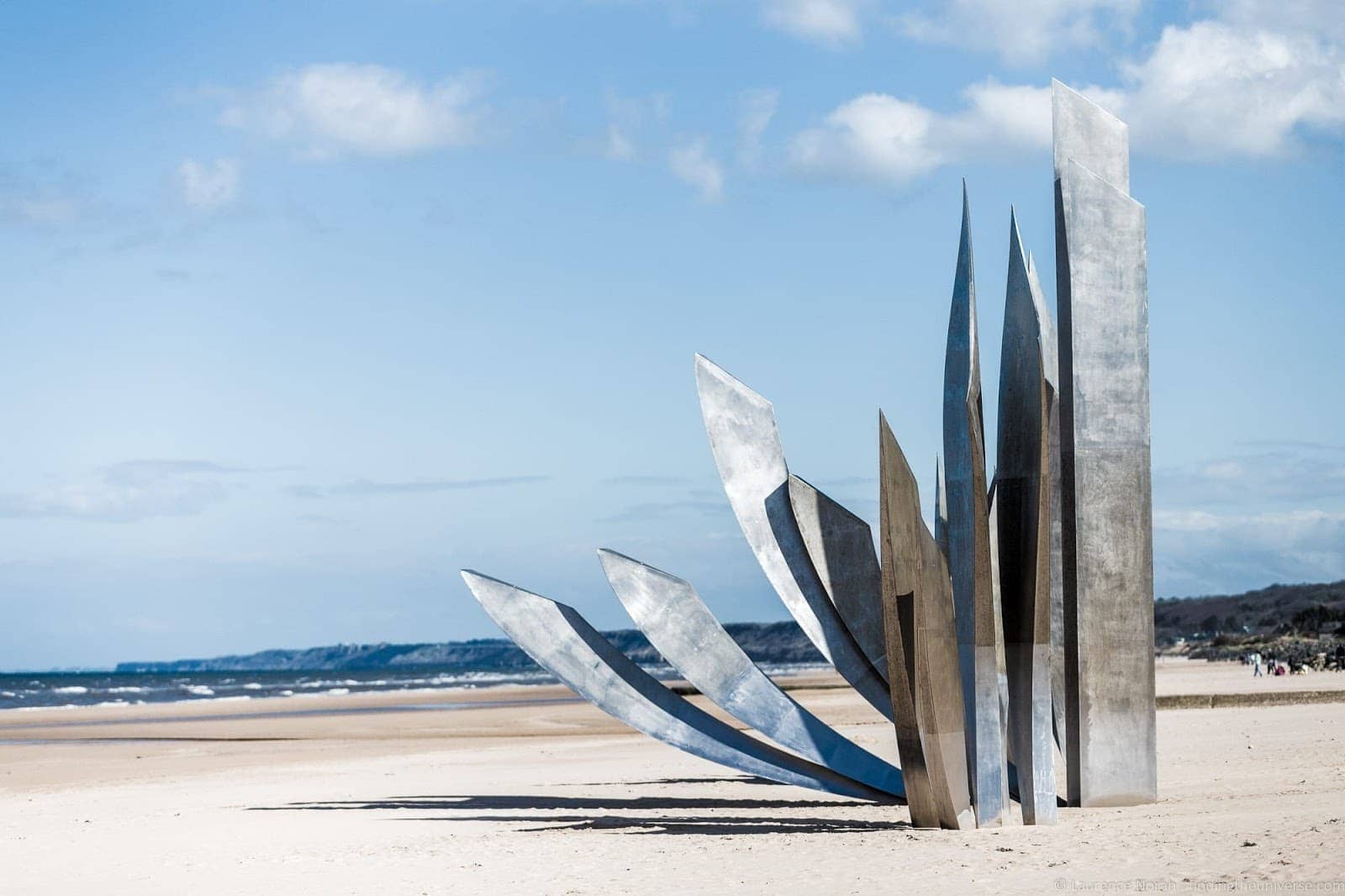
Both are worth looking at, and of course, you’ll want to spend some time here on the beach as we did, casting your mind back across the decades, and just trying to get a tiny idea of the horrors that were witnessed here.
4. Pointe Du Hoc
Our last stop on our D-Day Landings Day was Pointe Du Hoc. This is a rocky cliff top area, the highest point of land between Utah and Omaha beaches, and during WW2, was a heavily defended German installation and lookout point.
It was thought that the destruction of this stronghold was going to be critical to the success of the D-Day landings, as the six 155mm guns that were believed to be installed here could have wreaked devastation on forces landing at both Omaha and Utah beaches.
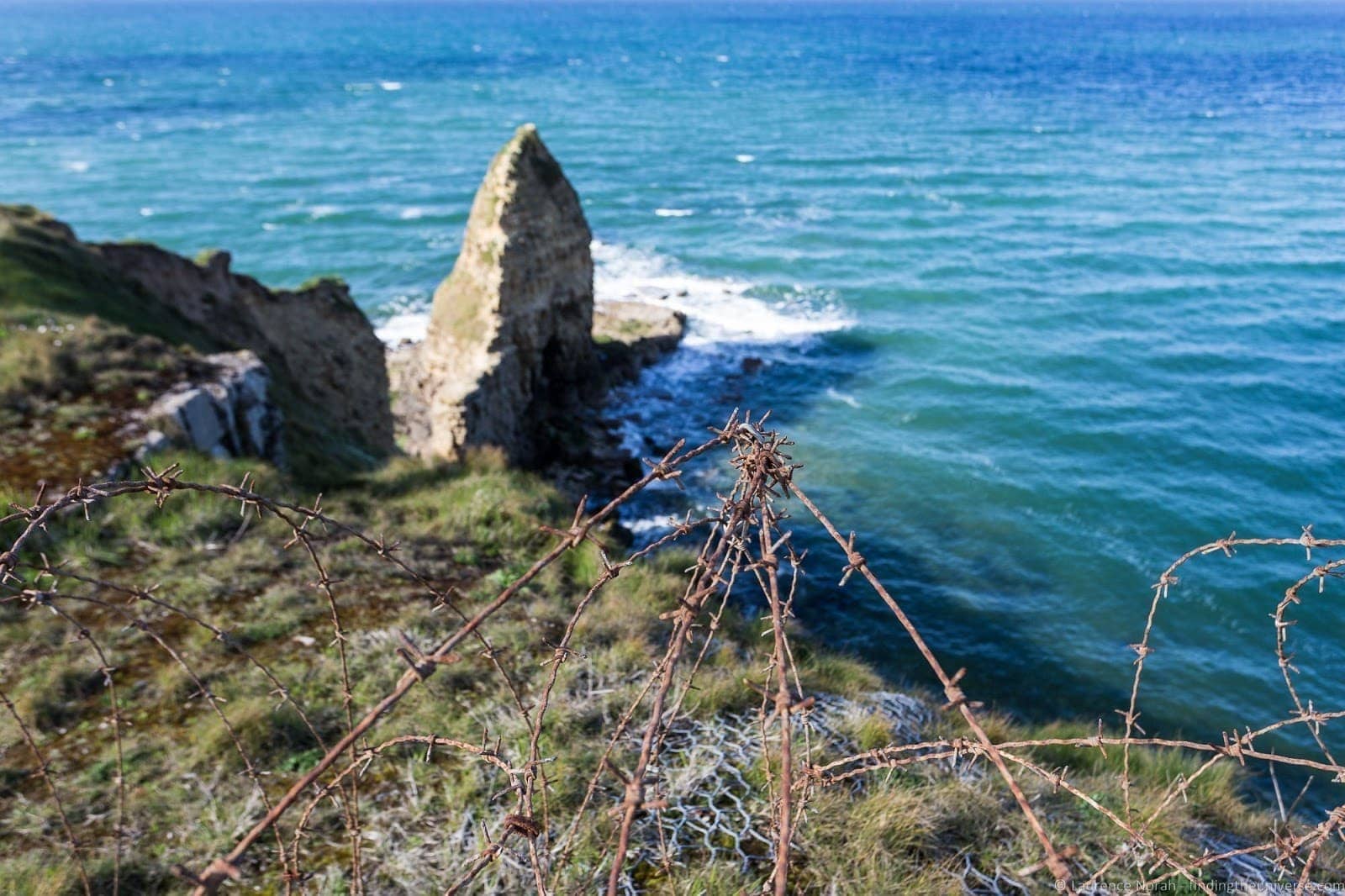
To accomplish this mission, a 225 strong force of US Rangers was dispatched in the early hours of June 6th, with the mission of scaling the 100ft cliffs and destroying the 155mm guns.
As it turned out, the guns had all been moved to a nearby orchard to protect them from Allied bombardments, so whilst the rangers did find them and destroy them, the risk was not as great as first thought. The battle for Pointe Du Hoc was also costly, with 70 percent casualties, so even though deemed a success, it was with a brutal loss of life.
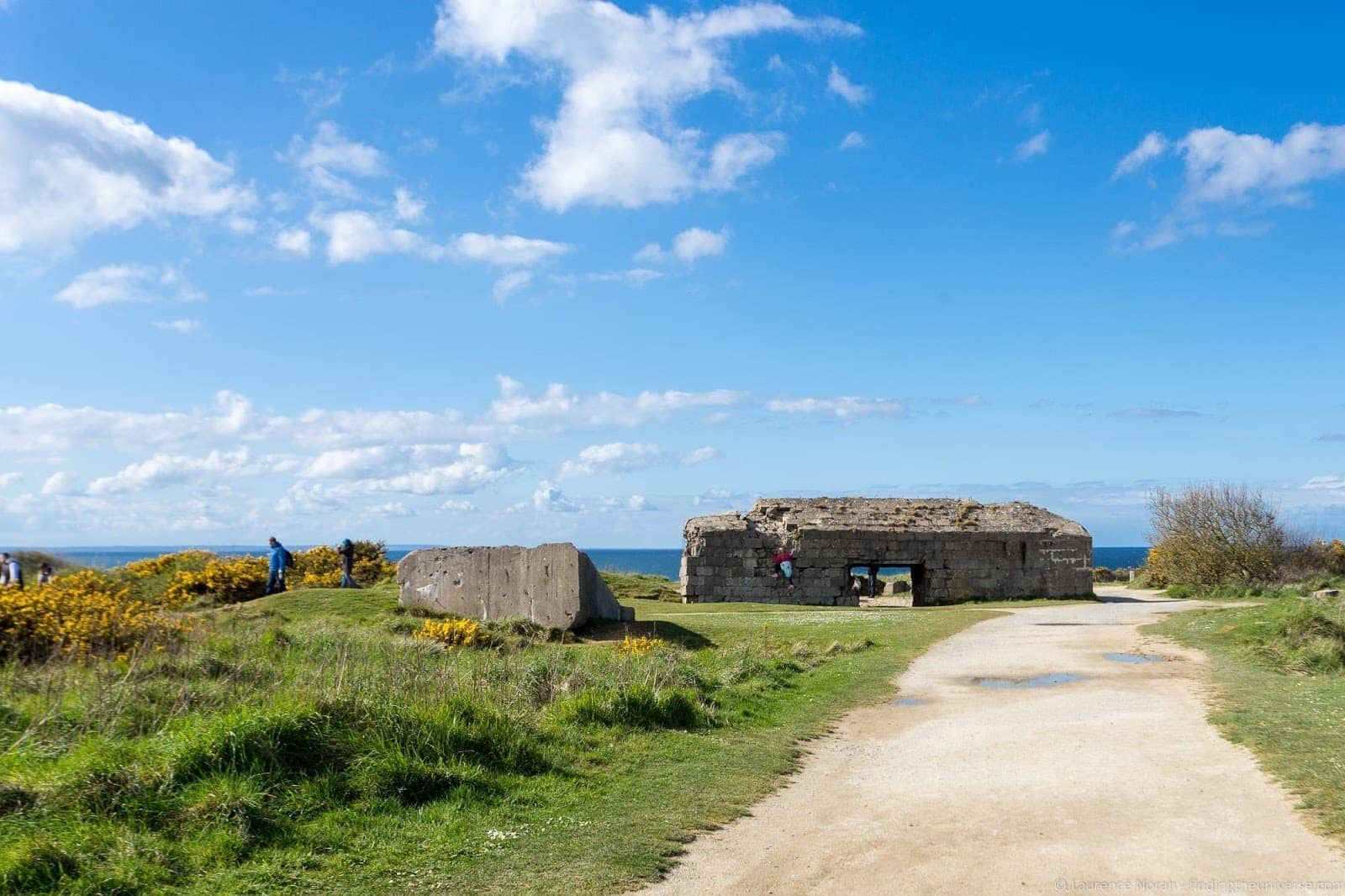
Today, Pointe Du Hoc serves as a monument to the Rangers who fought here. Other than the encroachment of nature, the site is not much different today to how it was when the Rangers landed.
Many of the original concrete bunkers, bomb craters and installations are still in place, and you can freely wander the area, and marvel at the challenges that must have faced the men landing here, from the rough seas to the 100ft cliffs to the barbed wire.
There is also a visitor centre, although it had just closed when we arrived. If it is something that interests you though, you can check the opening hours here to be sure that you schedule your day appropriately.
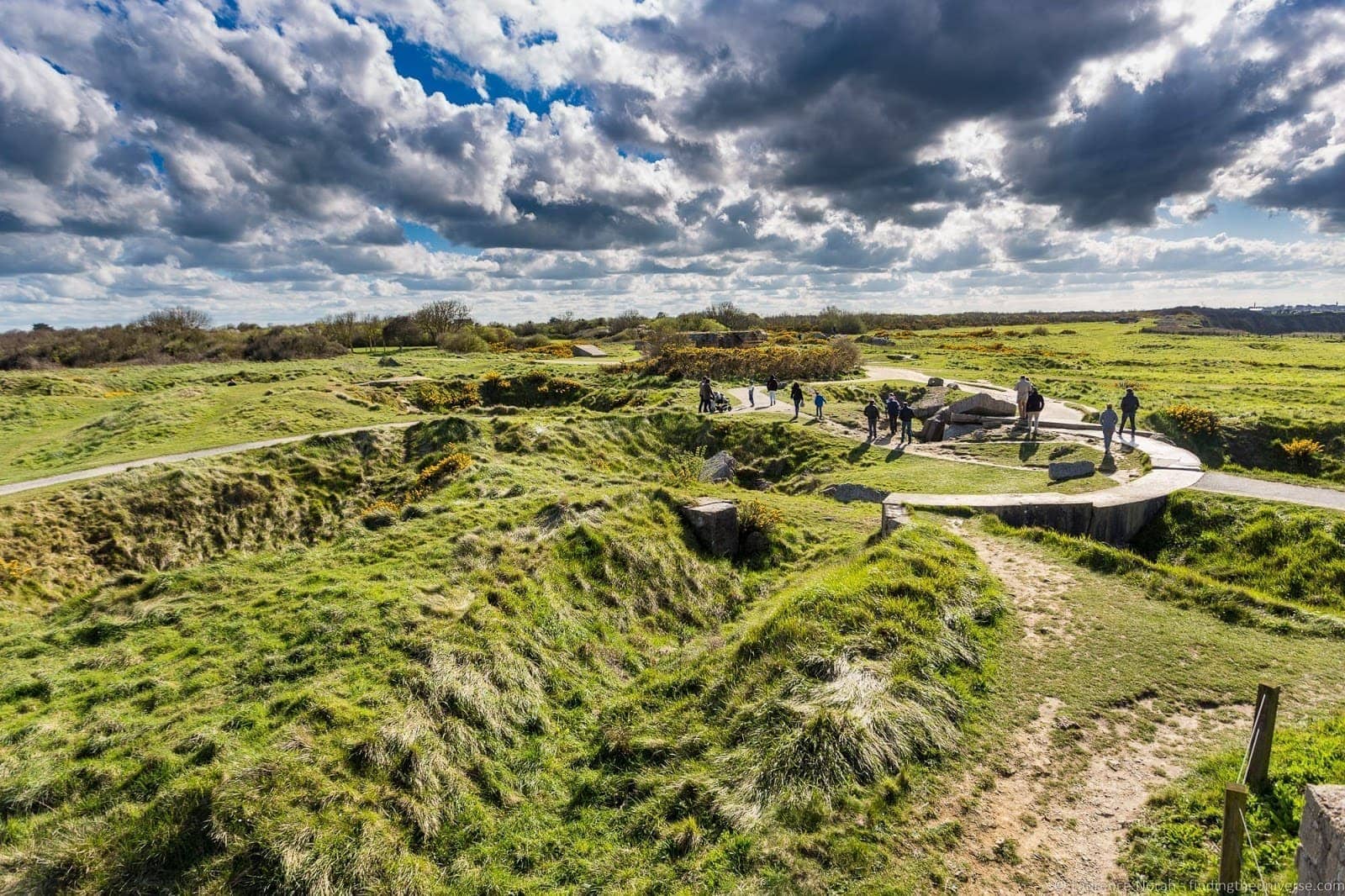
Pointe Du Hoc was the last stop on our tour of the Normandy D-Day beaches. It wasn’t the sort of day that fills you with joy, but I certainly learnt a great deal, and left with a heightened sense of admiration and respect for the many people who gave their lives so Europe and the world could be free.
Now, on to answering some questions you might have, as well as some practicalities.
Where we stayed in Normandy
There are lots of options for accommodation at Mont St. Michel. We found ourselves a little chambre d’hote , which is the French equivalent of a B&B.
This was excellent value, and within walking a half hour’s walk of Mont St. Michel – and more importantly, a ten-minute walk to where I was able to get photos like this:
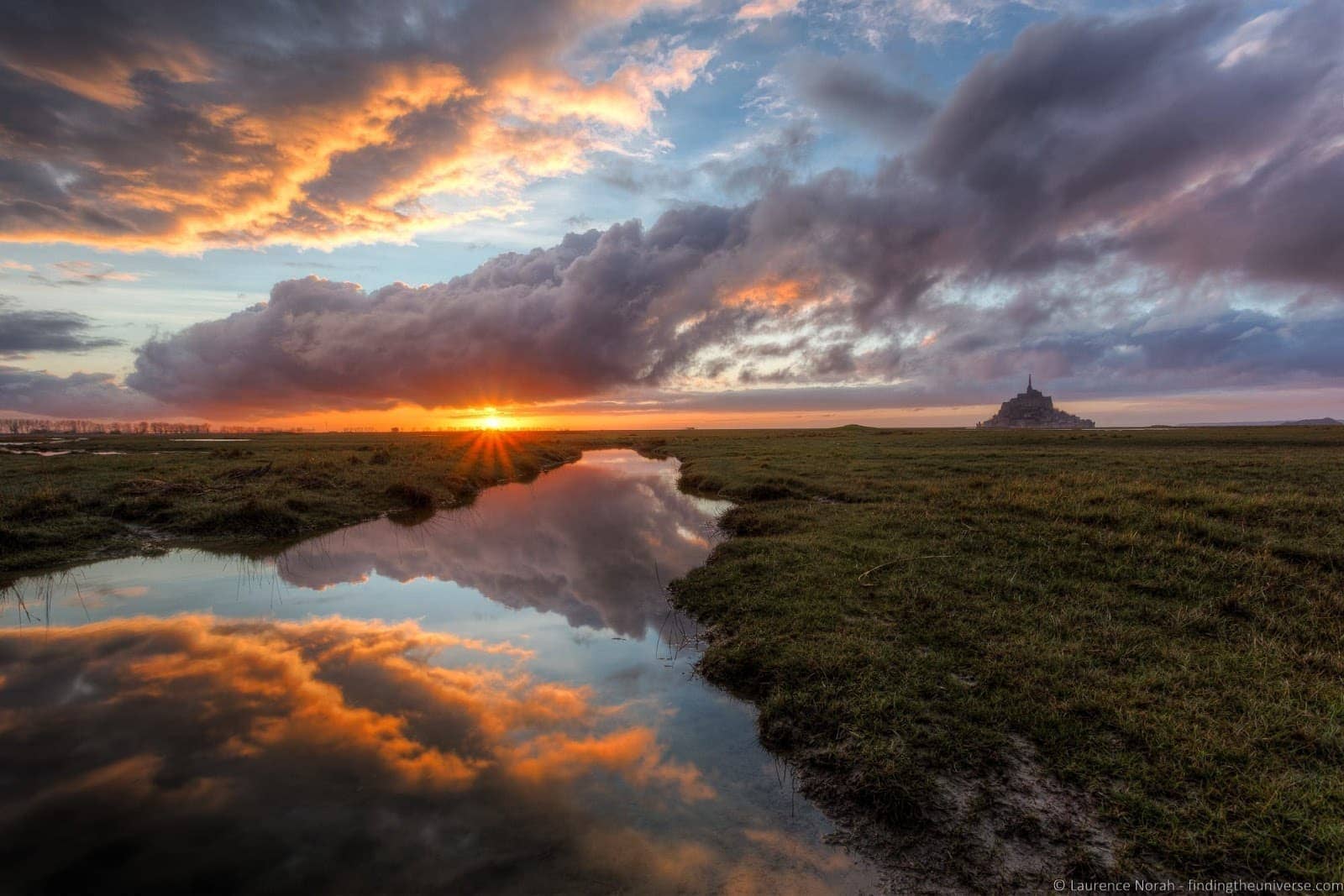
We actually found that there are lots of these in the Mont St. Michel area, you can see Mont St Michel listings here on booking.com
There were three Chambres D’Hotes near each other, including the one we stayed at , with a price for two people, including breakfast, usually in the region of €70 – €120. Definitely an option worth investigating.
How To Get Around Normandy
Since we took the ferry, we were able to take our own car to France. This was very handy, and definitely meant we got to see everything we wanted to see at our pace.
I’d definitely recommend a car as the best option to get as much in as you can for your trip. If you’re coming from the UK, Brittany Ferries operates to a number of destinations in France, with Cherbourg, St. Malo and Caen likely to be your best options for a trip like the one we did.
If you’re looking to hire a car in France, we recommend searching for your car rental on Discover Cars here . They compare a range of providers so you can find the best deal for your trip.
Tours of Normandy and the D-Day Beaches
If you would rather not have the hassle of planning your car hire or hotels, it’s also possible to visit the D-Day beaches and Mont St. Michel on a guided tour. This will also carry the benefit that you will have someone on hand to explain the significance of what you are seeing.
It is possible to do this as a day trip from Paris, however the day trips will focus on either Mont St. Michel or the D-Day Beaches, as doing both would be challenging in a day from Paris. There are however two day (and longer) tours like this which cover both sights. Here are some options:
- A 1 day tour from Paris of Mont. St Michel , which includes transport and your entry ticket
- A 1 day tour from Paris of the Normandy D-Day landing beaches , which includes transport, museum entry and guide
- A 2-day tour of Normandy, Saint Malo and Mont St Michel from Paris , which includes transport, overnight 4* accommodation, some meals, a guide, and entrance fees. This would be our recommended option from Paris if you have the time as it covers many of the locations in our guide.
There are many more tours to choose from, you can see a selection on Viator here , and GetYourGuide here
These tours all run from Paris as this is the most popular departure point. However, there are also tours from Bayeux in Normandy, which you can reach by a 2.5 hour train from Paris. In this case, we’d suggest booking a 1 day tour of the D-Day beaches, and a 1 day tour of Mont. St Michel. Here are some options:
- A 1 day tour of Mont St. Michel , including transport and guide
- A private 1 day tour of Mont St. Michel , also including transport and guide. This is a similar tour with departure from either Caen or Bayeux.
- A 1 day small group tour of the D-Day beaches , with a particular focus on the beaches used by the American forces.
Getting To Normandy from the UK
As mentioned above, we took the ferry from Portsmouth to St. Malo (and back again!) with Brittany Ferries .
We had a four berth cabin on both crossings, which was particularly handy for the night crossing to France as it meant we could have a good night’s sleep. Each cabin also includes a sink, toilet, and shower so you can arrive feeling refreshed.
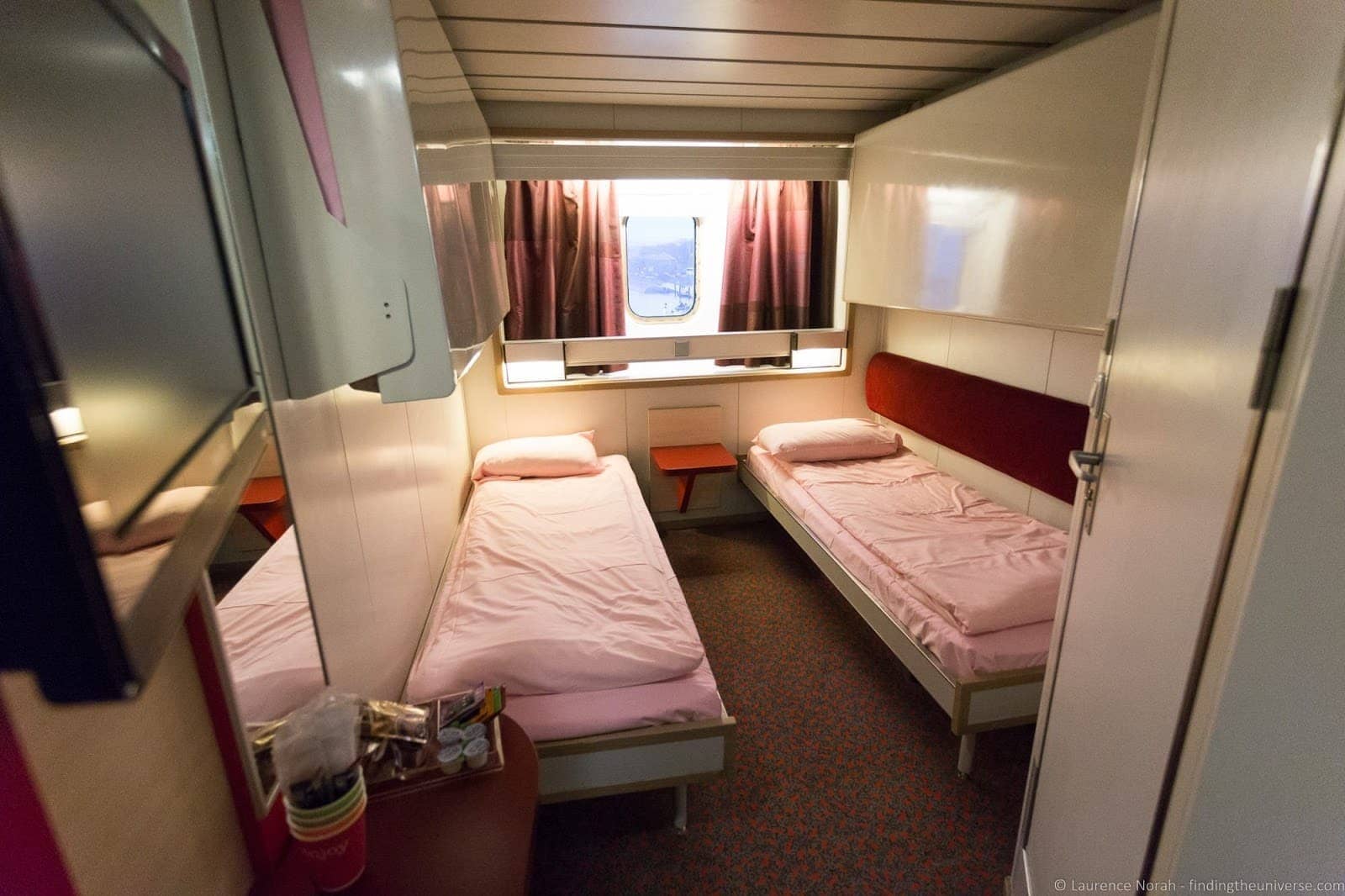
The boat was also well equipped, and we enjoyed an excellent dinner on board on our way to France, and a lovely lunch on the day crossing back. In the evening, after our dinner, we went and watched the cabaret show (and partook of the excellent bar!), with Jess having a huge cocktail and me going for a slightly simpler beer option.

Jess also got involved in the magic show (this seems to happen to her a lot!), as a man rather worryingly stuck a sword through her throat. This was a lot of fun, and overall, we’re happy to recommend the Brittany Ferries experience to anyone looking to travel to and from the UK by ferry with a car.
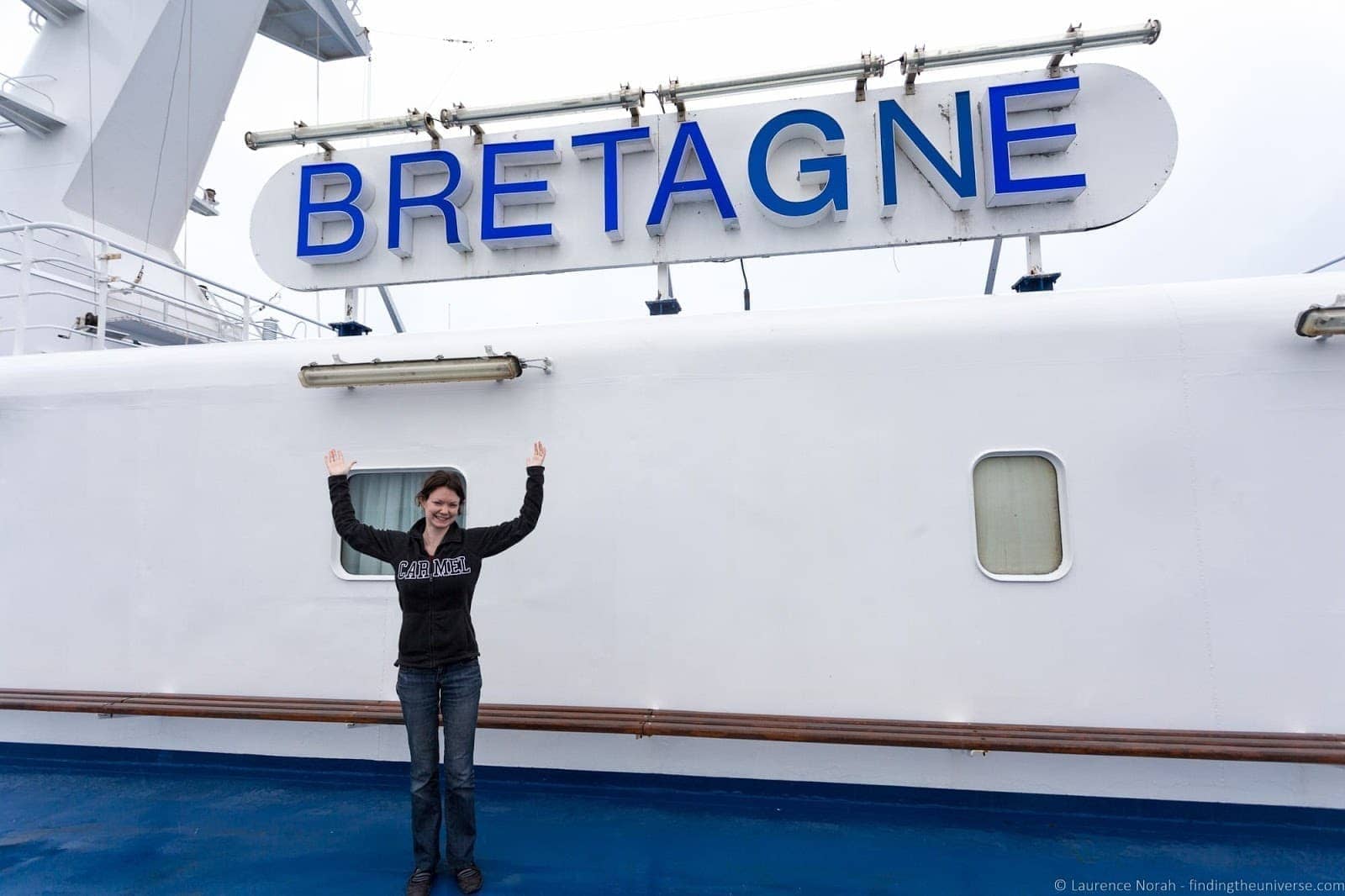
Further Reading for your Visit
We’ve written more about France to help you plan your visit to this lovely country. Here are some resources we think you’ll find useful:
- We have a 2 Day Paris Itinerary as well as a 3 Day Paris Itinerary
- We also have a guide to spending a day in Paris , if you’re on a really tight schedule and just want to focus on the highlights
- Our guide to the Best Photography Locations in Paris
- A full review of the Paris Pass , to help you save money on your visit, as well as a review of the Paris Museum Pass
- A guide to the best afternoon tea in Paris
- A guide to choosing the best Seine Boat River tour
- A guide to recognising and avoiding common Paris scams
And that pretty much wraps up our two days experience in Normandy! Have you ever visited the sights in the article? Have any tips or experiences to share? Let us know about them in the comments below!
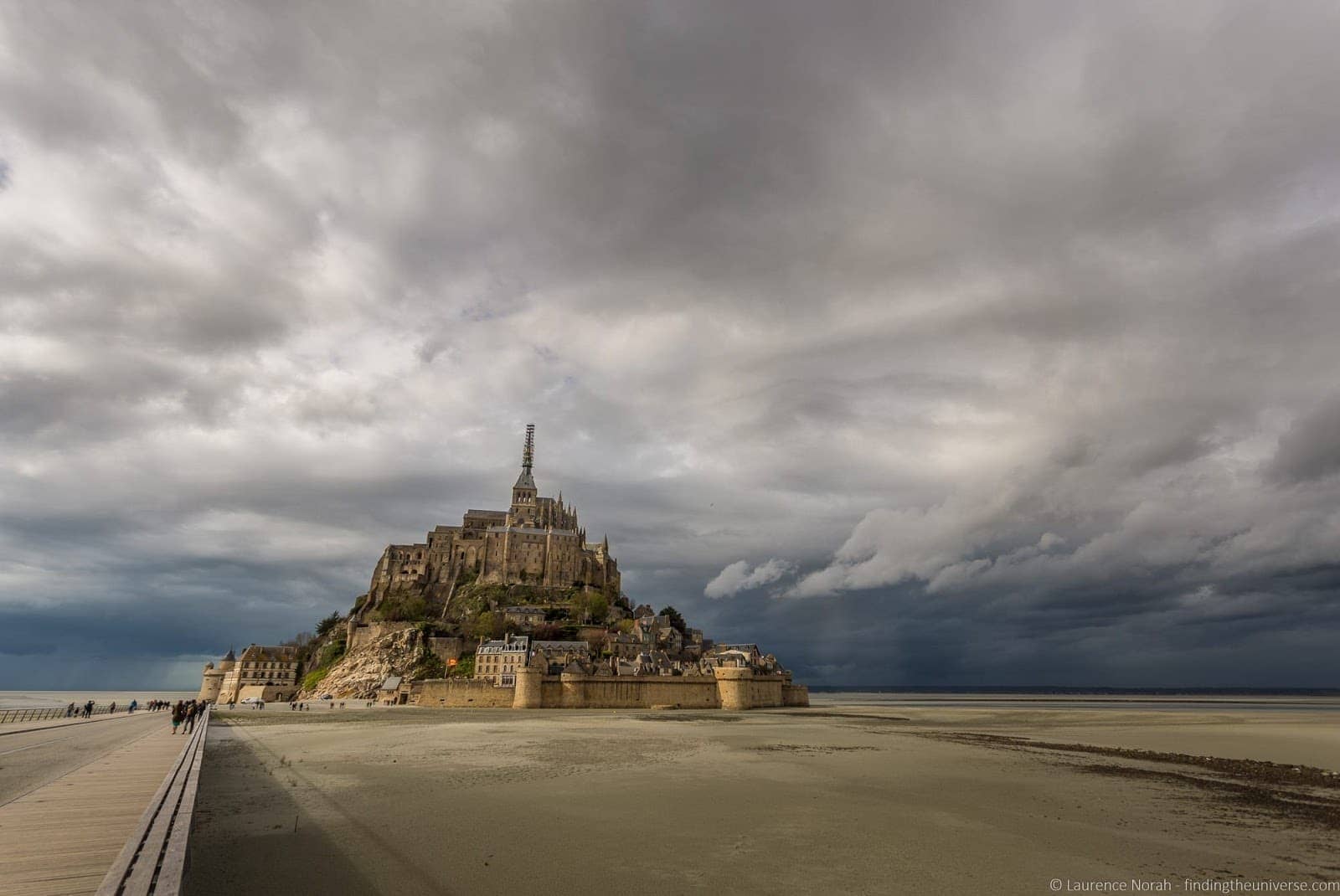
So you know, we received complimentary tickets from Brittany Ferries to and from the UK for two people and a car. All other expenses, including meals and drinks on the boat, as well as our accommodation and activities in France, we covered ourselves. As always, you can read our code of ethics to find out how we choose to work with!
Enjoyed this post? Why not share it!
There are 35 comments on this post
Please scroll to the end to leave a comment
Michael Giblin says
11th January 2024 at 5:18 am
Hi Jessica Thanks for the interesting article, especially the links to other information. We plan to go to France in Septembers, spend 6 nights in Paris then take the train to Bayeux rent a car and spend 3 days visiting the Normandy sites then spend 3 nights in Tours visiting the Loire Valley. Then take the train To Paris and head home. Your travel log is really helpful because after reading yours and many travel logs, we realize we can rent a car and do self-guided tours and go at our own pace. My wife speaks French so that will be a big help. Thank you.
Laurence Norah says
13th January 2024 at 2:00 pm
It’s our pleasure Michael, have a wonderful trip to France and do let us know if you have any questions!
Eileen Cowley says
9th September 2023 at 2:08 am
I love all this wonderful and insiteful information about a 2 day Normandy visit. We will visit Mont St. Michel on the 1st day, and the beaches you recommended on the second. Should we stay 2 nights in the hotel close to St. Michel. or check out, visit the beaches and choose another location close to Point de Hoc? Thank you!
10th September 2023 at 3:05 pm
Thanks very much! So I would probably recommend checking out and moving on so you don’t have to drive backwards and forward so much. Of course, it will depend a bit on your overall itinerary, but personally I’d find somewhere closer to where you’ll be visiting on your second day.
Have a lovely time in France, let me know if you have any more questions!
Linda Karol says
16th July 2022 at 8:07 pm
Hello! My so is in the Air Force and was recently involved in the DDay Reinactment. I will go onto your Facebook site and post some of his pictures for you.
21st July 2022 at 7:54 pm
Thank you very much Linda 🙂
26th June 2022 at 8:49 pm
we are staying in Dol De Bretagne for a week ( arriving in st Malo) then driving up to normandy on the Friday so we can see the D Day beaches etc before getting the ferry on the Sunday from Caen back to the UK. we will have 2 days and your itinerary has been big help , where do you think the best place to stay is please ? Caen ? Bayeux , or somewhere else. we need to be at Caen for 7.30 on the Sunday morning for the ferry so don’t want to have to travel too far to get there. we are leaving Dol early fri morning so will have 2 full days . thanks for your help
27th June 2022 at 9:50 am
I think either Caen or Bayeux would work. Caen would obviously be easier for your early morning ferry, so I might opt for that, and it’s not too far to the majority of beaches. There are also lots of accommodation options in Caen as you can see here .
Have a great trip and let me know if you have any more questions!
Nicolas Mata says
14th June 2022 at 2:31 pm
Very educational. By the way, how did you create your own blog?
14th June 2022 at 4:19 pm
Thanks Nicolas! I created it initially back in 2010 using Google’s free Blogger service. Then I migrated to a paid service using WordPress. We actually have a complete guide to starting a blog , which you might find interesting 🙂
Patricia says
6th June 2022 at 5:15 pm
Fantastic comments and beautiful photos. Thank you
6th June 2022 at 5:50 pm
Thanks very much Patricia!
Stuart Robertson says
20th April 2022 at 6:55 pm
As the majority of troops to land on D-Day were British, it’s a shame you visited exclusively American sites. For information, Omaha was not the most heavily defended beach, Sword was.
20th April 2022 at 7:55 pm
Thanks for your comment! As my wife is American and had family members who took part in the landings, those were the beaches we chose to visit as they had the most personal connection to us. My grandfather was British, but I believe his war was primarily in Italy. Of course we are grateful for all their service, but don’t feel they would think any the less of us for which beach we visited. Hopefully we will be able to return soon and see more of the landing locations.
In terms of Omaha vs Sword, do you have a citation for that? The Imperial War Museum website here state that Omaha was the most heavily defended of the beaches, but I would add I am happy to change the information if there’s a more authoritative source.
Thanks again for your comment!
Linda Hyers says
4th March 2020 at 9:43 pm
We are going to Paris mid July and want to go to Normandy & St Michel. Looks like most of the tours leave on Thurs. we need to tour on Tues-Friday. Any ideas?
5th March 2020 at 2:05 pm
Hmm, that is a bit of a conundrum. I have a few options for you, depending on your budget.
First, there are a number of private tours you can take, where the day is less relevant. However, these are definitely more pricey. There are quite a few options listed on Viator, such as this one .
You might also try reaching out to Context Travel who do custom private tours of Normandy here . You get a 10% discount with our link too.
If the above options are out of budget, I have another idea.
You could take a 1 day tour of the Normandy Beach locations, like this one .
The advantage of the above tour is that is actually starts in Caen train station, not Paris, so you are not paying for a return trip to Paris as part of the tour. Instead, you would need to book your own train ticket to Caen. The fastest train takes around 2h – 2h30, so if you get an early train you can be in Caen by 9am.
You would then take the full day tour of the D-Day beaches and sights, which are harder to see without a tour or if you don’t have your own transport. You can then overnight in Caen, or head on to Mont St. Michel.
There’s a direct bus from Caen to Mont St. Michel, which takes around 3 hours. You can book this online. You can then spend the day exploring Mont St. Michel before heading back to Paris.
I appreciate this would be a bit more work on your end, but it would be much more cost effective than a private tour, and you would only need to book your train / coach tickets. You can book both of those in advance here .
Let me know if you need any further advice, I’m happy to help!
22nd February 2020 at 2:47 pm
Hi !!! Love the way you write and off course your photografy! My soon to be 15 year old son wants a trip to the D day beaches. We will be in London for 6 days then Paris for two days then we plan to be in Normandy for two days and we want to make sure we see Mt St Michel and the D day beaches! (Great suggestions from you on the aviator tours for 1 day only on those- we most probably book that) Is any way we can go from there back to London (to depart to the US) with out going back to Paris? Somebody suggested the ferry but then is there a train to London ? We obviously won’t have a car.
22nd February 2020 at 2:54 pm
Thanks very much Maria!
So yes, you can definitely take a ferry from Normandy or Brittany to the UK. Ferries depart from Caen, Cherbourg, Le Havre or Saint Malo and go to Portsmouth, and then it’s easy to take a train from Portsmouth directly to London, it takes around 2 hours. There’s also plenty to see in Portsmouth!
A couple of guides you might find useful:
This guide to getting from Paris to London, which actually has ferry information for all the major ports you should find helpful: https://independenttravelcats.com/how-to-get-from-london-to-paris/
This guide to things to do in Portsmouth: https://www.findingtheuniverse.com/things-to-do-in-portsmouth-uk/
Let me know if I can help any more, and have a great trip!
Kristi says
12th February 2020 at 1:07 am
This info is fantastic. We’re planning a trip in June from London into Paris, then Normandy. Frankly, Normandy is to be our highlight, as its my husband’s 50th and its a bucket list item. We are taking our three kids (8,12, 14) and all love history. I’m doing my homework and came across your site. Thank you for this info. I’m still trying to figure out the best way to see both MSM and the American beaches/cemetery/museum. should we have a hub in Caen? We do want to take our time in the Normandy region and not be too rushed. Thank you!!
12th February 2020 at 1:35 pm
Thanks very much! I would definitely recommend having a base somewhere so you can have at least two days to explore. You’ll need at least a full day for the D-Day sites, and at least half a day for MSM. We based ourselves near MSM, but that was purely because I love photography, so I wanted to be within walking distance of the Mount at sunset and sunrise! Caen would make a great base for both, easy for the beaches and other D-Day sites, and within easy driving distance of MSM. It’s also accessible by direct train from Paris in 2 hours, which is going to be the fastest way to get there, and then you can hire a car in Caen.
Let me know if you have any more questions, I hope you have a wonderful trip and happy birthday to your husband 😀
Michelle says
21st October 2019 at 9:49 pm
We are traveling from Paris to Rennes by train. Renting a car and driving to Mont St Michel. I would love to see Dinan but it may possibly be to far “out of the way” and I don’t want to rush MSM but a few hours should be plenty there…? I would like to stay somewhere near MSM for one night. Then the next morning drive to Bayeux and DDay beaches staying in Caen to return car and hop on the train back to Paris. Any suggestions of towns to visit or see along the route from MSM to Bayeux? Also any suggestions of towns to stay in near MSM.
25th October 2019 at 4:51 pm
Hi Michelle!
Sorry for the slow response! We’ve been moving house, which has been a bit time consuming, and left us without internet for a while.
Anyway, you are correct, a few hours at Mont St Michel would be more than enough. It’s around an hour from Mont St. Michel to Dinan, so that would be theoretically doable in the same day.
From MSM to Bayeux is only 1h 38 minutes. So I would suggest just heading up that way and straight to the coast and the beaches, which run for a fair distance along the coast north of Bayeux.
For accommodation near MSM, well, you can either stay on the Mont itself, or one of the nearby villages. If you look at the map on this page , you should get an idea of nearby accommodation options 🙂
Have a great trip!
Susan Haydon says
29th May 2019 at 7:42 am
Hi Laurence,
We are off to Normandy this coming weekend. Do you have an approximate cost of entry fees to museums etc. or can you point me in the right direction to find these? Also, I would love to print this article to take with us. Is there a way to print it without all the ads?
Thank you to you and Jess for the excellent coverage of this wonderful location.
29th May 2019 at 10:59 am
So we don’t have a print feature like that – the best option would be to temporarily install an ad blocking extension I think. Alternatively you could copy the text into a word document and delete the ads / images.
For the museums, the prices are quite well hidden, if you can even find the website 😉 They vary, but i would estimate between €8 and €12 euros on average. For example, here are the Utah Museum prices: https://www.utah-beach.com/information/?lang=en
Have a wonderful trip, do let us know how you get on 🙂
29th May 2019 at 12:48 pm
Many thank, will do ????
17th October 2019 at 6:42 pm
I hope you had a great trip. This is too late for your Normandy trip, but in case you use our site in the future, I just wanted to let you know that we finally figured out how to implement a print feature, so you can now print ad and image free versions of all our pages from the print button on the site.
stephane yao says
29th April 2019 at 3:49 am
Hi Laurence, we plan to take on 1 day trip from the mont st michelle to the destination deauville. During this day, is it possible to follow your 3 landing location in 1 day by a rented car?
sincerly Stéphane
30th April 2019 at 5:41 pm
Hi Stéphane,
This is definitely possible as Jess and I did exactly this 🙂 So you shouldn’t have any problems,
8th April 2019 at 11:34 am
Hi there im heading to st.malo at the end of this month with hubbie is there a tour bus r train that culd take us to utah beach and the ww11 memorial that u mentioned thankyou
8th April 2019 at 11:43 am
It’s around a 2.5 hour drive to the D-Day beaches from St. Malo, so most tour companies instead operate from nearer locations like Cherbourg. From St. Malo, most tours are focused instead on Mont St. Michel. So the best option is likely to rent a car and drive yourself as I have not been able to find a tour from St. Malo. It is of course possible that they exist, but you might have to contact the local tourism office in St. Malo for information.
8th April 2019 at 12:03 pm
Thankyou Laurence
betseysheprow says
2nd February 2019 at 7:54 pm
is it possible to get a group guided tour of normandy and is it worth it?
3rd February 2019 at 11:49 am
It is certainly possible, here are two options, this one from Caen, and this one from Paris .
We have never done a tour like this so I can’t comment if it is worth it, but the reviews are positive, and we think that having a guide to help walk you through some of the history can only be a good thing 🙂
Have a great trip
20th April 2022 at 7:13 pm
Do bear in mind its a 9 hour round trip drive from central Paris to Utah Beach. A day trip from Paris is doable but it’s much better to get an early train from St Laxare to Carentan (depart 7am & 2.5 hrs) and then get a tour commencing there (look up Allan Bryson – a great guide).
20th April 2022 at 7:57 pm
This is absolutely true. We definitely feel the train is a better option and ideally folks should spend at least one night as well in the area if possible, if not more!

Leave a Reply Cancel reply
Your email address will not be published. Required fields are marked *
Let me know when there's a reply to my comment (just replies to your comment, no other e-mails, we promise!)
Subscribe to our monthly Newsletter where we share our latest travel news and tips. This also makes you eligible to enter our monthly giveaways!
We only ask for your e-mail so we can verify you are human and if requested notify you of a reply. To do this, we store your data as outlined in our privacy policy . Your e-mail will not be published or used for any other reason other than those outlined above.
- 0 Favorites
Normandy Tourism, France
- Active & outdoor
- Lifestyle & Wellness
- Discover Normandy
- Plan your trip
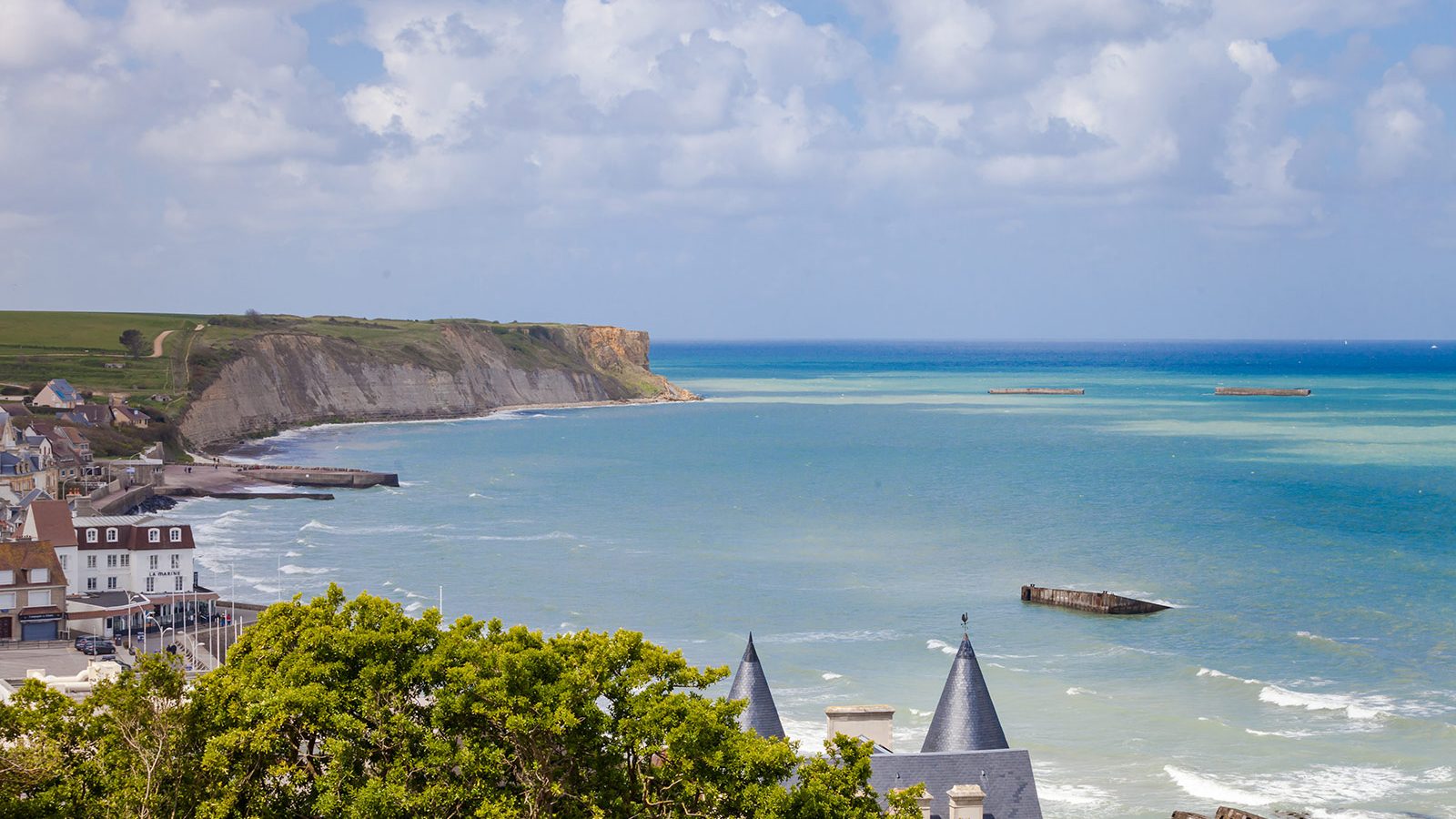
1944 – 2024: 80th Anniversary of D-Day and the Battle of Normandy
© S. Lorkin / Anibas Photography-Arromanches
Find out more
Normandy Experiences
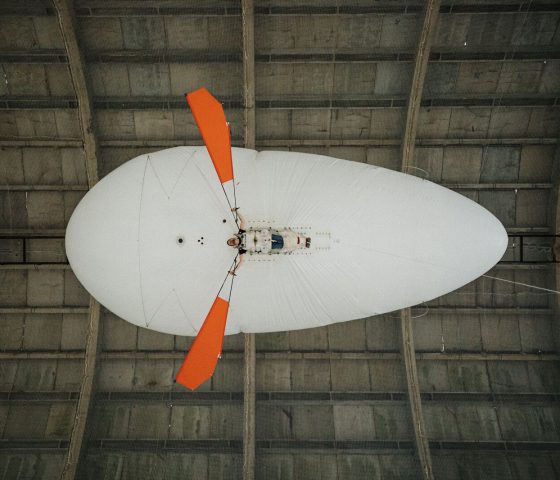
Spread your wings and fly an Aeroplume!
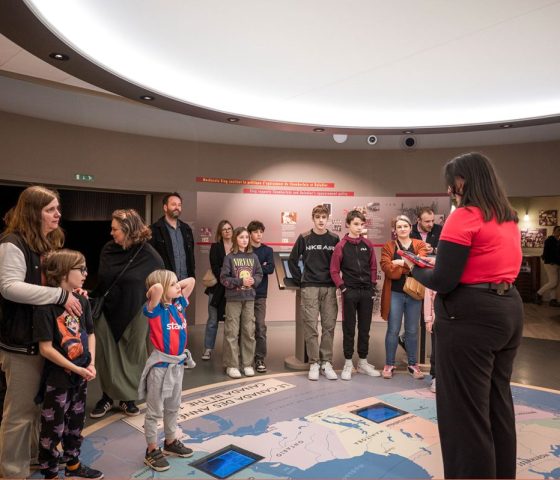
Family Day at Juno in the Footsteps of Canadian Soldiers

Craft Your Own Cider at Mont Viné Cidery
Immerse yourself in Normandy Experiences

1874 – 2024: 150th Anniversary of Impressionism
Updated on 4 April 2024
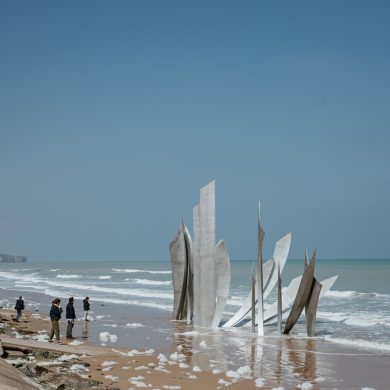
Exploring Normandy D-Day Landing Beaches without a car
Updated on 29 April 2024
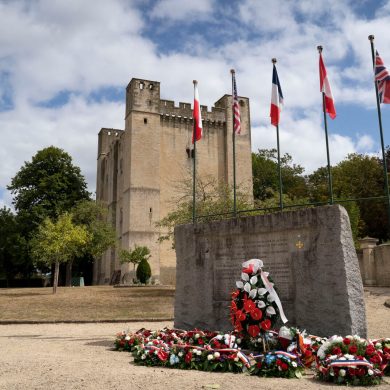
D-Day & the Battle of Normandy: 10 offbeat sites to explore
Updated on 5 September 2023
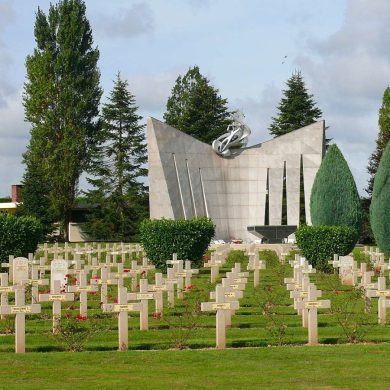
D-Day: 10 Unexplored Sites of Remembrance in Normandy
Updated on 11 July 2023
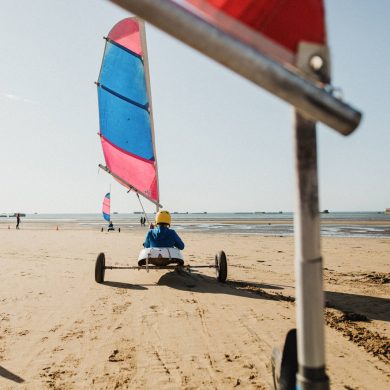
Explore the Past in Motion: History & Sports on D-Day Beaches
Updated on 8 January 2024

Touring Normandy’s Impressionist Sites Car-Free
Updated on 6 May 2024
See more articles
Major events

1944 – 2024: 80th Anniversary of D-Day and the Battle of Normandy
1 - 16 June 2024 (D-Day Festival)
Throughout Normandy

Normandy Impressionist Festival
22 March - 22 September 2024
Rouen, Caen, Le Havre, Cherbourg, Giverny, Honfleur, Fécamp, Saint Lô and across all of Normandy
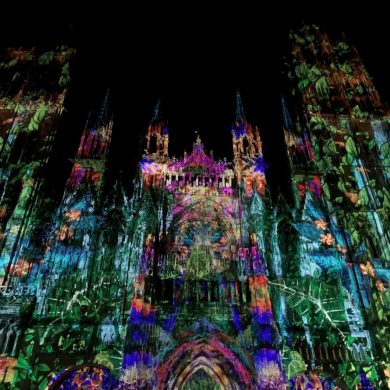
Rouen Cathedral light show
24 May - 28 September 2024
All major events in Normandy
More than just must-sees!
- 🧵 Alençon
- 🎖 Arromanches-les-Bains
- ⛲ Bagnoles-de-l’Orne
- 🛡 Bayeux
- 👫 Cabourg
- 🤴 Caen
- ☂ Cherbourg
- ⛱ Deauville
- 🎏 Dieppe
- 🗝 Étretat
- 🏰 Falaise
- 🐟 Fécamp
- ⛱ Granville and the Chausey Islands
- 🎨 Giverny
- 🏙 Le Havre
- ⛵ Honfleur
- ⛪ Lisieux
- 👼 The Mont-Saint-Michel and its Bay
- 👟 The Nez de Jobourg
- 🌳 The Perche
- 🕰 Rouen
- 🏝 Saint-Vaast-la-Hougue and Tatihou Island
- 🧗 The Suisse Normande
- 🎣 Trouville-sur-Mer
- 🌷 Normandy’s ‘most beautiful villages in France’
Return to top
Are you already in Normandy?
Plan what to see and do while you’re here by visiting normandy-secrets.com, which lets you in on all of the local secrets and hidden gems in the immediate vicinity!
Close search box

Visiting the beaches of Normandy: D-Day landings and WW2 sites – your ultimate guide
Visiting the beaches of Normandy, with its wealth of D-Day and world war 2 sites, was on our bucket list of things to do while in France and it’s one of those places that are well worth the visit.
They can be accessed easily from either the UK or other parts of France (and as such, the rest of Europe) and each year they get more and more visitors eager to learn of what happened on 6th June 1944, or as it’s now known – D-Day.
This article probably contains affiliate links. This means that if you buy or book after clicking, I may get a commission at no extra cost to you. Thanks!
I hope our guide to visiting these WW2 sites on the French coast of Normandy will be helpful and inspiring to anyone planning a visit and also anyone with a passing interest in our recent history.
Essentials for your D-Day explorations:
- Guide book with background info on the D-Day Sites
- Normandy Road map
Guided tour from Bayeux
- Half Day Small group tour to Omaha Beach
Our guide to visiting the beaches of Normandy and WW2 sites
The words have become almost normal now – incorporated into our everyday speech – D-day, beaches of Omaha, Utah, Sword, Gold and Juno. Strange to think that 100 years ago, these words meant nothing in the context that we now think of them.
That’s what’s so moving about visiting the beaches of Normandy , the fact that it was so recent, that there are still people alive who remember those days, lived through them and either were there themselves or heard the news about it. As time moves on fewer are around to tell the tale first hand, so it’s all the more important to keep the stories alive and to give weight to those words.

I knew of D-day, of course. I grew up with fairly limited knowledge of the history though, I had heard the term but only really learned about the operation when our son developed a passion about the time period. We watched films, documentaries and tv series about the war – I thought I knew what we were going to see when we visited Normandy!
What remains of World War 2 in Normandy today is sombre, touching and hopeful. Sombre because it was the scene of many deaths, not just fallen men, but brothers in arms (to coin a phrase), comrades and friends. Touching because there are still memories of a time gone by scattered around. Hopeful because it’s a reminder of what can be achieved by humans in the pursuit of a better world.
Pin for later!

It’s not all about the war in Normandy though. If you’re planning a trip with those who aren’t quite as interested, or perhaps with children who might not cope with days learning about death and fighting, the area has so much more too. Gorgeous little towns, beautiful scenery and of course that amazing French food!
Normandy Invasion – a super quick history
Ok, this will be quick as I imagine if you’re interested in visiting the Normandy D-Day beaches you have a slight inkling of the history involved.

It was one of the largest organised invasions of all time that incorporated naval, air and land troops and it was a turning point for the Allies in World War 2. The Normandy invasion on D-Day, 6th June 1944, were truly immense undertakings from the armed forces of not only Britain but also the USA and Canada.
Prior to it happening, France was under occupation from the Germans and their advancement throughout Europe was continuing. The Allies needed to have a foothold in Europe in order to have any hope of turning the tide. What’s interesting is that the Germans actually knew that an invasion was likely to be happening, but they didn’t know where from and where the Allies would land. There were many attempts to throw off the scent and the Germans did think the invasion would come further up the French coast in Calais or Dunkirk where it was much closer to the UK coast but of course that never happened.
It was so much more than D-Day itself though – there was months of preparation which included simulating the Normandy coastline in areas of the UK coast, practicing their manoeuvres and training the personnel. This was an immense undertaking. Further to this there was an operation whereby the coastal defences were bombed in advance of the invasion.
On the day itself, the Allies began by parachuting in airborne forces behind the enemy lines where they took strategic points and would meet up with the troops that began to land in the early hours of June 6th. They fought with the soldiers and guards of the Atlantic Wall that Hitler built. It certainly wasn’t easy but eventually they took the areas one by one, strategic towns and points were gained and the Allied forces pushed the Germans back.
Although the operation as a whole was a success there were many stories within D-Day where it seems the opposite. Many, many lives were lost on both sides which is a terrible tragedy no matter the outcome.
A note on the names of the beaches in case you don’t know.
There were many different areas of the coastline that troops landed on but they were generally split in to 5 sections and each had a different armed force in charge of landing there.
Each area was given a code name – Utah, Omaha, Sword, Gold and Juno. The Americans were charged with the Utah and Omaha landings. The British landed at Sword and Gold and Juno was mainly Canadians. The overall operation was called Operation Overlord and the landings themselves Operation Neptune.
The history of this time is vast and I’ve researched thoroughly for this article but I’m not a historian so please forgive me if there are any inaccuracies – and also let me know so I can put it right! For more in depth research of this time period Wikipedia is a good start and from there explore their related links at the bottom.

Why visit the D-Day beaches in Normandy?
Of course D-Day has been immortalised in films and tv series over the years and it’s one of the biggest and most well known operations from the Second World War.
It’s an iconic moment in history and one where we can look back and see the huge sacrifice that was made actually did make a difference. If D-Day hadn’t turned out as it did the outcome of the war might have been very different. As such it’s a huge part of our history.
I feel that we must always remember the sacrifices made for us and while watching documentaries, reading books and enjoying movies about it can keep the stories alive, visiting the sites really gives a new dimension.
You can know that soldiers lost their lives on a beach, but it’s just words. Seeing that area and visiting the nearby graves really brings home the personal sacrifices.
For many of us it’s important to visit because we have a personal connection to the day too. Many people come as a pilgrimage to pay their respects to family members who fought there.
For others, and I include myself personally in this, it’s just a really interesting place to go. This is recent history and an important piece of the huge story that is the second world war. No matter what I know about a place or piece of history I can’t fail to get something out of experiencing the place in real life.
Museums help to keep the information of each area in an organised manner and you’ll find many enthusiasts willing to speak to you about the history if you take the time to ask. By supporting these places you’re also helping to preserve the historic sites for future generations – definitely worth it.
Lastly, Normandy is a beautiful place in its own right. I’m focusing this guide on the D-Day beaches and the war history of the area, but there’s so much to enjoy here that’s not just war related so go enjoy the food, the countryside and the people too!
What are the Top 10 must see sights at the D-Day Normandy beaches?
Here’s the places you really shouldn’t miss on your tour of the D-Day beaches in Normandy – I’ve listed them in order from west to east rather than importance:

The first beach that you’ll get to if you are coming from Cherbourg or doing the tour West to East is Utah.
This beach was landed by American troops and was the more successful out of the two the US were dealt. The reasons are most likely geographical, the Germans were defending a wide open coastline here, flat with no difficult to reach areas they could attack from. Overall there were less than 200 casualties for the Allies here and it was a relatively quick victory.
Utah beach is one that isn’t in a built up area and the beach itself is nice to walk along if you get good weather with many remains of the German defences scattered along and lots of monuments to the battalions and units present there. There’s also a museum which attracts most people with an interest in the time period and is fairly inexpensive.
Utah Beach Landing Museum – learn about the chronology of the landings, see a B26 bomber.
Winter opening hours (Oct 1st – May 31st): 10am – 6pm. (It is closed for the majority of December, opening from the 26th – 30th only)
Summer opening hours (June 1st – Sep 30th): 9.30am – 7pm
Get tickets here
Sainte-Mère-Église
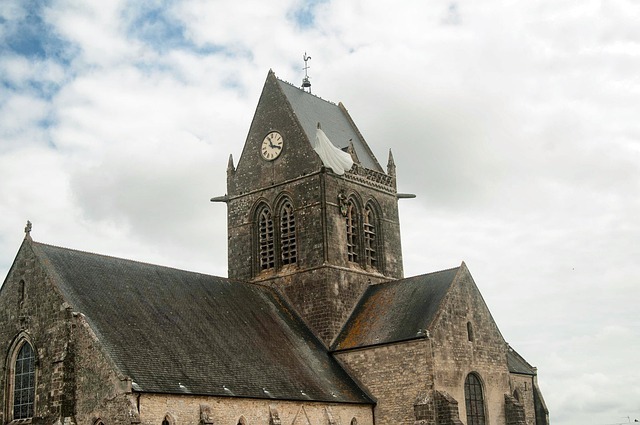
A big part of the operation at Utah beach was the destruction and capturing of many of the strategic points in the area from the airborne divisions who landed at various places including Sainte-Mère-Église, a small Normandy town.
Some of the 82nd Airborne division landed at Sainte-Mère-Église in the very early hours of the 6th of June 1944, unfortunately too close to where they planned to land. Many of them died as some buildings on fire in the town lit up the parachutists descending and were easy targets for the Germans. One interesting tale is about the soldier, John Steele, who found himself caught on the steeple of the church as he tried to land. He was shot in the foot, in lots of pain and could only watch some of the others in his company as they were killed. He dropped his knife so could not free himself and so had to pretend to be dead while the fighting was going on around him. He eventually was rescued from his precarious position by the Germans and he became a prisoner of war until he escaped a few days later. Despite early German dominance the town of Sainte-Mère-Église was taken soon after on June 7th 1944 and it also has the honour of being the first liberated town of the Normandy invasions.
In the town itself there’s a museum dedicated to the 82nd and 101st Airborne division – if you’ve watched Band of Brothers, 101st Airborne is portrayed in it.
It’s well worth spending some time there with plenty that will keep kids happy (both of mine enjoyed their time there) and provide an insight in to what happened in the area for those interested to learn more. Lots of replica planes and gliders to get a sense of what was involved!
The church keeps the story of the parachutist alive by keeping a fake dummy of a soldier on its roof top.
It’s a pretty town to explore round with many tourist shops selling world war 2 memorabilia, some restaurants and cafes too. We really enjoyed our time there.
Airborne Museum – learn about the airborne attack, how they liberated the town and also see some of the gliders and planes used.
Opening times:
- May – Aug: 9am – 7pm
- April and September: 9.30am – 6.30pm
- October – March: 10am – 6pm (the museum is closed throughout December and January)
See here for more information
Pointe du Hoc

One of the areas of Normandy that remains much as it was during the time of the landings is Pointe du Hoc. It’s a steep cliff edge and the highest point of the area which sat between the beaches of Utah towards the East and Omaha which lay to the west. As such it was heavily fortified and protected by the Germans despite it having been bombed prior to D-Day.
The United States Army Ranger Assault group were charged with the scaling of the cliffs at Pointe du Hoc and removing the German artillery with the help of the British to land them at the scene. Before even landing there were problems straight away with the sinking, and subsequent loss of those on board, of one of the amphibious DUKW vehicles. On landing the Germans fired heavily on all of the troops with disastrous effect and on reaching the base of the cliffs the Rangers were at half the initial numbers. To reduce the risk of them being fired at as they grappled up the cliffs, navy ships from the US and British navies fired on the German defences. On reaching the top the soldiers struggled with yet more set backs: their radios didn’t work and their objective of removing a main artillery defence was already gone. After intense fighting the finally overpowered the remaining guns and destroyed them. They held off lots of counter attacks from the Germans over the next couple of days until they got relieved by further US troops on the 8th June.
Pointe du Hoc is one of the stories I personally didn’t know much about but which I’m so glad I learned about.
The museum at Pointe du Hoc does a really touching video which explains what happened. Reading about the words often don’t convey the sense of what happened, but listening to the stories from the soldiers who scaled the cliffs themselves, watched their friends get fired upon and who came home to tell the tale brought tears to my eyes.
There’s lots to see at Pointe du Hoc as well as the visitor centre – the remains of the casemates built by the Germans can be explored and you can imagine how it might have looked to them as the enormous amounts of D-Day troops descended on the area. Craters litter the site too where it was heavily bombed.
Visiting Pointe du Hoc
Open daily throughout the year
- April 15th – September 15th: 9am – 6pm
- Rest of the year: 9am – 5pm
Pointe du Hoc is one of the few free things to do in Normandy related to WW2 – if you’d like more information about visiting see here .

Maisy Battery
I have such a soft spot for parts of history that are covered over and forgotten about for years and Maisy Battery is one such place.
It was a very important German defensive position situated between the Utah and Omaha beaches and consists of over 2 miles of tunnels, bunkers and trenches. The history of the site is still coming to light with all the war documents being released over the years – it seems that it was an unknown site to the Allies and that the Germans used Pointe Du Hoc as a ruse to confuse them and with the removal of the big guns that were expected to be there, this could certainly be true. It was lost to the world for over 60 years and was only rediscovered as someone found an old map to it in a veteran soldiers trousers. That discovery combined with the opening of war files has opened up an exciting and interesting chapter!
If you drive past you might miss it – it’s completely camouflaged from the casual viewer! Nowadays you can walk round the site, explore the tunnels, see some old guns, cannons and weaponry. It’s a great day out and quite different to many of the other WW2 sites around Normandy.
Visiting Maisy Battery
Opening times
- April 1st – May 31st: 10am – 4pm
- June 1st – Aug 31st: 10am – 6pm
- September 1st – September 30th: 10am – 4pm
- Closed from October – March (although you can contact them with a possibility of visiting)
See here for more details and tickets
Omaha beach

The US Army had the objective of securing the Omaha beachhead however a catalogue of mistakes and confusion led to this being an extremely difficult operation with huge numbers of soldiers losing their life. It started with the naval bombardment of the German defences – it wasn’t enough as they navy didn’t want to risk hitting the landing crafts. The landing troops were also blown off course quite a lot on the morning of the invasion due to the weather and this did not help matters. The intelligence about the defences were flawed, they had trouble bringing vehicles on land with many of them being swamped as they tried to land and finally many of the soldiers were wiped out as soon as they did land due to heavy gun fire from the Germans. As many as 2000 lost their lives (some sources report up to 5000) on that day. After many days of fighting the objectives were completed, the beach secured and it was eventually used as a harbour to bring artillery and troops in to France and to help the push against the Germans.
Nowadays there’s a few remnants of the war still visible. There’s many monuments to the regiments that fought along this stretch of land and who also lost lives as well as a memorial museum. At low tide you might also be able to see the remains of the harbour that they built but not as prominent as the one at Arromanches.
Omaha Beach Memorial Museum
- February: 10am – 5pm (opens mid February – check their site for dates if travelling round then)
- March: 10am – 6pm
- April – May: 9.30am – 6.30pm
- June: 9.30am – 7pm
- July – August: – 9.30am- 7.30pm
- September: 9.30am – 6.30pm
- October – November: 9.30am – 6pm (closes mid November)
- Closes from mid November – mid February.
See more information here
American cemetery

Overlooking the beach at Omaha is the American Cemetery which holds a great number of US soldiers who died in the second world war and with many of them being in the time of the Normandy landings. It’s a beautiful place which overlooks the sea and it’s a heartbreaking visual reminder of the loss of life suffered.
Of course, it’s not the most cheery of places to visit and we couldn’t stay long as our daughter didn’t want to go (always something to bear in mind when visiting these WW2 sites with kids) but it’s a very important place that should be included in your itinerary if you can.
There’s a visitors centre there too which tells the stories of the soldiers and is free to enter.
Normandy American Cemetery Visitor Centre
Admission is free – see more info about the site here
Gold beach & Arromanches sur les bains

This was my favourite site of our trip (see below for our thoughts on what to visit if you can only visit one beach) and it provides lots for anyone visiting Normandy with hopes of seeing WW2 history – there’s lots still visible!
The landings at Gold beach are slightly to the east of Arromanches and this was on of the two beaches that was taken by British troops. The day started like many of the others with bombardment and bombing of the area the night before and the troops landed in the early hours of the morning of 6th June. Choppy and rough seas meant that like many other beaches the men landed slightly off course and the vehicles they tried to bring ashore would get bogged down in the sand. There were many casualties at Gold with around 1000 reported. At the end of the day, almost 25,000 troops landed, they took Arromanches and eventually used that site to build a mulberry harbour which allowed them to bring in more weaponry to mainland Europe for the rest of the war.
There’s lots to see at this area. We really enjoyed our visit to the town of Arromanches-sur-les-bains as you can see lots of the remains of the mulberry harbour. This was the temporary harbour that was built to move tanks, weapons and soldiers in to the country. There’s also a really good museum in the town too which I recommend to learn more about this area and how they landed and used the town. Longues-sur-mer battery is also a well preserved German defence area that is worth visiting if you’re around this section.
Longues-Sur-Mer Battery
Freely open to look around – there are guided tours as well at the following times of year:
April, May, June, September & October: weekends only
July & August: daily
Tours run in both English and French – see here for more details.
Musée du Débarquement / D-Day Museum in Arromanches – learn about the mulberry harbours and the d day landing beaches
- January: Closed
- February: 10am – 12.30pm & 1.30pm – 5pm
- March: 9.30am – 12.30pm & 1.30pm – 5.30pm
- April: 9am – 12.30pm & 1.30pm – 6pm
- May – August: 9am – 7pm
- September: 9am – 6pm
- October: 9.30am – 12.30pm & 1.30pm – 5.30pm
- November & December: 10am – 12.30pm & 1.30pm – 5pm
See here for more details

The responsibility of the Canadian army was Juno beach which was located inbetween Gold and Sword. The familiar story of the sea conditions causing delays and problems to the landings also applied here and the beaches were heavily protected by the Germans. Although there was a preliminary bombardment of the sites they weren’t very effective and as such the troops landing were under heavy fire from the very start. It’s considered one of the more successful landings, alongside Utah, even though many of the objectives weren’t actually met. Casualties were relatively low, around 340 dead on the day.
One of the towns in the area, Courselles-sur-Mer, now features a museum and memorial called the Juno Beach Centre. If you’re at all interested in the Canadian effort in the war as well as the specifics of the Juno landings then I’d highly recommend a visit.
Juno Beach Centre
- January: closed
- February: 10am – 5pm
- April – September: 9.30am – 7pm
- October: 10am – 6pm
- November- December: 10am – 5pm
Get more information here .
Sword beach & Pegasus bridge

The final beach going from west to east is Sword beach at the town of Ouistreham.
Sword was the responsibility of the British army and although the experienced quite a few casualties on landing at the beach, they managed to get their armoured vehicles landed quickly and took the beach in fairly good time. This beach was the closest to Caen which was a major objective in Operation Overlord and so the troops moved onwards to there but suffered lots of setbacks and resistance on the way. Another important place nearby is Pegasus Bridge which played a part on the night before the landings where the plan was to secure the bridge and prevent any further German troops from gaining access to the bridge and hindering the landings the day after. They arrived by using gliders successfully taking the Germans by surprise.
Sword beach was the first that we visited and it’s very strange, yet happy place that is a completely normal beach town. Not what we were expecting at all. There were people playing on the beach, lots of land sailing going on and just a generally nice atmosphere.
The town of Ouistreham is a pleasant town to spend a night as well with lots to see if you’re interested in the landings. There’s the Grand Bunker museum which is well worth a look, No4 Commando museum and also the Pegasus bridge memorial too all within that town.
Grand Bunker Museum, Ouistreham – see the command post as it was and learn about the Atlantic Wall
- Jan 6th – Feb 8th: Closed (2019 dates)
- Feb 9th – March: 10am – 6pm
- April – September: 9am – 7pm
- October – January 5th: 10am – 6pm
See here for more information
Pegasus Memorial Museum
Open every day from 1st February – 15th December
- February – March: 10am – 5pm
- April – September: 9.30am – 6.30pm
- October – 15th December: 10am – 5pm
See here for more information.

Though not a beach, a major player in the Battle for Normandy is the city of Caen which suffered terribly in the days after D-Day. It was actually in the plans for it to be captured on D-Day itself, but that never happened, the Germans defended it fiercely and what ensued was fierce fighting and many casualties on both sides and civilians. It actually took around 7 weeks for the city to be taken and ended with a bombing from the Allies which killed many French citizens and completely destroyed the city, reducing the majority of it to a pile of rubble.
Caen has many memorials about WW2 but the main one is the Memorial de Caen which houses a really good museum which is worth checking out. If you are in the area do also check out the Abbey d’Ardenne which was the site of an atrocity committed by the Germans against some Canadian soldiers they had taken as prisoners. At least 20 soldiers were executed there and there’s a touching war memorial to the men.
Caen Normandie Memorial Museum
- February – March: 9am – 6pm
- October – December: 9.30am – 6pm (some Mondays are closed also in this time)
See here for more information and tickets
Tips for visiting the Normandy WW2 sites
- Winter sees lots of the sites close for the season – do be aware of this if you are coming in the winter months. If sites are open their hours are reduced a lot too. Although out of season is generally a good time to visit, do make sure what you want to see will be available. January sees many of the museums close completely so I’d recommend not to visit that month at least.
- It rains. A lot. We were there for about a week in April and saw so much rain! Later we learned that Normandy is a very rainy region and is well known for it!
- As these are war graves, dress and act respectfully
- Around D-Day itself many of the sites close for ceremonies and it will be much busier so if you’re visiting around then check individual sites and book well ahead.
- France is well known for long lunch hours – as you’re visiting the towns and villages around be aware of this and don’t be surprised that shops shut.
- Sundays are also a day when almost everything shuts (although the D-Day museums around here tend to be open) – get any supermarket shopping done in advance. We were definitely taken by surprise by this on our first visit to France!
What Normandy WW2 museums are worth visiting?

There are many museums along the coast line and in towns, too many really for one trip. Unless there’s a specific area or operation that you’re interested in I’d suggest heading to wherever is convenient for you and enjoying what is on offer there. There’s a chance of information overload if you try to do too many.
I mean, how many guns can you see without getting bored? My son would probably argue with me about that!
We haven’t visited all the museums in the area (unfortunately!) but we did enjoy the D-Day museum in Arromanches as well as the Airborne museum in St Mere Eglise and I’ve heard good things about all the museums in Normandy.
How long should you spend in Normandy?
If you’re planning a Normandy trip I’d say that a good time to take in the sites is around 3 or 4 days. This would allow you to really see all the beaches, plenty of museums and other sites around the area and for you to take in the larger towns such as Bayeaux and Caen.
More than this and I’d imagine that history overload might take over, but your mileage may vary!
If you want to incorporate checking out the rest of the area including the gorgeous Mont St Michel then I suggest as long as you can spare and at least a week! France is a great place to visit and we enjoy the slow pace of life there a lot! Try not to rush your time there.
You can only visit one beach – which one?
This is a difficult one to answer and each person in our family who I asked said a different place.
I think this can possibly depend on your war knowledge or maybe your heritage – Americans will almost certainly say Utah or Omaha, Canadians will say Juno!
Personally I found Gold beach and specifically the town of Arromanches to be a really special place to visit and this is coming from someone with only basic knowledge of what happened in Normandy in WW2. With parts of the artificial harbour still in view and being able to be seen up close, it really helps you visualise what happened back then. Obviously if you can, visit at least a couple, but if I had to choose just one it would be the area around Arromanches-sur-les-bains.
I asked my son (our resident WW2 nut – he knows way more than me!) for his opinion and he said Omaha due to the extreme loss of life there and the significance of that beach in later films so that would be my second choice. You also have the American Cemetery nearby too so easy to incorporate that in to your day.
My husband said to visit Pointe du Hoc. I know, we’re not very helpful in narrowing down the choices!
If you are pushed for time, consider what is important for you to see. If you’re British and want to see the places that they fought concentrate on the middle to east part. If you’re Canadian you’ll likely want to concentrate on the Juno area and if you’re American or interested in the infamous Bloody Omaha then you’ll want to stick to the west.

Interested in more WW2 travel? See our posts about London’s WW2 sites or visiting Colditz Castle in Germany
Getting to the Normandy beaches
How to get to the normandy beaches from the uk.
Update – check out our new post about getting to Normandy from UK
When we travelled we took our motorhome over on the Dover to Calais crossing with DFDS (always the cheapest option when I check) and travelled down from there. It was a fairly straightforward journey but one thing I’d say is to not underestimate the time it can take to get to places in France. It never looked too far on the map but it can be especially if you’re not using the motorways.
If you want to get yourself right in the heart of Normandy straight away and keep journey times to a minimum then I recommend a ferry to Cherbourg which means you can start at the Western end of the beaches near Utah within around 45 mins drive of the port. Alternatively you can get a ferry to Le Havre which is about an hour and a half from Ouistreham and the eastern end of the beaches or Dieppe which is just over 2 hours drive away.
Brittany ferries – goes to Caen, Le Havre and Cherbourg
DFDS – goes from Newhaven to Dieppe
P&O ferries is another option to Calais
Looking for an itinerary for your trip? Check our 3 day self drive Normandy D-Day itinerary
There are also many tours that depart from the UK if you want to visit but aren’t too keen on doing it independently. My Father in Law took a coach trip a few years back and thoroughly enjoyed his time there and it’s a great idea if you want to just sit back and enjoy your time there.
How to get there from Paris
If you are arriving in Paris and want to incorporate the beaches in to your France itinerary then I suggest one of two options: either hire a car or arrange a place on guided tour.
It’s around a 3 hour drive to Ouistreham on the most eastern end of the landing sites so doable as a day tour if you wanted to, although it would be a long day. To check out rental car options I recommend DiscoverCars.com which compares many companies to find the best deal.
Guided tours from Paris to Normandy are plentiful from the capital with some taking in the area over a couple of days and others just doing a day trip.
When looking at these tours bear in mind if you have any specific places you want to visit and see if they include them as it’s impossible for them to cover everything!
This one is a good option and if you have a couple of days to spare this one is worth a look and even covers other Normandy sites such as Mont Saint Michel.
Visiting the beaches from Le Havre
Many cruise ships stop in Le Havre and as such it’s a good place to get excursions to the beaches. Here’s one that covers many areas in a day.
Canadian sites from Le Havre
US sites from Le Havre
Using public transport to visit the Normandy beaches
It’s not particularly easy to use public transport to get to all the sites in Normandy but with some planning you should be able to visit a few places.
Caen is an important part of the invasions and is worth seeing if you can. Trains are around 2 hours from Paris in to the city. If you want to do a tour from Caen this one would be worth checking out.
Bayeaux is another good town to visit and easily reached by train as well. From Paris it can take between 2.5 and 3 hours to get there and it’s also easily reached by Cherbourg in about 1 and a half hours if you happen to be a foot passenger on one of the ferries.
Tours from Bayeux
There are many tours from Bayeaux that can take you on to the beaches themselves and are a better option that trying to navigate the buses which are infrequent.
US Sites tour
US and British sites
Canadian sites tour
Driving tips for France
If you decide to drive over in France then here’s just a couple of tips:
- make sure you have a european driving kit that covers you for the legal things you need in France – Hi vis jackets, headlight deflectors (if coming from the UK),
- the motorways in France are often toll roads and it can add up over time. Either be prepared for this or plan a route that avoids them.
Where to stay when visiting the Normandy beaches
Bayeaux is a perfect base for any tour to the beaches whether it’s self drive or going by guided tour. I’ve linked below to a couple of options with Booking.com – they are my preferred booking portal as often you can book without needing a deposit and they are super easy to use.
If you want to stay in the centre of town itself, be close to the town’s attractions such as the Bayeaux Tapestry (ok, now WW2 but still pretty cool) then I suggest the Hotel du Luxembourg which comes highly recommended. It does have parking, although there’s a charge of €9 a day so do bear that in mind. Check the hotel out here .
A budget option in Bayeux would be the Ibis hotel with free parking on site – here’s some more information about it .
Campervan and motorhome travel in Normandy
If, like us, you decide to take your motorhome to Normandy then you’re in for a treat as France is amazing for free or low cost camping areas (called Aires) in towns and villages all round the area.
I think we managed pretty much not paying anything for the whole of our journey except for one night on a campsite. I recommend getting the book All the Aires which gives all the information on where to stay and what facilities are available.
What next? Get inspired with movies, tv shows and books: Band of Brothers Saving Private Ryan D-day audio book Start planning your WW2 France trip with these guide books: Lonely Planet Normandy Travel the Liberation Route Book your hotel in Normandy: Booking.com
You might also like :
- Visiting Sherwood Forest: See Robin Hood’s Tree hideout – the Major Oak
- 5 gorgeous hotels overlooking Edinburgh Castle
- Our Texas to California Road Trip itinerary with 1000 miles on Route 66
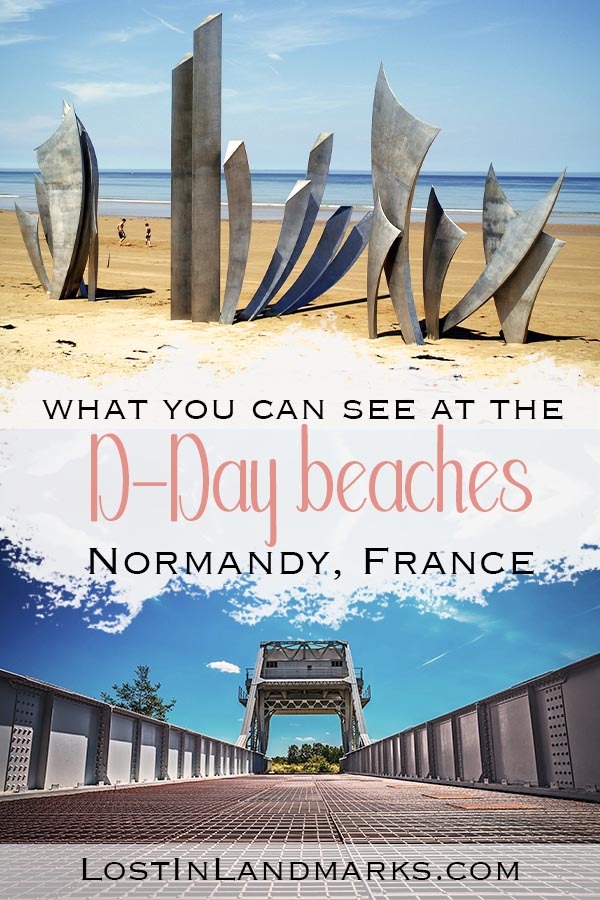
Kirsty Bartholomew
2 thoughts on “Visiting the beaches of Normandy: D-Day landings and WW2 sites – your ultimate guide”
Opening times typically range from 9-10am to 5-6pm, but daylight stretches much further. Therefore, my usual question: which beaches/sites can be acceptably experienced outside 9-18 time bracket?
Good question Pablo – all the beaches are accessible outside of opening times for the visitor centres. I would say to perhaps look at the tide times especially for beaches like at Arromanches as when the tide is out you can walk up to the pontoons but of course when it’s in they are covered. BUT definitely don’t let the fact that the visitors centres not being open deter you from going. Plenty to see!
Leave a comment Cancel reply

Check rates for our recommended hotels
- Book Hotels
Subscribe to our weekly newsletter
Subscribe and get our free guide to "101 Ways to Save in Europe"
* indicates a required field
Your subscription request has been received
Sorry, an error occurred and your subscription request could not be processed. Please try again later.
- See All Cities
- Advertising Info
- Customer Support
10 tips for planning a trip to the Beaches of Normandy
Aug 7, 2019
Bryan Pirolli

After commemorating the 75 th anniversary of the D-Day landings earlier this year, the Beaches of Normandy continue to welcome tourists to remember the battles that turned the tide in World War II.
Beautiful landscapes, intense history, and a sobering dose of the realities of war all blend to make a worthwhile trip away from the Parisian crowds.
The good news is it won’t break the bank if you plan appropriately.
Tips for visiting the Beaches of Normandy
Here are a few ways to save time and money on a trip to these iconic sites.
1. Give yourself plenty of time
Treat yourself and don’t try to do it in a day. Of course, if you’re pressed for time, you can visit a memorial and a beach during the day and return to Paris in the evening. It’s tough but doable.
Instead, give yourself at least one night in one of the nearby towns so that you can enjoy more of what the Normandy beaches have to offer. Two nights is even better, and hotel rates will usually be cheaper than in Paris.
Related: 8 Paris day trips less than an hour away by train
2. Getting there on the cheap
Public transportation to the beaches is reliable, but it takes time. A train to Caen or Bayeux takes about two hours. From Bayeux, true Cheapos can plan a bus route to the beaches. The line 70 of the Bus Verts , for example, takes about thirty minutes to get to Omaha Beach for just a few for euros. Plan your trip carefully because buses don’t run too often, so missing one could mean a long wait!
The best option, though it will be pricier, is to rent a car from a town outside Paris. It may cost more upfront, but you’ll be able to experience more without a potentially costly taxi ride when you miss the last bus to town.
To see more details about transportation options in Normandy, check out this local website .

Stay in Bayeux for a fairytale experience. Photo: Gaetan
3. Stay in Bayeux
There are numerous options in Bayeux for affordable stays, allowing you to use the charming town as a base for your Normandy escapades. It’s located midway between most of the major sights, making in a convenient option. The town itself has a stunning cathedral and a world-famous tapestry if you decide to stay longer. Search for hotels in Bayeux
Caen is a slightly larger town, and it sometimes has some good deals, though Bayeux is arguably a more worthwhile experience for visitors. If you’re looking for more options, you can search for hotels in Lower Normandy .
4. See the famous beaches
From east to west, the main beaches are Sword, Juno, Gold, Omaha, and Utah. Omaha Beach tends to attract more Americans since it is also home to the cemetery dedicated to fallen U.S. troops and features the cliffs where Germans defended against the Allied invasion. Each beach has its story, with memorials and museums open to the public.
It’s best to do some research on them beforehand to choose which one or two are most important to you to visit and then plan accordingly, to economize on driving time (and fuel!).
5. Don’t miss the museums and memorials
To understand the importance of each beach, there are exhibitions dotting the coastline and towns around Normandy. Some of the most famous include the Musée du Embarquement in Arromanches where the artificial port was built, Musée Mémorial de la Bataille de Normandie in Bayeux, the Le Mémorial in Caen , and the Utah Beach Landing Museum .
It will be impossible to visit every beach and museum, so, again, choose the one or two that seem the most interesting to you. If traveling with children, one might be enough.

The American Cemetery sits on top of the cliff near Omaha Beach. Photo: Neil Willsey
6. The American Cemetery is a must-see
The most famous is the American cemetery at Omaha Beach, where white marble tombs face the United States. Its visitor center was renovated in time for the 75 th anniversary of the landings in 2019. A visit here is humbling and free, but it’s not the only cemetery worth visiting. British, Canadian, and German cemeteries also line the coast, like the Bayeux War Cemetery , home to over 4,000 Commonwealth troops.
There are dozens to visit, some containing only a few tombs while the American cemetery has nearly 10,000 graves.
7. Take a tour
While ParisCityVision does offer day trips from Paris, consider booking a local guide once in Normandy. Some companies like Normandy Sightseeing Tours offer half and full-day options but get creative with your Googling for other options that might be more intimate or budget-friendly.
The value of a guide is that you’ll be able to learn about the beaches, bunkers, and other sights that you may otherwise just look at without truly understanding what happened.
8. Study your history
If you’re going the true cheapo route and bypassing a guide, then do yourself a solid and study up on the importance of the beaches before going. Those who are unfamiliar with what happened along the Normandy coast may have difficulty understanding the significance of these beaches.
It would frankly be a waste of time to rush out for the photo op without taking a moment to appreciate the fallen soldiers and all that happened on these pristine sandy shorelines.
Related: 10 ways to prepare for your trip to Paris
9. Bag that lunch
A classic tip for any trip around France, be sure to bring your lunch. Fantastic baguette sandwiches and pastries at the local bakery in Bayeux, for example, are affordable and fantastic alternatives to spending time in a mediocre café somewhere on the road.
We’d rather nibble a €3 jambon beurre (ham and butter sandwich) while overlooking the crashing waves than sitting in a roadside cafeteria, wouldn’t you?
10. Make an easy detour to Mont Saint Michel
While going to the Normandy Beaches is an experience unto itself, consider stretching the trip even longer and driving to nearby Mont Saint Michel , an hour and a half drive from Bayeux. It’s not related to the WWII landings, but if you’re halfway there, it would be a shame to miss one of France’s most iconic tourist sights.
Have you been to the Beaches of Normandy?
We would love to hear your experiences on what you saw and how you got there. Share your favorite tips in the comments below!
About the author

About the author: A journalist and tour guide, Bryan makes it his mission to cover Paris from top to bottom. He has also successfully defended a PhD in travel communication at Sorbonne Nouvelle, giving him some more street cred. Bryan regularly travels on a budget, experiencing the best of European culture while still trying to make rent. So far, so good. You can follow his adventures on his blog: www.bryanpirolli.com .
Related Posts
- Paris: 7 favorite day trips and overnight getaways
- A World Apart: Rome’s English Cemetery
- Our 6 favorite budget beaches in Europe
- Three stunning London cemeteries
Leave a Reply Cancel reply
Your email address will not be published. Required fields are marked *
Notify me of follow-up comments by email.
Notify me of new posts by email.
5 thoughts on “10 tips for planning a trip to the Beaches of Normandy”
I am planning a 2024 trip. My son does WWII re-enacting and his unit has to be on Omaha Beach on June 29th. He will be staying where our soldiers stayed and eating K rations, my question is where do I need to fly into from Utah, USA?Paris? Also, we want to include Bastogne and the Ardennes Forest. Any suggestions? Thanks
Thank you so much for this article. We are planning our trip for this summer and didn’t know where to start. Now I do!!!!!
Thank you for this terrific information. I have been thinking of staying over in Bayeux and thought about getting a local guide to the Normandy beaches from there. It is a very long trip from Paris, especially when weather or traffic accidents cause “les bouchons” so I think the train is much more relaxing choice from Paris, I think Gare St. Lazare…
Thanks for the great tips, Bryan.
I have taken 25+ trips to the Normandy Invasion Beaches through my company, The Traveling Professor’s Small Group Tours. If going to the Normandy Invasion Beaches, I strongly urge travelers to NOT take one of those big bus tours. Big vehicles simply cannot get down to beaches like “Easy Red” and “Dog Green” where the toughest battles, like the one depicted in “Saving Private Ryan” took place. Small group tours also can visit special places, like the privately owned and perfectly intact Hillman Bunker. Big bus tours can’t get there. Lastly, with a smaller tour, travelers have more input on how much time to spend at a particular place. Big bus tours are on a schedule -their schedule, not yours.
Yeah I would agree on the big bus tours. Our guide was very knowlegeable but way too fast paced. We were rushed from place to place. Not much time to meditate on what happened there when the guide is rushing you off to the next site. If you have to do the big bus due to cost, try to do a two days tour. But if I had to do it over again, I would have chosen a smaller tour group. Unless you are a real history buff, I don’t recommend doing the beaches on your own. It’s too spread out. And everything shuts down at 5.
Book Your Trip
Search our blog:, destinations.
- Aix-en-Provence
- – Free Paris
- – Paris Eating and Drinking
- – Paris Hotels
- – Paris Nightlife
- – Paris Outdoors
- – Paris Performance and Events
- – Paris Planning
- – Paris Shopping
- – Paris Sights
- – Paris Transportation
- Northern Ireland
- – Florence Eating and Drinking
- – Florence Practical Info
- – Florence Sightseeing
- – Rome Eating and Drinking
- – Rome Hotels
- – Rome Practical Info
- – Rome Sights
- – Venice Eating and Drinking
- – Venice Hotels
- – Venice Practical Info
- – Amsterdam Sights
- – Barcelona eating
- – Barcelona hotel advice
- – Barcelona planning
- – Barcelona sightseeing
- – London eating
- – London hotel advice
- – London neighborhoods
- – London sightseeing
- – London transportation
- – Brooklyn
- – New York hotel advice
- – New York neighborhoods
- – New York planning
- – New York sightseeing
Read more about: France

Find us on Facebook
About eurocheapo.
Since 2001, our mission has been to make your time in Europe affordable and memorable. The world is out there, and it’s less expensive than you think.
© 2024 by Over There Interactive, Inc. All Rights Reserved. Privacy Policy
EuroCheapo Cities
- Top Destinations
- Mexico City, Mexico
- Tokyo, Japan
- Paris, France
- Rome, Italy
- London, United Kingdom
- All Destinations
- Upcoming Experiences
- Walking Tours
- Small-Group Tours
- Tours for Kids
- Museum Tours
- Food, Wine and Market Tours
- Newly Added Tours
- Audio Guides
- Pre-Trip Lectures
- Admin Dashboard
- My Favorites
- Cookies Preferences
- Client Orders
- Monthly Commissions
- My Advisor Profile
- Advisor Toolkit
- Guide Dashboard
Credit Balance
Transactions are based on current exchange rates and performed in USD. There maybe slight variations in the price estimates.
Visiting the D-Day Beaches: With Normandy Beach Map

Learn more about the historic Normandy Beaches during Context's Full-Day Private Tour with Private Car Service
Over one million people visit the beaches of Normandy every year to pay respects to the soldiers who lost their lives and experience the site of one of World War II’s most crucial turning points.
When was the D-Day Invasion?
D-Day, also known as Operation Overlord, was a significant event in history that took place on June 6, 1944. It marked the beginning of the Allied invasion of Normandy during World War II – which continued until July 24, 1944.
On this day, a massive amphibious assault was launched on the beaches of Normandy, France, by British, American, Canadian, and other Allied forces. D-Day represented a pivotal moment in the war, as it opened a crucial front against Nazi Germany and ultimately led to the liberation of Western Europe from the control of the Axis powers.
If you’re interested in touring this historic site, here’s what you need to know about planning a visit to the D-Day beaches in Normandy.
Can you visit D-Day Beaches?
Visitors can walk the beaches, but those inclined to learn more about history can visit dozens of nearby museums and monuments. Planning ahead will help you optimize your itinerary and ensure you get the most out of this impactful experience.
Context offers a Full-Day D-Day and Normandy Beaches Tour so you can explore key Normandy landmarks, including Normandy Landing Beaches, Pointe du Hoc, Omaha Beach, The Normandy American Cemetery and Memorial, and the Mulberry Harbour at Arromaches.
An expert on D-Day history leads the full-day tour, and it is a meaningful and educational opportunity to learn more about the events of June 6, 1944 and their impact on European liberation.

What were the 5 beaches on D-Day?
Code-named Operation Overlord, the Allied Operation included over 156,000 American, British, and Canadian troops landing on five beaches along a 50-mile stretch of coastline occupied by Germans. This meticulously planned amphibious military assault is widely considered the turning point in World War II and ultimately led to the liberation of France and the rest of Western Europe.
1. Utah Beach
Utah Beach was a last-minute addition to the plan due to its proximity to Cherbourg, a port city. Sadly, many U.S. paratroopers perished when their heavy equipment weighed them down in the flooded marshlands near the beach. Others landed outside their drop zones, but they eventually secured the beach’s only four exit points.
2. Omaha Beach
Because U.S. troops suffered massive casualties at Omaha beach, it is named the bloodiest beach on D-Day. About 2,400 U.S. troops were dead, wounded, or missing once the battle ended. Omaha beach was flanked by steep cliffs and was heavily defended, making it a perilous and devastating battle scene.
3. Gold Beach
British troops stormed Gold Beach, located in the middle of the five D-Day Beaches, about an hour after Utah and Omaha (due to the direction of the tides). While the Germans initially had a stronghold on the beach, British warships, aerial attacks, and armored vehicles proved victorious.
4. Sword Beach
Canadian and British troops invaded Sword Beach’s eastern flank and took out key bridges to prevent German reinforcements from arriving. The Germans answered with moderate fire, but the British and Canadian troops took out critical German artillery resources.
5. Juno Beach
Rough seas made for a challenging landing at Juno Beach, giving German soldiers the initial upper hand. Canadian troops faced monumental casualties as Germans fired from seaside bunkers. However, as soon as German resistance slowed, Canadians quickly advanced inland and captured several towns.

World War II Sites to Visit in Normandy
Did you know that D-Day was only the beginning of the Allied Invasion of Normandy? For twelve more weeks after June 6th, Allied forces continued to fight . Normandy played a large role in World War II, so it's no surprise that history buffs flock to the area to see the many significant locations across this region firsthand.
Omaha Beach
The serenity of Omaha Beach today starkly contrasts the violent scene that occurred here nearly 80 years ago. Visitors walk the coastline and honor those who lost their lives in a wartime battle that lives in infamy.
Visitors can also see remnants of the artificial harbor constructed by the Allies, known as Mulberry Harbour, and view the German bunkers and fortifications that remain on the beach. There are also several museums in the area, including the Omaha Beach Memorial Museum.
Normandy American Cemetery
Just beyond Omaha, the Normandy American Cemetery honors the American troops who gave their lives on the D-Day beaches. It is a poignant way to pay tribute to the legacy of those U.S. troops who never had the opportunity to return home.
Each of the 9,386 headstones contains the name, date of death, service unit, and country where he volunteered, except for the 307 who have no name. There is also a monument to the 1,557 servicemembers whose mortal remains were lost.
Caen Memorial Museum
As you make your way across the D-Day sites, plan a visit to the Caen Memorial Museum . The Museum focuses on the Battle of Normandy and 20th-century history, offering visitors unique insights into the events that marked World War II.
With a range of exhibits that provide a glimpse into the wartime life of troops and civilians, the Museum offers multimedia experiences, films, and a firsthand look at personal items from soldiers.
Arromanches-les-Bains
Today, this picturesque town is known as a seaside resort, but its coast, Gold Beach, played a major role in the Normandy landings.
Gold Beach was one of the beaches designated to receive man-made landing harbors on D-Day, also known as Mulberry Harbours. The harbors were specially created to float across the English Channel and serve as temporary harbors on D-Day. Many of the large concrete blocks remain in Arromanches today as a reminder of its significance to World War II.
Longues-sur-Mer
Longues-sur-Mer was a battery built by the German navy and strategically positioned between the Omaha and Gold Beaches. On D-Day, Longues-sur-Mer was the site of an extended gunfight between the Allied fleet and the Germans. British troops eventually landed at Gold Beach and captured both the position and the surviving German soldiers.
Visitors today can see the original cannon and take in the view from the firing command. Longues-sur-Mer is one of the best-preserved World War II sites anywhere in France, giving visitors an unparalleled view not just of the Bay of Seine, but of what life was like on that fateful day in 1944.
Map of D-Day Beaches
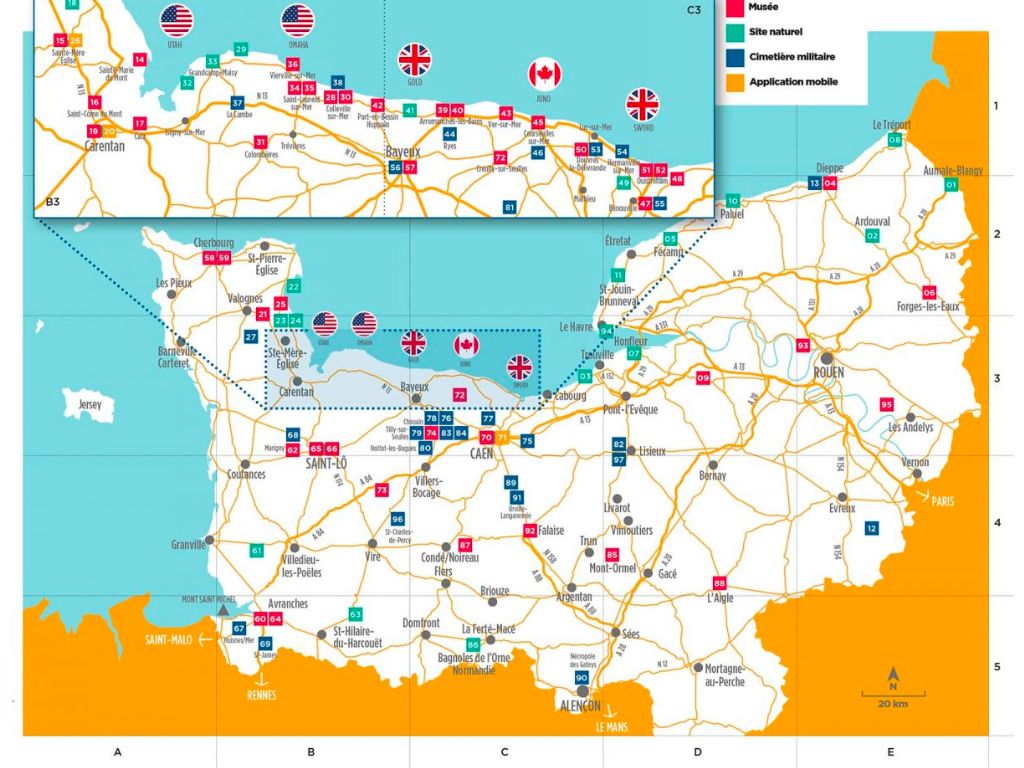
Each beach has its own unique history, and as you examine the map you’ll gain a deeper understanding of the scale and scope of this historic operation.
To look at a Normandy Beach map is not just a lesson in geography; it’s a lesson in understanding what happened on June 6, 1944. Looking at the map, you can imagine the struggles, triumphs, and heart-wrenching losses suffered on the sand.
Whether you’re zooming in for a closer look at each beach’s remaining craters, or as you stand in person on the hillside above a neverending sea of white headstones, you’ll come away with a sense of gratitude, awe, and respect for those who gave their lives on the beaches of Normandy.
Tips and Tricks for Visiting the Normandy Beaches:
- Hire a Context Tour Guide, with Private Car Service: A knowledgeable local historian can offer unique insights into each landmark’s significance to WWII and provide you with a more personalized experience. Additionally, while it is possible to visit the beaches using public transportation, it's much more convenient to rent a car and book a tour. This will give you more flexibility to explore the area at your own pace.
- Dress appropriately: Wear comfortable clothes and shoes for walking, and bring a jacket in case it gets cold or rainy. Because you will be along the coastline, wind gusts can be an important factor when planning your wardrobe.
- Pack snacks and water bottles: Weather conditions can be brutal, especially during the summer. While most museums do offer concessions, it’s important to be prepared with adequate water and snacks to keep yourself comfortable throughout the day.
- Consider visiting early or late in the day: To avoid crowds, it's best to visit the beaches early in the morning or later in the afternoon.
- Allow plenty of time: Plan to spend a full day or more exploring the Normandy beaches. There is a lot to see and learn, and rushing through the sites won't do them justice. You’ll also want to consider the seasonal tides so that you can safely walk along the beaches.
- Respect the sites: The D-Day beaches and surrounding areas are sacred places. Show respect by not littering, staying on designated paths, and not disturbing any artifacts.
- Take a moment for reflection: The D-Day beaches are solemn places that hold somber historical significance. Take a moment to reflect on the sacrifices made by the thousands of brave souls who fought and died there.

Tour the D-Day Beaches
Enhance your Normandy experience with a guided tour of the D-Day Beaches with a local expert. Our Full-Day D-Day and Normandy Beaches Tour has exclusive insights into World War II history to ensure you leave Normandy with a complete understanding and appreciation for its pivotal role in the war.
If you’re looking for other opportunities to learn more about Normandy, take our Full-Day Mont-Saint-Michel Tour and see this gravity-defying medieval monastery with an expert guide.
Learn more about the Normandy Beaches with Context Learning
Are you planning a trip to France? Check out Context’s Upcoming Online Seminars and Courses about France – which feature local experts in WWII History, Archaeology, and Art History.
Or, stream French History and Culture content instantly through Context On-Demand – hosted by the same local experts who lead our tours.
You May Also Like:
- Exploring the Coast of Normandy: Top Sites for History Lovers
- Timeline of the Normandy Invasion
- Reflections on the 75th Anniversary of D-Day
- 10 Best Day Trips from Paris
- Vive la France: Bastille Day
- How to Spend 36 Hours in Paris
Read More Stories

Even More from Context
Subscribe to our Newsletter
Keep Exploring

Explore Tours
Join walking tours with top experts all over the globe.
Browse Our Cities
- Our Experts
- Working with Context
- View All Cities
- Sustainable Tourism
- Refer a Friend for $50
- Travel Updates
- Advisor Login
- Expert Portal
- Privacy Statement & Security
- Cancellation Policy
Normandy Travel Guide
Courtesy of © Marco Bottigelli | Getty Images

18 Best Things To Do in Normandy
Updated Feb. 11, 2021
Normandy's attractions are spread across the region, so we suggest you either spend a few days in just one or two towns or you set aside a week or two, rent a car and see a cache. If you're a foodie, you'll enjoy the bounty in Trouville and Honfleur
- All Things To Do

D-Day Beaches D-Day Beaches free
World War II's successful Operation Overlord took place on the coast of France. Although there were heavy Allied casualties, this invasion turned the tide in the war and helped lead to the fall of Nazi Germany. Today this piece of coastline, which includes Sword, Juno, Gold, Omaha and Utah beaches, is collectively known as the D-Day Beaches.
Visitors can tour the approximately 50-mile stretch of sand and pop by a number of museums, memorials and cemeteries that are spread out alongside the coastline either with a tour or on their own. If you're driving yourself, start in the town of Arromanches, which hosts two museums that help provide context for the battle sites. The American Cemetery in Colleville-sur-Mer and the Pointe-du-Hoc bomb craters are also especially moving. If you'd rather let someone else do the driving, recent visitors recommend going with a tour guide to fully appreciate the area's historic importance and receive a comprehensive overview. If you're visiting in June, you'll likely come across several ceremonies and reenactment groups commemorating the anniversary. Thanks to Normandy's unpredictable weather, you'll want to dress in layers (no matter the time of your visit) and bring rain gear, according to past visitors.

Mont Saint-Michel Abbey (Abbaye du Mont-Saint-Michel) Mont Saint-Michel Abbey (Abbaye du Mont-Saint-Michel)
Surrounded by sea in the high tide and sand in low, Abbaye du Mont-Saint-Michel is one of France's most-toured sites outside of the popular Parisian landmarks. It's also a UNESCO World Heritage Site. Its first incarnation was raised on the 264-foot-high rock beginning in the 10th century, but additions were added well into the 19th century. Today, you can tour the abbey and the little village at its base, as well as several museums. Tours are offered year-round, but you can also traipse the massive structure on your own.
Guided tours – which are included in the cost of admission – do not require advance booking and are offered in French and English year-round. Tours are also offered in German, Italian and Spanish in July and August.

Cathedrale Notre-Dame de Rouen Cathedrale Notre-Dame de Rouen free
Dating back to the 12th century, this Gothic cathedral was the world's tallest building for about five years – 1876 to 1880. But its beauty in changing light is what drew the impressionist artist, Claude Monet, whose work can be viewed at the Musee des Beaux-Arts de Rouen , to paint it several times. Today, the cathedral is one of the defining pieces of architecture in this part of Normandy. Aside from its striking architecture, it's also famous for its tombs – one of which houses the heart of Richard the Lionheart.
Visitors recommend going inside to view the many parts of this working Roman Catholic cathedral, including the lovely stained glass in the Lady Chapel, the transepts and the ambulatory monuments. Others add that it is worth coming at night in the summer to see the free light shows displayed outside. Reviewers also recommended reading up on the history of the church before you visit to enhance your experience and develop a better understanding of the many architectural styles on display.

Popular Tours

D-Day Beaches Shore Excursion with Packed Lunch from Le Havre
(50 reviews)
from $ 207.54

Normandy American D-Day Beaches Full Day Tour from Bayeux
(1061 reviews)
from $ 138.69

Normandy Battlefields D-Day Private Trip with VIP Services from Paris
(137 reviews)
from $ 832.13

Normandy American Cemetery and Memorial Normandy American Cemetery and Memorial free
Somewhere around 9,000 soldiers are buried in this Colleville-sur-Mer war cemetery, which overlooks Omaha Beach . Most of these lost their lives during the D-Day invasion. There's also a memorial that gives a narrative of the invasion, as well as a reflecting pool and a chapel. And about 1,500 soldiers who were missing-in-action are remembered on the Walls of the Missing, in a semicircle garden to the east of the memorial.
Recent visitors advised setting aside more time than you think you might need, as there is a lot to take in and you don't want to rush through such a moving place. Several others recommended visiting with a tour company to enjoy a more in-depth understanding of the site's significance. Companies like Normandy Sightseeing Tours , Bayeux Shuttle and Paris City Vision earn high praise from past visitors.

Musée des Beaux-Arts de Rouen Musée des Beaux-Arts de Rouen
The sprawling Museum of Fine Arts features paintings, sculptures, drawings and objets d'art that date back to the 15th century. Throughout the 19th century, generous donations made the museum home to one of the largest impressionist collections in France, with paintings by masters such as Monet, Sisley, Caillebotte, Pissarro, Degas and Renoir. Other highlights include works by Perugino, Veronese, Rubens, Caravaggio, Velázquez, Ribera and Poussin.
Recent visitors praised the museum's collection of impressionist works and the impressive range of styles represented here. For many, viewing Monet's paintings of the Cathedrale Notre-Dame de Rouen was a particular highlight. However, reviewers advised going in with a plan, as the museum can be a little hard to navigate.

Claude Monet's House and Garden Claude Monet's House and Garden
Who doesn't love water lilies, haystacks and gardens? Claude Monet, one of the world's most famous impressionists, lived and painted many of these subjects in his home in Giverny. Today, Monet fans can tour his excellently preserved home, studio and gardens. Among the highlights are the water garden (home to his famous water lilies) and the artist's house (especially the kitchen and the blue sitting room), which has been meticulously restored.
Recent visitors raved about the house and gardens, but many expressed disappointment with the crowds. If you want to avoid the onslaught of visitors, heed the advice of reviewers and visit right when the attraction opens to avoid the tour buses that descend in the afternoon. Others suggested visiting the lily ponds first and saving your house visit until the end.

Bayeux War Cemetery Bayeux War Cemetery free
The Bayeux War Cemetery is one of the largest of 18 military cemeteries in Normandy, with more than 4,000 graves – many of which mark the plots of soldiers who were never identified. These headstones are inscribed with "A Soldier Known Unto God." Keep in mind that if you're an American looking for your ancestors, you'll most likely have more luck at the American cemetery in Colleville-sur-Mer . The Bayeux War Cemetery contains soldiers from the United Kingdom and "the Continent," including some from Germany.
Recent visitors found the cemetery to be quite moving and somber. Others said this is a "must-see," applauding the beautiful grounds.

Eglise Jeanne d'Arc Eglise Jeanne d'Arc free
This modern-looking church sits on the site of Jeanne d'Arc's (or Joan of Arc, to us Yanks) burning. The 19-year-old girl was burned at the stake for heresy in 1431. Today, you can tour this contemporary church built in 1979 (the exterior of which is reminiscent of fish scales) at Place du Vieux-Marche in Rouen. Pay attention to the building's design – the architect, Louis Arretche, wanted it to resemble the shape of an overturned boat.
Recent visitors loved the church's gorgeous stained-glass windows and say it was quite moving to be in the spot where Joan of Arc was killed.

All-in-One Paris Highlights Shore Excursion from Le Havre Port
(31 reviews)
from $ 125.43

American D-Day Beaches Private Tour Full Day Tour from Bayeux
(325 reviews)
from $ 366.14

Utah & Omaha Beaches D-Day Group Tour from Bayeux
(1185 reviews)
from $ 158.66

Etretat Cliffs Etretat Cliffs free
These stunning white chalk cliffs have drawn people, especially artists, such as Claude Monet and Guy de Maupassant, to the area for eons. The cliffs are often compared to the famous White Cliffs of Dover. Visitors can hike along the top of cliffs, as well as on the beach to check out the striking sight.
Recent visitors were astonished at the beauty of the cliffs and recommended visiting at sunrise and sunset for spectacular photo ops. Others suggested hiking to the top of the cliffs for unforgettable views. Reviewers also reported touring the town of Étretat.

Museum of Modern Art André Malraux Museum of Modern Art André Malraux
This Le Havre art museum, located in a bright 1960s glass-and-metal building, boasts enormous plate glass windows that perfectly allow in the famous light that has fascinated artists for decades. This museum was actually the first to be built after the war. Le Havre's original Museum of Fine Arts was destroyed by bombing in 1944. Two local painters who immortalized the Normandy coast are highlighted here. The collection of works by Raoul Dufy includes oils, watercolors and sketches. Works by Eugène Boudin include his Normandy beach scenes and landscapes. It also has a number of works by Renoir, Pissarro, Sisley and Degas.
Past visitors raved about the museum's stunning coastal location and the collection of impressionist works. Others praised the friendly, knowledgeable staff.

Bayeux Tapestry Museum Bayeux Tapestry Museum
You might ask why on earth would you make a stop to see a tapestry when Camembert cheese, hard cider and the rolling Normandy hills are beckoning? Well, because the Bayeux Tapestry, an astonishingly long and beautifully made work of art, chronicles the 1066 Battle of Hastings.
The approximately 230-foot-long tapestry is displayed in a dark room with special lighting, so you can see every detail. Though it's described as a tapestry, it is actually linen cloth embroidered with wool thread. In another room of the museum, a permanent exhibition describes how it was made and gives an overview of the historical context and the Anglo-Norman kingdom in the 11th century. There is also a short 16-minute film, which details the making of the tapestry and includes reconstructions of scenes from the Battle of Hastings.

Mémorial de Caen Mémorial de Caen
This museum details events leading up to WWII as well as its decadeslong aftermath, with exhibits ranging from photos and documents charting the Nazi's rise to power in the 1930s, to life before and after the fall of the Berlin Wall. A tabletop map shows the location of the D-Day landings and a split-screen presentation of the D-Day invasion from both the Allied and Nazi standpoints gives a good overview. A 17-minute film, called "Europe Our History," is shown in a 360-degree theater and included with admission. Outside, you'll find three gardens dedicated to the memory of the Resistance fighters and Allied soldiers who died in Normandy.
Recent visitors appreciated the comprehensive and educational way the museum covers the war. Others said a visit here is a must before a trip to the D-Day Beaches as it provides important context to the sites. Reviewers said you should plan to spend half a day here to make the most of the museum's offerings and that the audio guide is essential. One particular highlight for travelers was the reconstructed underground bunker of a Nazi general.

Musée du Débarquement Musée du Débarquement
The Musée du Débarquement, located on the seafront where one of the most incredible achievements of WWII happened, shows how the prefabricated Mulberry Harbour was constructed. An engineering feat, the harbors were used to unload troops, vehicles and supplies during the Allied invasion of Normandy in June 1944. While not much is left of the floating harbors, you can still see some remnants of the concrete blocks that were towed across the English Channel. Museum exhibits include models, mock-ups, and photographs depicting its creation and the D-Day landings.
Recent visitors praised the small museum's models and explanations of how the harbor was conceived. However, some said its exhibits are a little dated.

From Le Havre: Paris Seine River Cruise and Highlights Shore Trip
(9 reviews)
from $ 176.41

Versailles Palace and Giverny Private Guided Tour from Paris
(42 reviews)
from $ 721.18

Paris On Your Own from Le Havre Port: Round Trip Bus Transfer
(17 reviews)
from $ 93.81

Palais Bénédictine Palais Bénédictine
Bénédictine liqueur is a big deal in Normandy and if you want to learn more about it, as well as take in the Palais Bénédictine – a Gothic- and Renaissance-inspired building erected in the late 1800s – this is the spot. Le Palais Bénédictine was built in honor of the Bénédictine liqueur by Alexandre Le Grand, a wine merchant from Fécamp who discovered a lost recipe for a potent elixir dating back to 1510 created by a Bénédictine monk. Le Grand named the liqueur after the monks. He also stocked the palace with his art collection.
Today, visitors can explore the museum on a guided tour, which features collections of sacred and ancient art related to the legacy of Bénédictine, as well as a room dedicated to its industrial history. After the museum tour, you head to the only Bénédictine distillery in the world and enjoy a tasting of the liqueur in the palace's Winter Garden.

Chateau Gaillard Chateau Gaillard
This castle fortress was amazingly built in a mere two years, between 1196 and 1198, at the direction of Richard the Lionheart, King of England and the Duke of Normandy to protect Rouen against the French. It was captured by Philip II after a six-month siege; Henry IV later ordered that it be destroyed. Today, its clifftop ruins are a reminder of its dramatic past and a fascinating place to visit.
Recent visitors were fascinated by the complex history of the fortress. Others raved about the views and recommend bringing a picnic to enjoy on the grounds. According to recent travelers, there is a large free parking lot within walking distance.

Historial Jeanne d’Arc Historial Jeanne d’Arc
Read More »

Cité de la Mer Cité de la Mer

Airborne Museum Airborne Museum

Paris Deluxe Shore Excursion from Le Havre Cruise Port
(4 reviews)
from $ 76.56

D-Day Omaha Beach Morning or Afternoon Group Tour from Bayeux
(789 reviews)
from $ 91.53

Giverny Monet House and Gardens Skip the line Walking tour
(139 reviews)
from $ 61.02
Explore More of Normandy
Best Hotels

When To Visit
If you make a purchase from our site, we may earn a commission. This does not affect the quality or independence of our editorial content.
Recommended
The 28 Best Water Parks in the U.S. for 2024
Holly Johnson|Timothy J. Forster May 8, 2024

The 18 Best Napa Valley Wineries to Visit in 2024
Lyn Mettler|Sharael Kolberg April 23, 2024

The 25 Best Beaches on the East Coast for 2024
Timothy J. Forster|Sharael Kolberg April 19, 2024

The 50 Best Hotels in the USA 2024
Christina Maggitas February 6, 2024

The 32 Most Famous Landmarks in the World
Gwen Pratesi|Timothy J. Forster February 1, 2024

9 Top All-Inclusive Resorts in Florida for 2024
Gwen Pratesi|Amanda Norcross January 5, 2024

24 Top All-Inclusive Resorts in the U.S. for 2024
Erin Evans January 4, 2024

26 Top Adults-Only All-Inclusive Resorts for 2024
Zach Watson December 28, 2023

Solo Vacations: The 36 Best Places to Travel Alone in 2024
Lyn Mettler|Erin Vasta December 22, 2023

26 Cheap Beach Vacations for Travelers on a Budget
Kyle McCarthy|Sharael Kolberg December 4, 2023

Beyond the D-Day Beaches: Normandy’s essential WWII sights
Jun 4, 2019 • 6 min read
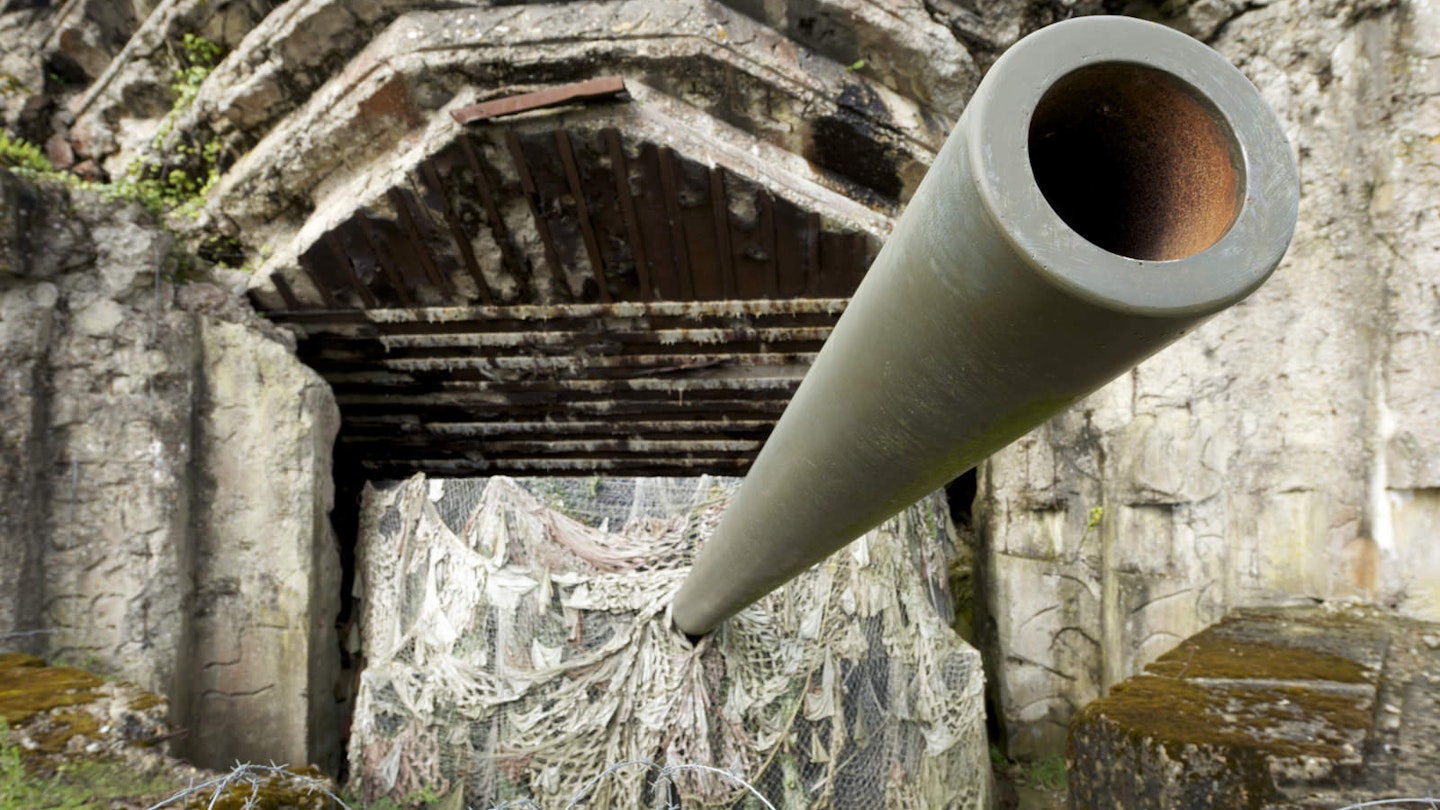
The Longues-sur-Mer Battery is just one of the German artillery pieces still aiming out to sea © pedrosala / Shutterstock
The largest seaborne invasion ever seen was launched from choppy waters onto the wind-whipped shores of German-held Normandy in the early hours of 6 June 1944. With the 75 th anniversary of D-Day being marked in France this week, and commemorative events and exhibitions lined up throughout the year, there has never been a more insightful time to visit.
This road trip encompasses the standout sights that witnessed the most ferocious and courageous fighting, commemorated today by poignant monuments.
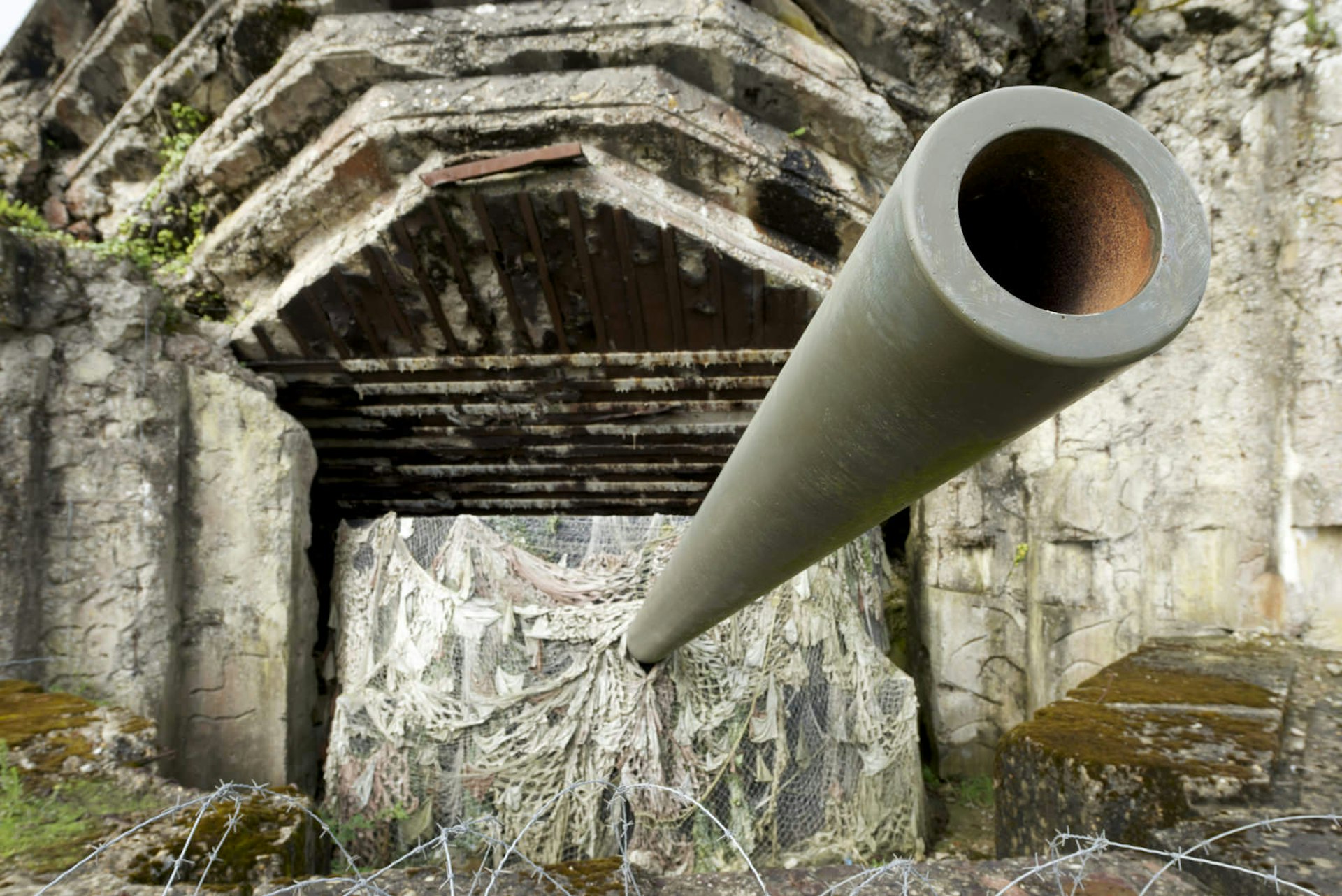
Unleashed with watertight secrecy, Operation Neptune (D-Day) initially gained a tenuous toehold on French soil, before two million Allied troops found themselves in France by August 1944. Heavily devastated during the Battle of Normandy , the handsome – and often stunning – city of Caen is your starting point, especially the thought-provoking Le Mémorial de Caen with its detailed overview of how WWII shattered this French region. Don’t miss the gripping film or the haunting footage of the Nuremberg trials and wander the austere 70m-length of General Richter's Underground Bunker , on-site.
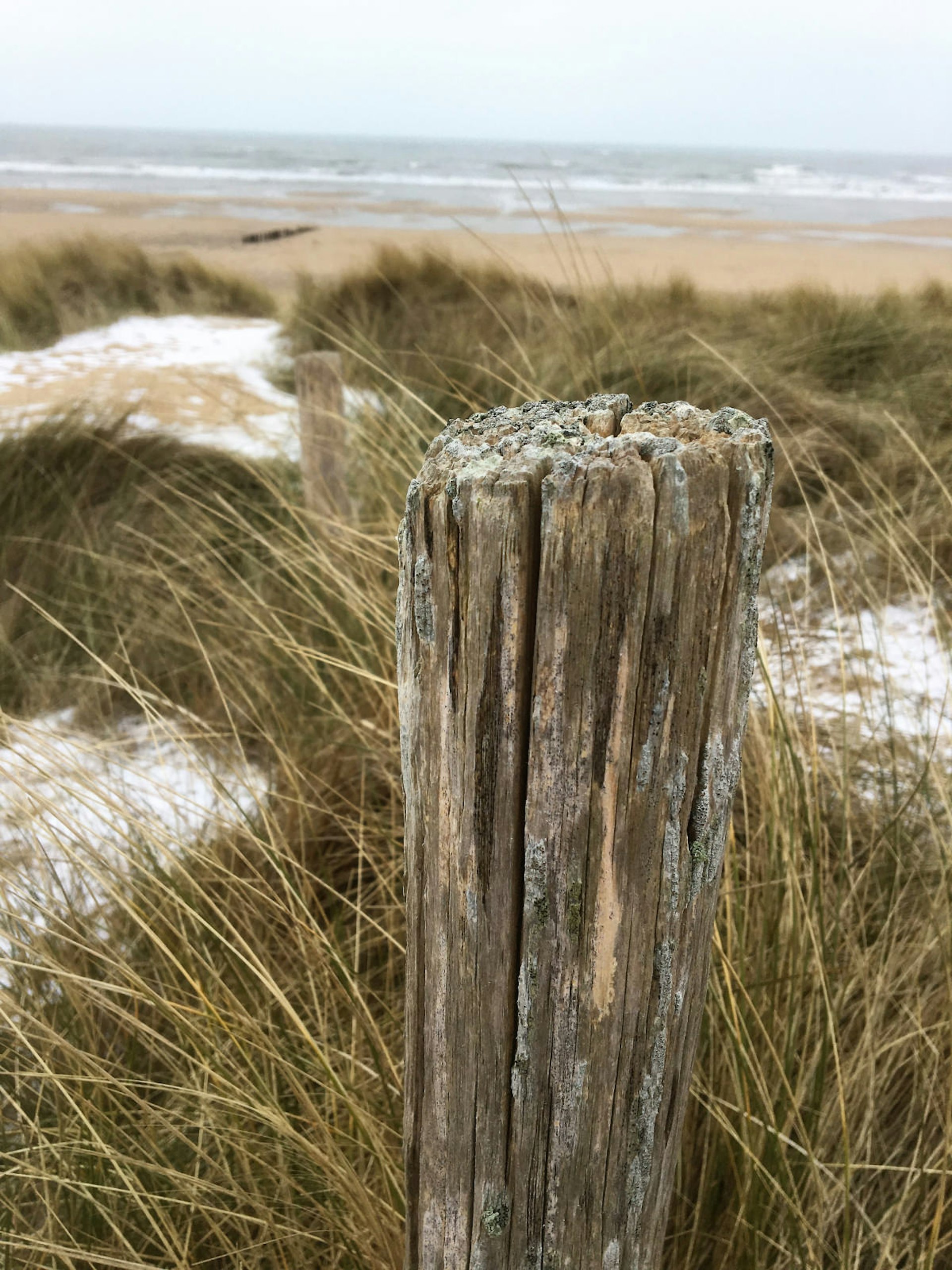
From Caen, drive along the D79 to Juno Beach at Courseulles-sur-Mer to explore today’s tranquil sand dunes, stormed by the Canadian Army on D-Day; the on-site Juno Beach Centre commemorates Canada’s costly, bloody sacrifice. A summer visit ties you in with one of the centre’s guided beach tours, which also accesses the German bunker here. En route to Juno Beach, ponder a detour to the 1944 Radar Museum in Douvres-la-Délivrande to gauge the role the technology played in WWII while perusing a Würzburg radar antenna at one of Germany’s key radar stations in Normandy.
Arromanches-les-Bains and Mulberry Harbours
Head west along the D514 past Gold Beach – attacked by the British 50 th Infantry on D-Day – to Arromanches-les-Bains, site of perhaps the most ambitious logistical feat of the attack. Set to reopen for the 75 th anniversary in 2019, the Musée du Débarquement details how the artificial Mulberry Harbours (temporary ports for the offloading of cargo crucial to the invasion) were engineered. The film in the Arromanches 360° Circular Cinema is a highly informative introduction to this crucial endeavour. Try to visit at low tide, when the vestiges of the Mulberry Harbours are visible above the water line.
Longues-sur-Mer Battery
From Arromanches-les-Bains, continue along the D514 to Longues-sur-Mer, where a formidable battery of vast 150mm German artillery pieces still aim out to sea, part of Germany’s formidable Atlantic Wall coastal defences. Take time to examine the gun emplacements (the first casemate is fenced off as it was damaged, but the others are accessible).
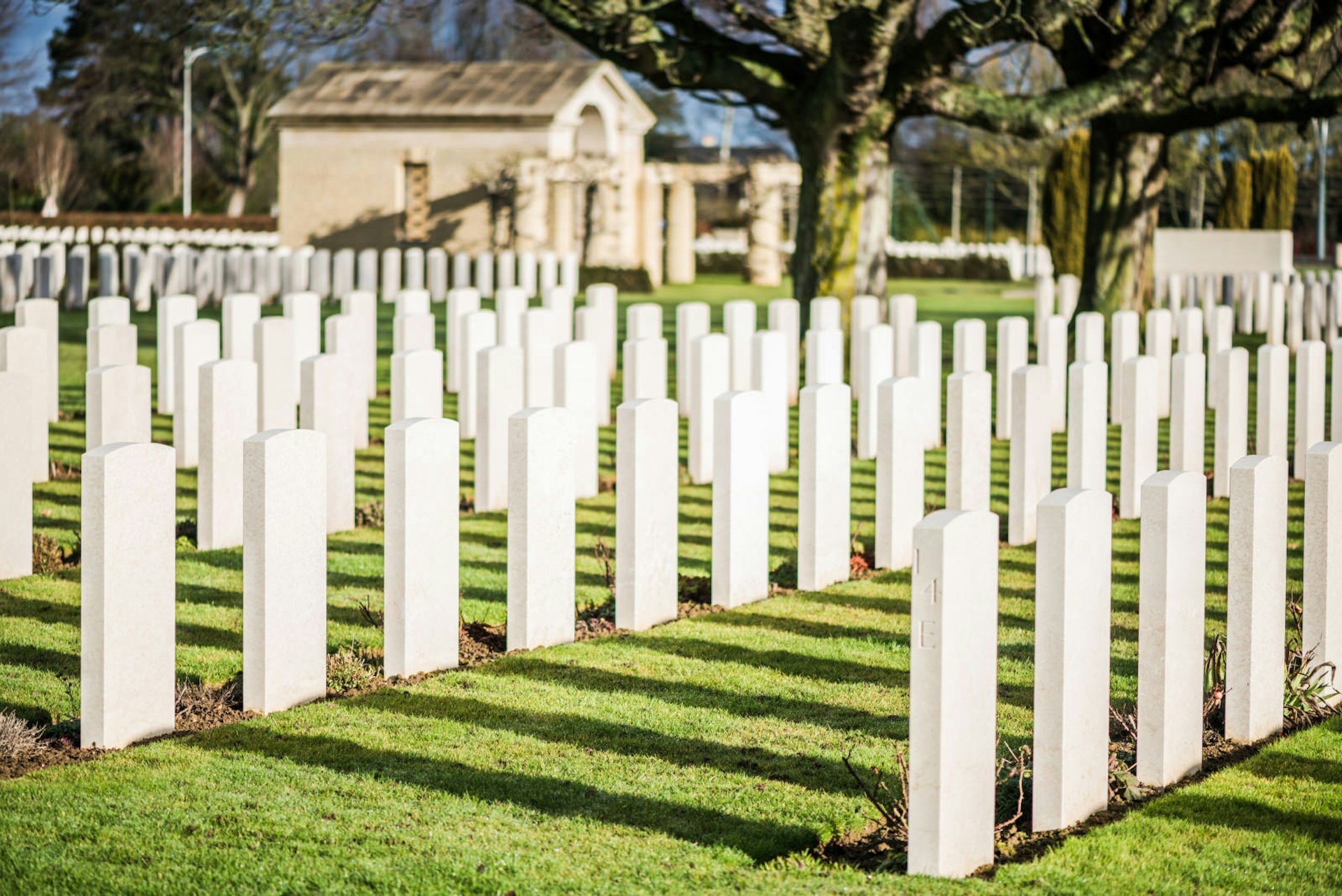
Drive south along the D104 from Longues-sur-Mer towards Bayeux ; at the intersection with the D613 on the outskirts of town, turn right and follow the signs for the informative Musée de la Bataille de Normandie and the Bayeux War Cemetery , the largest of the Normandy Commonwealth cemeteries, where 4,848 soldiers from the UK and ten other nations are interred. On the other side of the road stands a memorial to 1,807 Commonwealth soldiers whose remains were never found. Bayeux may be most famed for its beautiful tapestry depicting the conquest of England by William the Conqueror in 1066, but the historic town was the first town to be liberated in the early hours of 7 June 1944.
Omaha Beach and the Normandy American Cemetery and Memorial
From Bayeux, drive north along the D6 to Port-en-Bessin, turn left onto the D514 to Colleville-sur-Mer and follow the signs to the superb Overlord Museum – chronicling the battle from the landings to the liberation of Paris – and then move onto the Normandy American Cemetery & Memorial . The most evocative D-Day sight on the Normandy coast, the endless white marble crosses and Stars of David at the cemetery are overwhelming. Almost 70 hectares in size, the huge plot is a transfixing testament to the slaughter that took place on Omaha Beach below. The final resting ground of almost 9400 Americans who lost their lives in WWII, the cemetery also sets the scene for the opening shots of the gut-wrenching WWII drama, Saving Private Ryan .
A substantial semi-circular colonnaded memorial focuses on a bronze statue: The Spirit of American Youth Rising from the Waves . Also interred on the grounds is a time capsule containing news reports of the D-Day landings, set beneath a granite slab inscribed with the instruction: ‘To be opened June 6 2044’. Don’t overlook the Visitor Centre , which retells the landings in dramatic fashion, while English-language tours explore the cemetery grounds at 2pm daily (and at 11am between mid-April and mid-September). On Omaha Beach, a few German bunkers survive, as well as some remains of Mulberry Harbour, visible at very low tide.
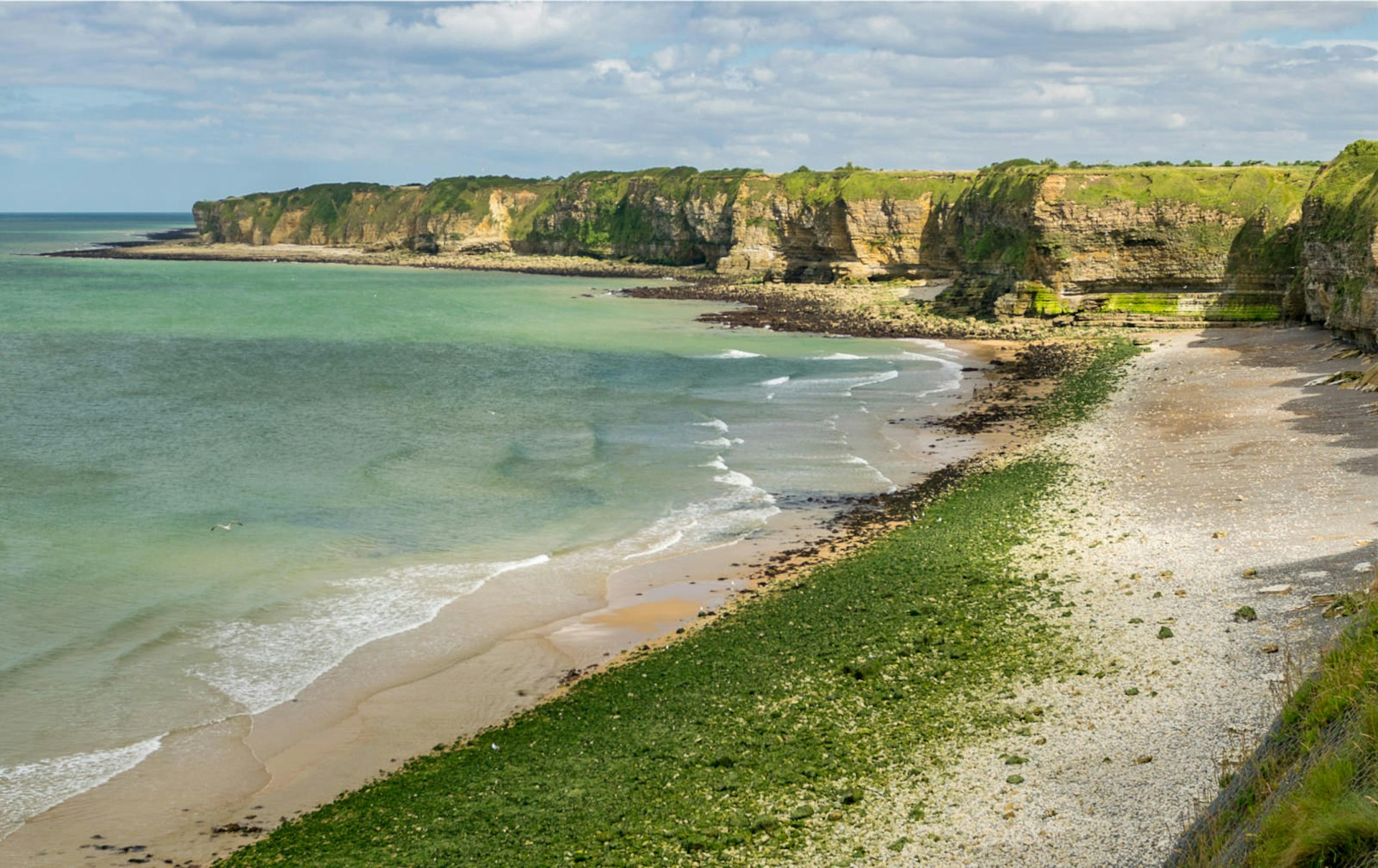
La Pointe du Hoc
Continue west along the D514 for 10km to this promontory , the highest point between Omaha Beach to the east and Utah Beach to the west, heavily fortified by the Germans with large 155mm artillery gun emplacements. The artillery pieces required disabling and La Pointe du Hoc was the scene of a daring assault in the early hours of 6 June 1944, when 225 US Army Rangers scaled the perilously steep 30m-high cliffs. After capturing the site, the soldiers discovered the guns had been moved inland, so set off to successfully find and disable them, while enduring enemy counterattacks. By the time the force was relieved on 8 June, only around 90 men had survived. The heroic attack is commemorated by battle-scarred concrete bunkers and casemates and a dagger-shaped memorial; an informative visitor centre is also at the site.
Continue west along the D514 to link up with the N13 and then head northeast along the D913 to conclude the drive at Utah Beach around 45km from La Pointe du Hoc. The most westerly D-Day landing site, this stretch of sand was taken by the US 4th Infantry Division, facing only light resistance, an amphibious assault chronicled in the absorbing Musée du Débarquement de Utah Beach .
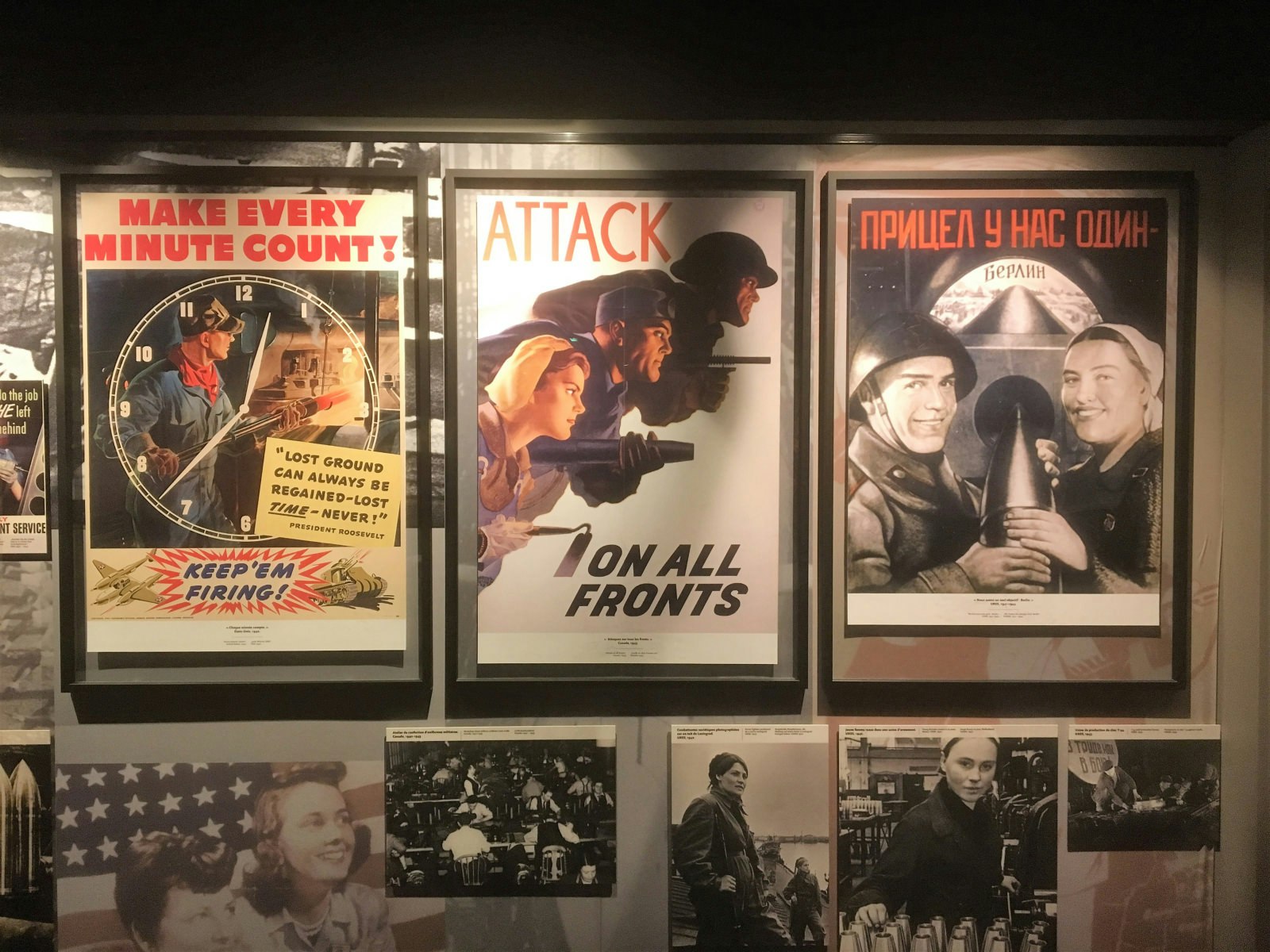
Visiting Normandy’s essential WWII sights by minibus
A host of minibus tours roam across Normandy to the D-Day sights, which can be an excellent way of lassoing in the crucial must-sees. Le Mémorial de Caen Runs excellent tours year-round, taking in many sights and includes a visit to the museum itself in Caen, while Normandy Sightseeing Tours is an efficient Bayeux-based outfit. Also check out our guide to the story of the D-Day beach landings .
Where to sleep
Château de la Ferrière is a fantastic 18 th century chateau, located in splendid grounds between Bayeux and the coast.
La Maison de Famille is a grand, historic and pleasant B&B in Caen.
Where to eat
L'Alchimie serves superbly presented modern French cuisine in Bayeux.
À Contre Sens offers vibrantly creative French dishes in a stylish setting in Caen.
This article was first published in August 2018. It was updated in June 2019.
https://shop.lonelyplanet.com/products/lonely-planets-best-in-travel-paperback-2019
Explore related stories
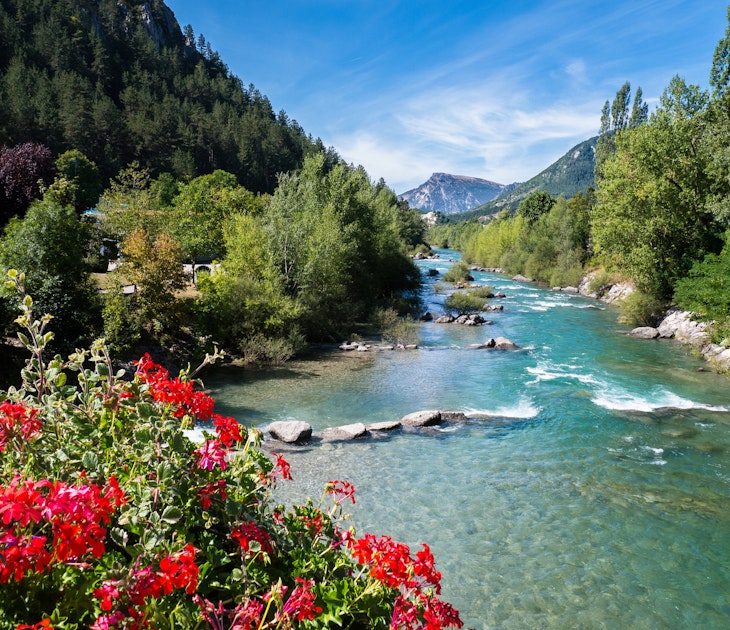
Jul 13, 2021 • 5 min read
This first-timer's guide to France can help you narrow down the best places to go, and other top tips to make the most of your visit.
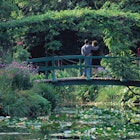
Apr 1, 2024 • 8 min read

Jan 5, 2024 • 20 min read

Jan 3, 2024 • 5 min read
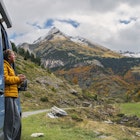
Dec 17, 2023 • 6 min read

Jun 27, 2023 • 9 min read
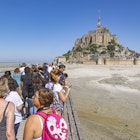
Jun 26, 2023 • 6 min read

May 19, 2023 • 12 min read

May 8, 2023 • 10 min read
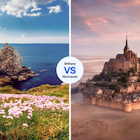
Apr 13, 2023 • 8 min read

How to Visit Normandy Beach & World War II Memorials
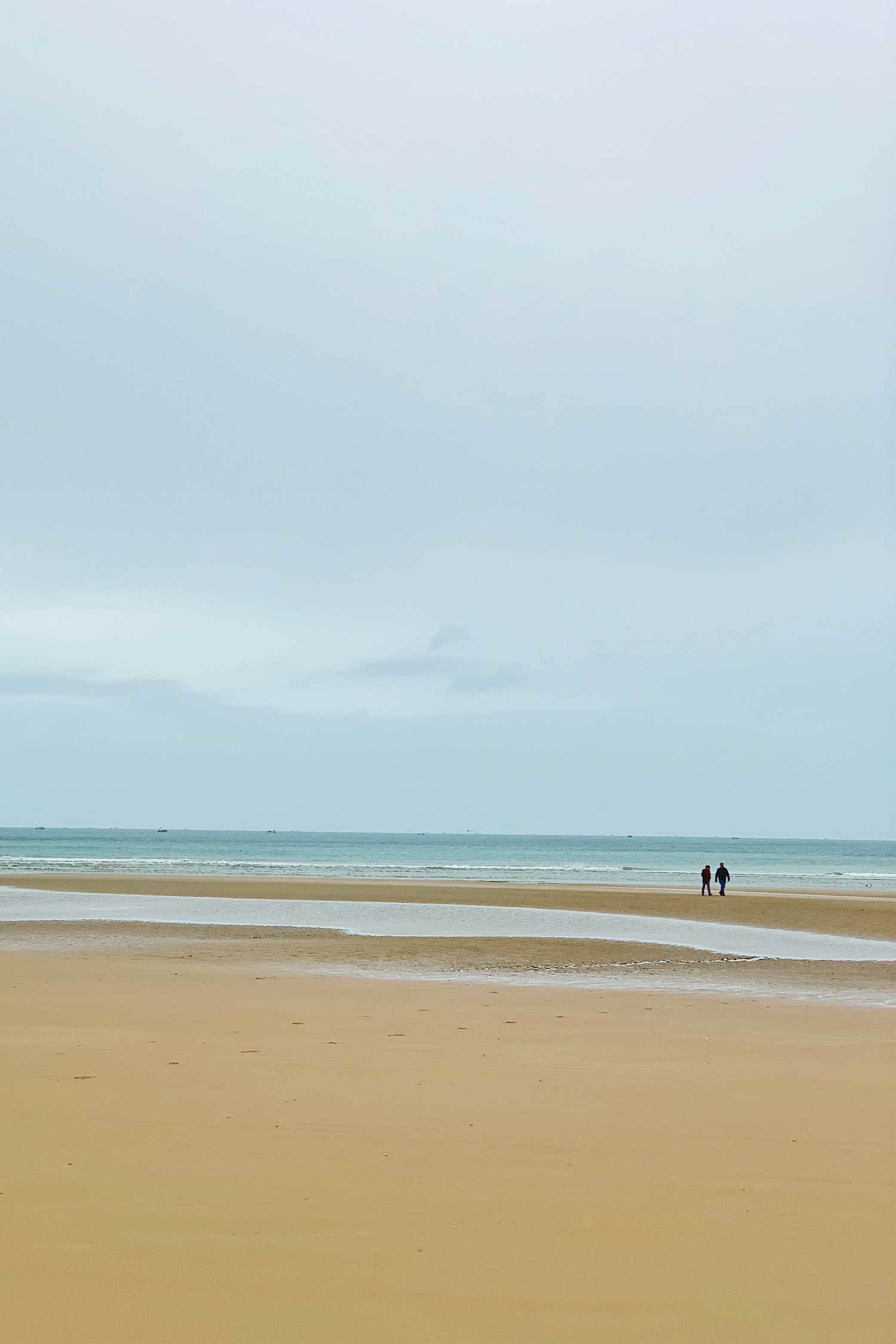
Normandy Beach
On our river cruise along the Seine, we took a detour to see the Normandy beaches.
This is the second time I’ve been to France’s northern region but I don’t quite remember any of the history from the first trip. I was a student at the time, and our school trip connected us to a French World War II war veteran who met us directly on the sandy beach of Omaha.
This time, I’m older and learned the history of D-Day in depth.
ADVERTISEMENT
As the landing beaches are a bit far from Rouen, where we’re staying the night, our tour guide uses the the 4 hour bus ride (2 there, 2 back), to recount the careful planning, hellish slaughter, entrenched fighting and ultimate resolution of Operation Overlord (the Allies code name for the invasion of Normandy).
It’s a sobering visit.
Before World War II, Omaha Beach was called La Plage de Sables D’or , the Beach of the Golden Sands. No one has called it that in years. Each Normandy beach retains its D-Day code name, in remembrance of the significance of the world’s largest amphibious invasion, which kick started the long campaign to liberate Europe .
Here’s a look at each of the five landing beaches and some tips for visiting Normandy’s World War II memorials.
Or save this article to read later by pinning it ⇟
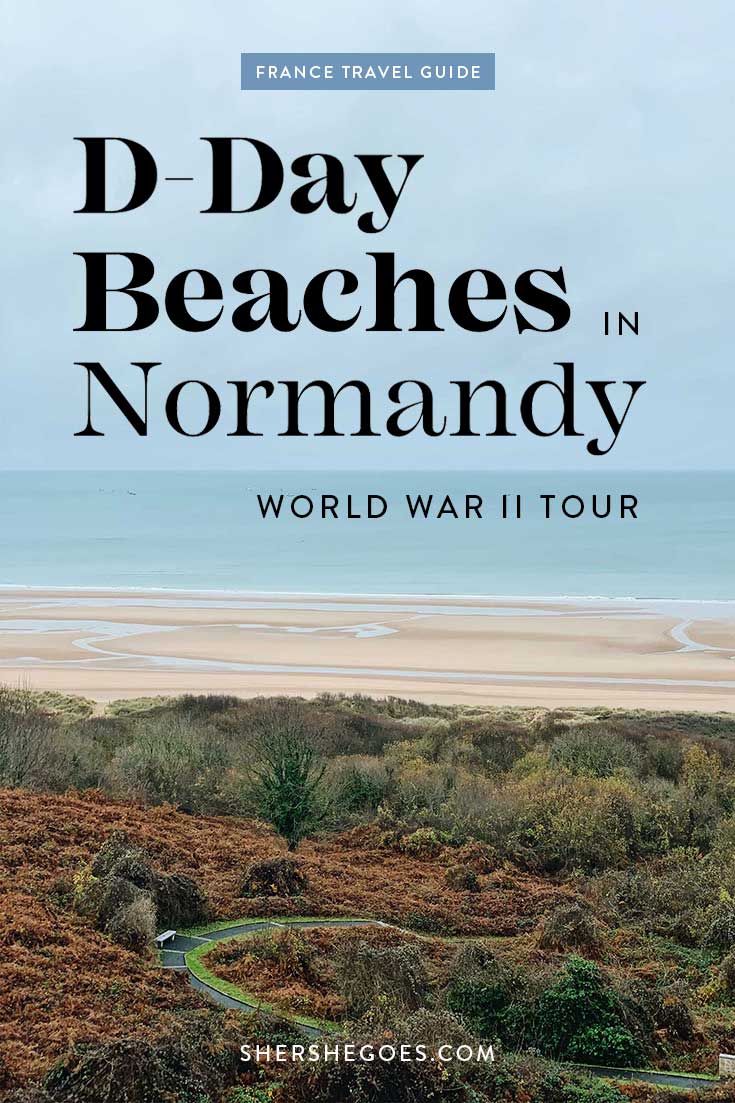
Why Did the Allies Land on the Beaches of Normandy?
After the massive British retreat at Dunkirk (immortalized in the film Dunkirk ), the Allies had temporarily withdrawn from Europe to regroup.
By the time the Americans joined the war effort, with Russia pressing on the eastern front, it was decided to begin planning an western invasion.
The gargantuan task of liberating Europe was code named Operation Overlord. D-Day would be the initial push, a massive amphibious landing to place the Allied forces in continental Europe and begin fighting for the liberation of France.
The invasion took significant planning, and began as early as 1943. Since Germany occupied or destroyed all of France’s main ports, the Allies had to strategically choose a landing site.
Pas de Calais, roughly 150 miles northeast of Normandy, was the most logical choice, as it was the closest point to England and the shortest distance from the British Channel.
Unfortunately, the Nazis recognized this and heavily fortified the area.
After careful consideration, the Allies chose Normandy to be the site of the landing beaches. To disguise their efforts, they undertook an elaborate ruse to trick the Nazis into concentrating at Pas de Calais and keep them off guard.
However, the Germans did not leave Normandy entirely undefended. Hitler put one of his most competent generals, Erwin Rommel, in charge of defending the French coast.

American General Dwight Eisenhower was put in charge of planning for Operation Overlord, with British General Bernard Montgomery to take over once the landings were successful.
The task was daunting, as General Rommel had prepared by ordering Nazi troops to turn Normandy’s coastline into a death trap: beach obstacles, land mines, artillery batteries and barbed wire were all laid across the countryside.
For D-Day, the Allies divided the 60 mile coastline into five sectors, code named from west to east: Utah, Omaha, Gold, Juno and Sword. The Americans were to land primarily on the western fronts at Utah and Omaha, while the British were tasked with capturing the eastern beaches, Gold and Sword. The Canadian forces were to lead at Juno.
In addition to the amphibious landings, an extensive aerial bombardment was planned. In total, roughly 160,000 troops landed on the Normandy Beaches on June 6, 1944 and 11,000 planes and 4,000 ships were used in the attack.
While today D-Day is considered a great success in the greater context of World War II, the day itself was a mixed bag. Some beaches were captured relatively easily while others were entrenched in long, bloody battles with devastating casualties.
The Allied goal was to secure all five beaches and link its forces together by the end of the day. While each force secured their respective beaches, heavy German resistance delayed a unification until June 12th.

Visiting the D-Day Beaches
The D Day beaches are spread out throughout Normandy’s coastline and can be seen in a day in one comprehensive tour. There are over 20 important monuments, museums and military remnants in the region, but perhaps the most visited site is Omaha Beach, as it was here that the fighting was the bloodiest.
The Americans were assigned to Omaha Beach and today, the Normandy American cemetery overlooks the beachfront, with a haunting memorial, visitor’s center and excellent museum.
For those planning to visit, it’s a great idea to book a local tour, as they can give you a much more comprehensive overview of the military planning, battles, and key events that occurred. Normandy is notoriously rainy all year round, so pack layers, a weatherproof jacket and umbrella .
If you’re visiting in June, Normandy marks the remembrance of D-Day with a number of ceremonies and reenactment groups. The French people in Calvados remember the significance of D-Day and always celebrate the anniversary of France’s liberation.
Hotels in Normandy Near the D Day Beaches
Most visitors choose to base themselves in either Caen or Bayeux, the two closest French villages to the Normandy beaches.
Caen , a large city in the department of Manche, is roughly 10 miles from the coastline. The modern city has lots of hotels, shops and restaurants and plenty of car rental agencies for visitors who wish to drive around. Find hotel deals for Caen here .
Bayeux is smaller and more historic, as it was spared bombing during WWII. Most D Day tours pick up from Bayeux so this village makes a great base for those who wish to take advantage of a guided tour. Find hotel deals for Bayeux here .
Both Bayeux and Caen have train stations with connections to Paris. But Normandy has plenty of other villages, some even prettier, that are closer to the D-Day beaches. These include:
Ouistreham-Riva-Bella : This resort town lies closest to Sword Beach and has a ferry with connection to Portsmouth. The assault on Ouistreham was immortalized in the movie The Longest Day.
Arromanches-les-Bains : Near Gold Beach, this is where the Allies built portable Mulberry harbors. Since the Nazi powers controlled or destroyed all of France’s harbors, the Allies needed to construct their own ports from scratch, as quickly as possible. The town here is quaint and has a charming museum explaining all about the famous Mulberry harbours.
Sainte-Mère-Église : Inland of Utah Beach on the west, this town played a significant role in the Normandy landings as it stood in the middle of route N13, the main road to Utah and Omaha beaches. American paratroopers landed early on D-Day before the seaborne invasion, to heavy casualties.
For more travel tips about visiting the landing beaches, check out our travel guide covering transportation from Paris to Normandy here .
Getting Around
Unfortunately, public transportation in Normandy is limited.
Renting a car offers the most flexibility and can be pretty inexpensive for families and groups. American drivers licenses are accepted and you can easily find car rental shops in the cities of Rouen, Le Havre and Caen.
Taking a guided tour is a great option for those who don’t want to drive. Most tours cover the beaches, museums and cemeteries in a full day excursion, and include knowledgeable local guides. The most popular tour companies pick up and drop off from hotels in the town of Bayeux.
Finally, you can also take a river cruise. Normandy is where the Seine River begins and many river cruise companies offer trips from Paris to Normandy. We recently took a Viking cruise and loved it.
Should You Get A Guide?
We definitely recommend a guide. The D-Day beaches and memorial sites are spread out over a vast area, and many of the town roads are small and winding. Knowledgeable tour companies can cover more ground in a day (without getting lost!) and offer insightful history and local memories that really bring D-Day alive.
On the tour we took, we visited the floating harbor at Arromanche, the museum at Caen, the American cemetery and Omaha Beach.
Here are some popular D Day tours

D Day Beaches Map
Above is a map of the D Day beaches that illustrates the extensiveness of Operation Overlord.
Over 50 miles of Normandy coastline are marked with war memorials, old military bunkers and D-Day monuments. Two departments in Normandy, Calvados and Manche, experienced the brunt of the fighting, with hundreds of French village getting swept up in the fighting.
The 5 Beaches of D Day
The Allies divided Normandy’s coastline into 5 beaches. With over 50 miles of coastline to cover, it was a significant expanse of land! From west to east, the beaches are:
Omaha Beach
Sword beach.
First time visitors can start in Caen, at the Memorial Museum; at Arromanches, where temporary harbors were built in advance of the invasion; or at Bayeux, where the historic Bayeux Tapestry is housed.

The Landing Beaches
Today, the five beaches where the Allies landed are still referred to by their D-Day code names. Allied forces divided up the beaches by country, with predominantly British, Canadian and American forces leading the assault.
Below is a short overview of each beach and their respective WWII sights that you can visit today.
Utah lies on Normandy’s Cotentin Peninsula, and was the westernmost landing site of all five beaches. Allied commanders added Utah as a last minute addition, so that troops would be close to the port city of Cherbourg.
The night before D-Day, thousands of American paratroopers were dropped inland behind enemy lines, in an effort to capture the beach’s exit points and eliminate German defenses.
Unfortunately, strong winds dropped the paratroopers significantly off course and the region’s wet marshes made it difficult for the troops to make it to the beaches quickly. Many paratroopers got caught in tree branches and were picked off easily. One man’s parachute landed on the church steeple of Ste Mere Eglise village!
On D-Day, strong currents also swept the bulk of American troops off course. Luckily, they landed at a more lightly defended section of the beach and met little resistence, securing Utah Beach by the end of the day.
WWII memorial sights at Utah beach include:
- The Airborne Museum
- D-Day Experience Center
- Utah Beach Landing Museum
- Ste-Mère Eglise Village

Omaha Beach was the second landing site for American troops. Surrounded by steep cliffs and heavily fortified by an experienced Nazi division, Omaha saw more casualties than any other beach.
The Allies had planned aerial bombardments on each beach, to hit the German’s defenses and provide cover for sea invasion. Timing was of the utmost importance. Strike too early, and the Nazis would have time to regroup while cherry picking off the landing troops. Strike too late, and risk hitting their own forces.
Unfortunately, the aerial bombardments did little damage, the Allies underestimated the number of German forces, and the rough waves made it almost impossible for troops to land. Only 2 of the Allies’ 29 Sherman tanks reached the shore. Carnage was so severe that Omaha was nicknamed ‘Bloody Omaha’.
By the end of the day, the Americans suffered significant casualties but had carved out a tenuous hold roughly a mile and a half inland.
WWII memorial sights at Omaha beach include:
- Pointe du Hoc Ranger Monument
- The Normandy American Cemetery
- Overlord Museum
- Omaha Memorial Museum
- Longues-sur-Mer Gun Battery
- German Military Cemetery at La Cambe

The British were sent to Gold Beach, with objectives to capture Bayeux and the road connecting Bayeux and Caen, and the eventual aim of linking up to the Americans west at Omaha.
Here, aerial bombardments succeeded in softening the German defenses and strong British warships were able to successfully target the Nazi forces.
By the end of the day, the British had secured the beach, advanced 6 miles inland and joined the Canadian troops in the east who had landed at Juno Beach.
WWII memorial sights at Gold beach include:
- Ver-sur-Mer, Musée America-Gold Beach
- Arromanches

The Canadians were sent to secure Juno Beach and tasked with linking up to the British on both east and west, at Gold and Sword beaches, respectively.
The Germans had planted mines and beach obstacles into the sand along Normandy’s coast. For a brief period during low tide the defensive traps were exposed, but primarily they lay covered, hidden traps to delay any offensive approach.
On D-Day, the Canadians sent to Juno Beach were also hit hard by rough currents, which delayed the ships from landing. When they did land, the rising tide not only masked mines and booby traps, it also shortened the width of the beach and led to a build up of troops and incoming equipment. As a result, the Germans were easily able to pick off the first wave of infantry and Canadian casualties were high.
By the end of the day, after fierce fighting, the Canadians were able to penetrate 16km inland. They linked up with the British at Gold Beach but not those at Sword until later on in the invasion.
WWII memorial sights at Juno beach include:
- The Juno Beach Centre

While the American paratroopers were being dropped behind enemy lines in Utah, British airborne troops were being sent to the eastern flank, behind Sword beach’s German forces.
Here, the British succeeded in destroying bridges to cut off potential German reinforcements, captured Pegasus Bridge and also took out a Germany artillery battery.
By the morning of June 6th, the British sea invasion launched and again suffered losses due to rising tides, delayed landings and shortened beachfront. Eventually, the Allies were able to use Sherman tanks to secure the beach.
The primary objective however, was not met. Sword Beach was chosen for its proximity to the strategically important city of Caen, which was connected to several canals and rivers in Normandy.
German forces entrenched themselves in the city and the Battle for Caen began. The city was ultimately liberated on June 19th, but suffered heavy bombing and significant civilian casualties.
WWII memorial sights at Sword beach include:
- Musée du Mur de l’Atlantique Le Bunker
- Musée du No.4 Commando
- Merville Battery
Will you be visiting the Normandy beaches?
Visiting Normandy – Travel Checklist
We took a red eye to Paris from JFK, then sailed on the Seine to Rouen on a river cruise . You can check for flight deals here and set an alert for your dates.
It's also easy to take the train from Paris to cities throughout Normandy. Check my post here for more logistical information on taking the train in France and how not to buy tickets.
In Normandy, there's so much to see over a large area that I'd recommend basing yourself in a city for a couple nights to take day trips, then moving to another city. For the D Day beaches, Bayeux and Caen are both popular bases. Check here for deals on Normandy hotels .
Lastly, be sure to visit Paris with travel insurance . Whether you get injured and need to be hospitalized, your phone gets stolen, or a flight delay leaves you with nothing but the clothes on your back, travel insurance will help when you need it most.
During our recent trip, riots in Paris shut down the city center and forced a closure of all the main sights (the Louvre, Versailles, etc). Get a quote for your trip here .
You Might Also Enjoy:
Normandy Vacation Planning
How to Get from Paris to Normandy
Cruising on the Seine River from Paris to Rouen
The Most Beautiful Places in Normandy
21 of the Best Things to Do in Normandy
Normandy Towns
Quick Guide to Rouen , Normandy's Capital
Paris to Normandy Day Trips: Vernon & Auvers-sur-Oise
Visiting Giverny & Monet's House
Where to Stay in Giverny
WWII Memorials
How to See Normandy Beach & D-Day Sites
Visiting the Normandy Cemetery in Remembrance of D-Day
Follow me @Sher She Goes on
Youtube | Tiktok | Instagram
You may also enjoy:
What to wear in paris in spring & …, 9 beautiful places in the falklands to see …, an insider’s guide to the best …, the temple of dawn.
- Pingback: Sailing on the River Seine from Paris to Normandy
- Pingback: Best Things to Do in Normandy (D-Day Beaches, Medieval History & More!)
- Pingback: Exploring Rouen, France: Normandy's Medieval Jewel
- Pingback: Visiting Normandy Cemetery in Remembrance of D-Day
Will be taking Viking Cruise in 2020 that stops in Paris. Want to visit Normandy. Looking for the best way to visit and perhaps stay overnight.
Hi, just came here to say: the Russian front is the eastern front and D-Day is the Western Front. Great article otherwise
oops! thanks for the correction :)
Leave a Reply Cancel reply
La Basse Cour: B&B near Alencon, Normandy
Normandy d-day beaches self-drive tour, self-drive tour of normandy d-day beaches & museums, d-day normandy landing beaches tour, normandy beaches accommodation bayeux (zoom or drag for more), normandy d-day sites, d-day landing tour of normandy coast, 1. pegasus bridge, bénouville, normandy, 2. grand bunker, ouistreham, normandy, 3. german battery, merville-sur-mer, normandy, 4. canadian memorial centre, juno beach, normandy, 5-6. 360 o cinema and mulberry harbour museum, arromanches, normandy, 7. german gun battery, longues, normandy, 8. american cemetery, omaha beach, normandy, 9. point du hoc, normandy, 10. utah beach museum, sainte-marie-du-mont, normandy, 11. us airborne museum, ste mère eglise, normandy, 12. dead man's corner, ste côme du mont, 13. german cemetery, la cambe, normandy, 14. british cemetery and battle of normandy museum, bayeux, normandy, 15. caen memorial, normandy, 16. canadian military cemetery, cintheaux, bretteville-sur-laize, normandy, 17. falaise pocket, montormel - coudehard, normandy.
Back to top
A brief description of the D-Day Landings
The french resistance, airborne landings, sword beach, omaha beach, pointe du hoc.
latest in US News

Rudy Giuliani served with Arizona ‘fake electors’ indictment...

North Carolina woman on way to visit sister killed when hooligan...

Trump demands drug test for Biden before first presidential...

Florida boater, 78, suspected in fatal hit-and-run of teen...

UMass Dartmouth grads surprised with $1,000 from billionaire...

Human arm washes up 50 miles from where Milwaukee student Sade...

IRS whistleblowers ask judge to dismiss Hunter Biden’s lawsuit...

Mom pounces on Peeping Tom who filmed her in mall dressing room
Breaking news, rudy giuliani served with arizona ‘fake electors’ indictment during 80th birthday bash in palm beach.
- View Author Archive
- Email the Author
- Follow on Twitter
- Get author RSS feed
Contact The Author
Thanks for contacting us. We've received your submission.
Thanks for contacting us. We've received your submission.
Rudy Giuliani’s 80th birthday bash in Palm Beach was stormed “like it was Normandy” as the former New York City mayor was served with notice of his Arizona indictment, sources told The Post.
In front of nearly 75 guests, two officials with Arizona’s attorney general’s office arrived at the shindig around 11 p.m. to hand Giuliani the papers in the case alleging he and 17 others were involved in a plot to overturn the 2020 election , the sources said.
Some partygoers started screaming and one woman even cried as Giuliani was served.

“While crime in Arizona is at an all-time high the Arizona Secretary of State’s office felt it was a good use of resources to send multiple agents across the country to storm an 80th birthday party like it was Normandy,” said Caroline Wren, a top GOP consultant, who hosted the birthday party at her home.
Giuliani’s political advisor Ted Goodman echoed a similar sentiment.
“It’s unfortunate that they chose to barge up and startle guests during a celebration of this man’s 80th birthday,” Goodman told The Post.
“They could’ve shown a little more respect for the man who comforted the nation following September 11th and who stands up for law enforcement and the men and women in blue.”
Giuliani was the last of the 18 defendants in the case to be served in the indictment that was returned by a grand jury last month, Arizona officials said .
Arizona prosecutors had been looking for Giuliani for the last few weeks, but up until Friday night had failed to find him, CNN reported earlier this week.
At the height of the Palm Beach party, as many as 200 people, including Roger Stone and Steve Bannon, were in attendance.
After he was served, Giuliani got in his car and left, sources said. The Post has reached out to him for comment.
Charges against those indicted in the so-called “fake electors” plot include fraud, forgery, and conspiracy.
Donald Trump’s former chief of staff Mark Meadows and former Arizona GOP Chairwoman Kelli Ward were among the 18 indicted.
“In Arizona, and the United States, the people elected Joseph Biden as President on November 3, 2020,” the indictment says. “Unwilling to accept this fact, Defendants and unindicted coconspirators schemed to prevent the lawful transfer of the presidency to keep Unindicted Coconspirator 1 in office against the will of Arizona’s voters.”
Share this article:

Historic WWII fleet departing from Oxford to Normandy
OXFORD, Conn. (WTNH) — A fleet of World War II aircraft will soon depart Connecticut as crews embark on a 2024 legacy tour.
The initiative will commemorate both the 80th anniversary of D-Day in Normandy and the 75th anniversary of the Berlin Airlift.
The D-Day Squadron will take a six-leg flight from Oxford, across the Northern Atlantic, to France as a way of honoring veterans. The transatlantic trip is expected to take six days, use more than 1,600 gallons of fuel and travel nearly 3,000 nautical miles per plane.
Crews will land in England, where they will participate in events and flying displays. Then they will then cross the English Channel into Normandy to commemorate the Allied invasion of France before heading to Germany to mark the anniversary of the Berlin airlift.
On the outside, some aircraft have been freshened up with paint.
But, according to Chris Volpe, of Texas, who will be flying onboard “Ready 4 Duty,” nothing has changed on the inside.
“They’re really time machines,” Volpe said. “When you get inside one of these airplanes, and you’re flying at 150 miles per hour, and you’re smelling the fuel and the oil — and I’ll tell you they’re not that comfortable inside — but you get a sense of what the soldiers had to deal with.”
Garrett Fleishman is a pilot who will be flying “Twin Beach 18,” a transport plane used during the war.
“You’re flying the same airplane that these kids were flying during World War II, and your hands are on the same controls that they were on as well during the war,” he said. “It brings a lot of emotion when you get to fly these airplanes – and I’m very lucky to get the opportunity to fly them.”
The fleet is composed of national and international flight crews, who will be retracing the historic “Blue Spruce Route” used during the war.
They’ve been preparing for this moment for months.
“These airplanes can’t fly across the Atlantic in one shot, so you have to fly up through Canada, Greenland, Iceland and Scotland,” Volpe said. “That’s a lot of miles, and this is technology that is 80-plus years old, so we gotta make sure every screw is as tight as it can be.”
Stephen Dybas will be heading out on the “Placid Lassie,” taking photos and videos to document the tour. He said the trip hits close to home.
“I’ve had a lot of veterans in my family,” he said. “I really like working with everyone especially giving honor to those guys who gave everything for our country, thinking about how we wouldn’t be here if it wasn’t for them.”
The fleet is planning to depart on Saturday and will be on Omaha Beach in Normandy for D-Day on June 6. They will be joined by about 60 surviving WWII veterans.
For the latest news, weather, sports, and streaming video, head to WTNH.com.

WATCH TV LIVE
King Charles III to Travel to France for UK Ceremonies Marking the 80th Anniversary of D-Day
DANICA KIRKA Friday, 17 May 2024 02:00 PM EDT
LONDON (AP) — King Charles III plans to travel to France next month for British ceremonies marking the 80th anniversary of the D-Day landings, while skipping the larger international event a few miles away as he continues to be treated for cancer.
Charles and Queen Camilla are expected to attend a ceremony at the British Normandy Memorial at Ver-sur-Mer on June 6, Buckingham Palace said Friday. The Prince of Wales will stand in for the king at the international ceremony at Omaha Beach near Saint-Laurent-sur-Mer, joining heads of state and veterans from around the world in marking the anniversary.
William will also attend the Canadian event at the Juno Beach Centre in Courseulles-sur-Mer. The Princess of Wales, who is also being treated for cancer, is not expected to attend.
Charles has begun a carefully managed return to public facing duties after being sidelined for three months following his cancer diagnosis.
The king signaled his comeback when he visited a cancer treatment center in London on May 1. It was his first formal public engagement since Feb. 6, when Buckingham Palace announced that Charles would take a break from public duties to focus on his treatment for an undisclosed type of cancer.
While doctors are “very encouraged” by the king’s progress, he continues to undergo treatment and his schedule will be adjusted as needed to protect his recovery, the palace has said.
Copyright 2024 The Associated Press. All rights reserved. This material may not be published, broadcast, rewritten or redistributed without permission.
Sign up for Newsmax’s Daily Newsletter
Receive breaking news and original analysis - sent right to your inbox.

- Sci & Tech
Newsmax, Moneynews, Newsmax Health, and Independent. American. are registered trademarks of Newsmax Media, Inc. Newsmax TV, and Newsmax World are trademarks of Newsmax Media, Inc.

IMAGES
VIDEO
COMMENTS
Visit the D-Day landing beaches in Normandy : Map + tips The 5 landing beaches - map and introduction. Operation Overlord, a.k.a. the Normandy invasion, began on June 6, 1944. 5 main areas were strategically chosen by the Allies on the Normandy coast. They cover a section of more than 80km (50 miles). Code names have been given:
Every year, millions come to see where and how the conflict took place. The D-Day Landing Beaches have since become a symbol of the price of peace across the world. Our fully comprehensive D-Day map below will help you work out which remembrance sites - museums, beaches, cemeteries and memorials - to visit during your stay. download map.
6 June marks the 75th anniversary of the D-Day beach landings, the largest seaborne invasion in history. Early on the morning of 6 June 1944, swarms of landing craft arrived on the beaches of northern Normandy in France, and 135,000 Allied soldiers started to pour onto French soil. The 80km stretch of beaches, north of Bayeux, were code-named ...
For Canadian visitors to Normandy, you might find Juno Beach is the best D-Day beach to visit. Juno Beach is where Canadian troops landed on D-Day and where you might find the most relatable history. At Juno Beach, you can explore the Juno Beach Center —Normandy's only museum dedicated to Canada's D-Day contributions.
Juno Beach. On D-Day, 14 000 Canadians and 6,400 British troops landed on Juno Beach, taking heavy casualties. At Courseulles-sur-Mer, the Juno Beach Centre is the only museum entirely funded by veterans and their charities, and commemorates Canada's unique contribution.
4. Omaha Beach. It goes without saying that Omaha Beach can't be missed at the Normandy beaches. The Allied forces decided to call the beach landing part of the attack Operation Neptune. They designated five beaches as landing zones, and Canadian and British soldiers landed at Juno, Gold, and Sword beaches.
A World War II reenactor plants a flower in the sands of Normandy's Utah Beach, one of the five landing areas of the D-Day invasion of France on June 6, 1944. Photograph by Warrick Page, Redux TRAVEL
Gold Beach was one of three Normandy landing beaches assigned to the Commonwealth forces on D-Day. The landing zone stretched 8 kilometres from Port-en-Bessin in the west to La Rivière, Ver-sur-Mer in the East. The seaside resort of Arromanches lay in the west of the landing zone. Deeper inland from Gold sat the historic town of Bayeux.
10. Gold Beach and British Normandy Memorial Gold Beach, Normandy. East of Arromanches, a series of beaches code-named Gold Beach stretches for five miles toward Courseulles-sur-Mer and Juno Beach. It was one of the hardest-won beaches, captured late in the afternoon of June 6 by units of the British 50th Infantry Division.
Visiting the Mémorial de Caen first upon arriving in Normandy will give you a broad overview of World War II and the essential role of the region's beaches played in on fateful Tuesday, June 6, 1944. Housed in a modern, purpose-built structure on the outskirts of the charming city of Caen, the huge exhibition takes you from the build-up of ...
A Guide to Visiting the Normandy D-Day Beaches. This is a very nice hotel in a 17th Century building. Immerse yourself in the rich history of Bayeux at the exquisite Hotel Tardif, an 18th-century noble property located in the heart of the city. Just a short 15-minute drive from the iconic D-Day beaches, this hotel has a storied past, having ...
The United States: Utah Beach And Omaha Beach. Omaha Beach at high tide. It looks very similar to June 6, 1944. The 4th Infantry Division played a crucial role in the Allied invasion of Normandy during World War II. On June 6, 1944, the division was tasked with landing on Utah Beach.
Arromanches Port Winston Artificial Harbor Remains of the amazing prefab harbor that was ground zero for the D-Day invasions. D-Day Landing Museum Small museum that does a fine job explaining how Port Winston was built. Omaha Beach WWII Normandy American Cemetery and Memorial Lovingly tended final resting place for nearly 10,000 Americans who died on the nearby beaches, with a moving exhibit ...
Day 2: Visit the D-Day Normandy Landing Beaches. Our second day in Normandy was a busy one. Having had a full day to explore Mont St. Michel at our leisure, we set ourselves the challenge of visiting some of the D-Day landing beaches in France. There are quite a variety of sights, museums, memorials and attractions to visit, but we only had a ...
Welcome to the official Normandy Tourism website, packed with ideas for things to see and do, places to stay, events, maps, videos and more! ... Exploring Normandy D-Day Landing Beaches without a car. Updated on 29 April 2024 . ... Normandy Travel Trade; Normandy Meetings & Events;
Using public transport to visit the Normandy beaches. It's not particularly easy to use public transport to get to all the sites in Normandy but with some planning you should be able to visit a few places. Caen is an important part of the invasions and is worth seeing if you can. Trains are around 2 hours from Paris in to the city.
Tips for visiting the Beaches of Normandy. Here are a few ways to save time and money on a trip to these iconic sites. 1. Give yourself plenty of time. Treat yourself and don't try to do it in a day. Of course, if you're pressed for time, you can visit a memorial and a beach during the day and return to Paris in the evening.
D-Day, also known as Operation Overlord, was a significant event in history that took place on June 6, 1944. It marked the beginning of the Allied invasion of Normandy during World War II - which continued until July 24, 1944. On this day, a massive amphibious assault was launched on the beaches of Normandy, France, by British, American ...
Holly Johnson December 1, 2023. Ranking of the top 18 things to do in Normandy. Travelers favorites include #1 D-Day Beaches, #2 Mont Saint-Michel Abbey (Abbaye du Mont-Saint-Michel) and more.
The most evocative D-Day sight on the Normandy coast, the endless white marble crosses and Stars of David at the cemetery are overwhelming. Almost 70 hectares in size, the huge plot is a transfixing testament to the slaughter that took place on Omaha Beach below. The final resting ground of almost 9400 Americans who lost their lives in WWII ...
With its beaches, farmlands and forests, the Normandy region might have remained an undistinguished, if popular, vacation region of France. However, on June 6, 1944, the Allies chose its beaches ...
How to Visit Normandy Beach & World War II Memorials . Normandy Beach. ... In total, roughly 160,000 troops landed on the Normandy Beaches on June 6, 1944 and 11,000 planes and 4,000 ships were used in the attack. While today D-Day is considered a great success in the greater context of World War II, the day itself was a mixed bag. ...
D-Day Normandy Landing Beaches Tour. You can take a guided tour of the Normandy Beaches with various D-Day tour companies or hire a personal guide, but these are expensive. If you plan your own visit then you will see more than any tour offers, and you can visit sites tailored to your personal interest. The D-Day beaches are 90 minutes from ...
Rising sea levels threaten Normandy's historic D-Day beaches. Published: 7 May, 2024 CET. Updated: Tue 7 May 2024 14:46 CET. People are seen in DUKWs (colloquially known as Duck), a six-wheel ...
Rudy Giuliani's 80th birthday bash in Palm Beach was stormed "like it was Normandy" as the former New York City mayor was served with notice of his Arizona indictment, sources told The Post.
The initiative will commemorate both the 80th anniversary of D-Day in Normandy and the 75th anniversary of the Berlin Airlift. The D-Day Squadron will take a six-leg flight from Oxford, across the ...
Charles and Queen Camilla are expected to attend a ceremony at the British Normandy Memorial at Ver-sur-Mer on June 6, Buckingham Palace said Friday. The Prince of Wales will stand in for the king at the international ceremony at Omaha Beach near Saint-Laurent-sur-Mer, joining heads of state and veterans from around the world in marking the ...